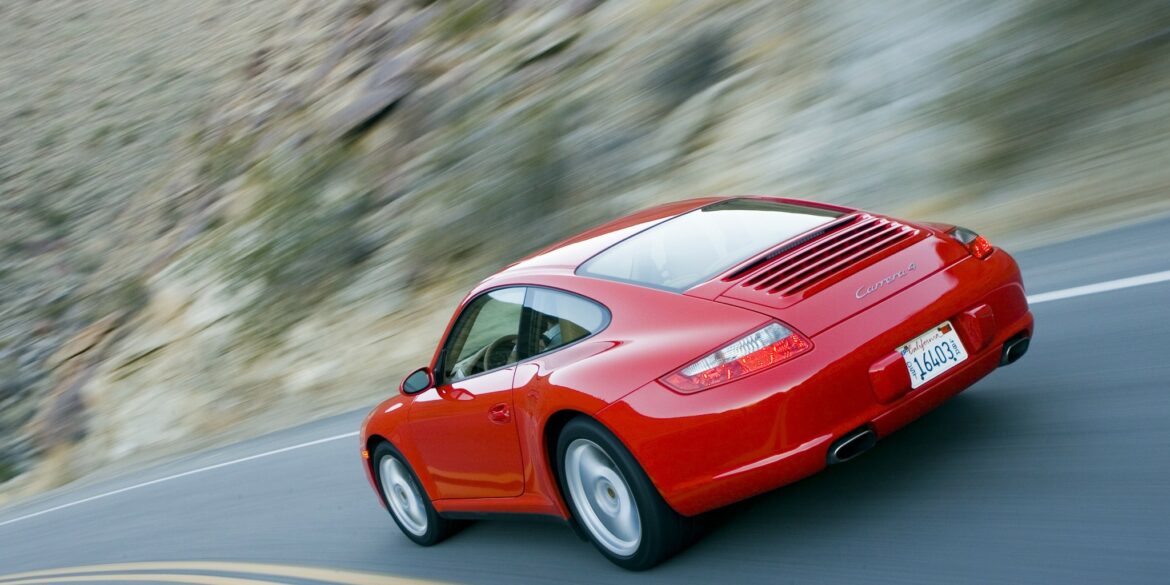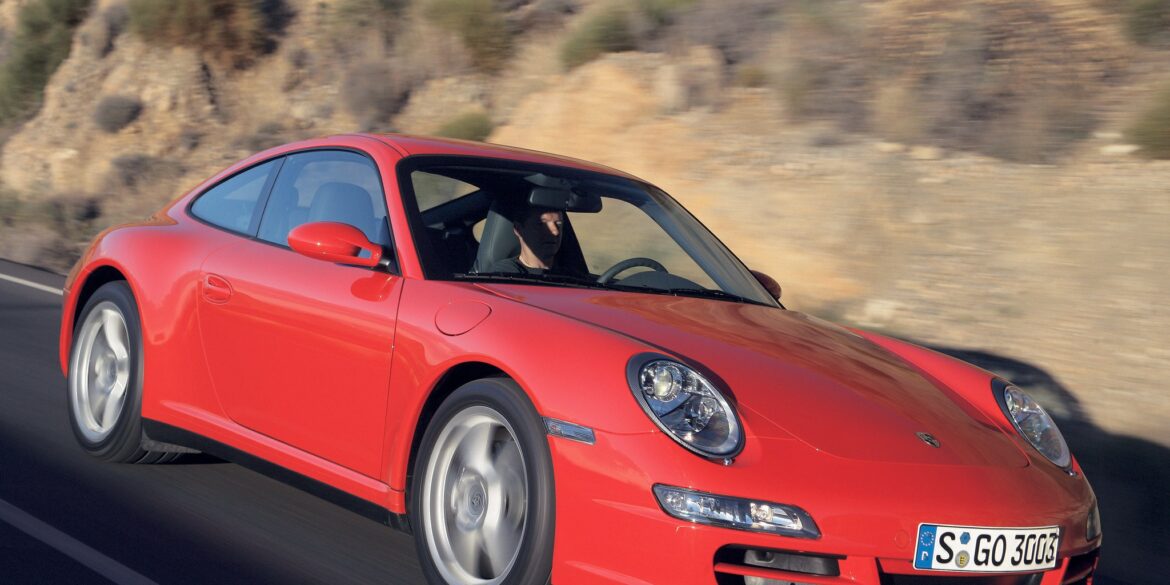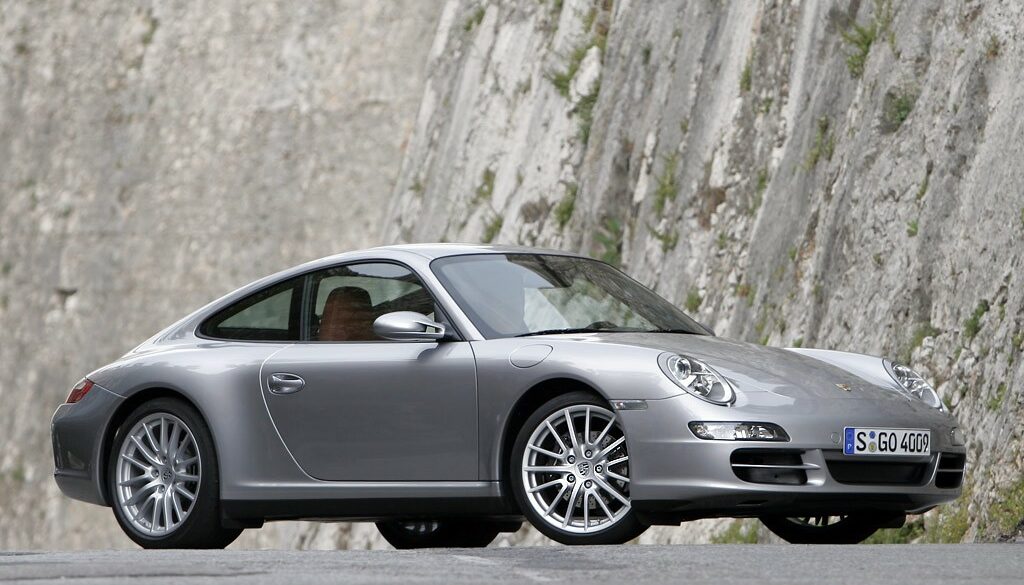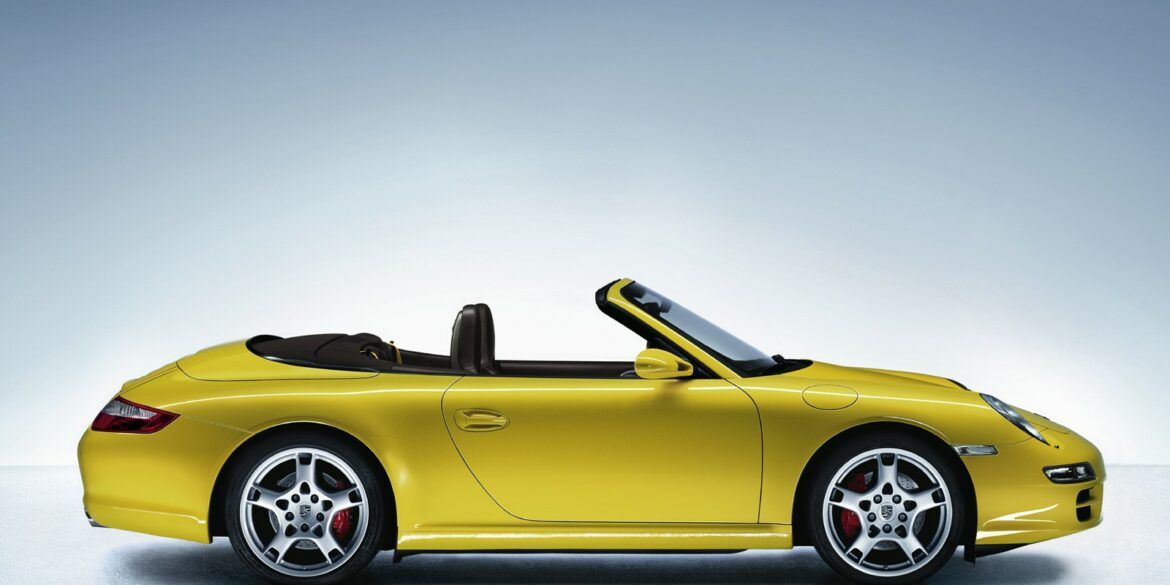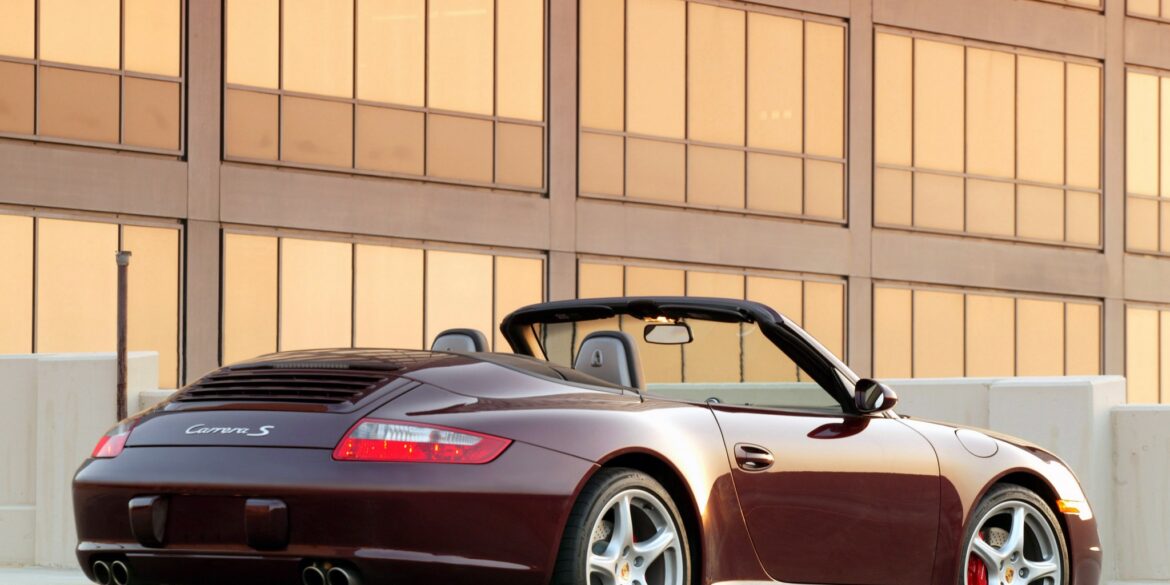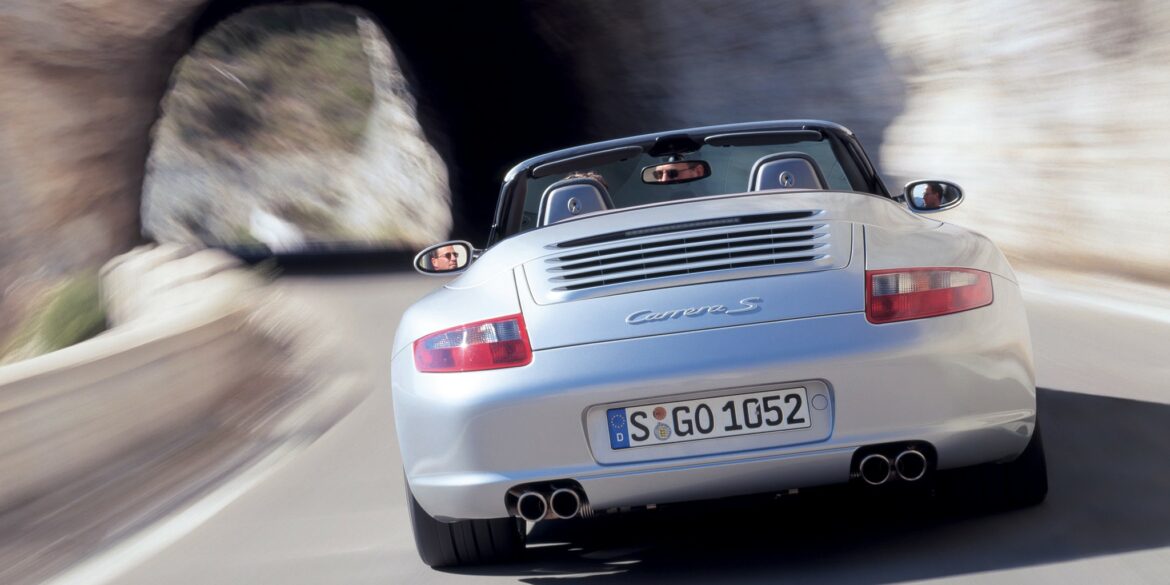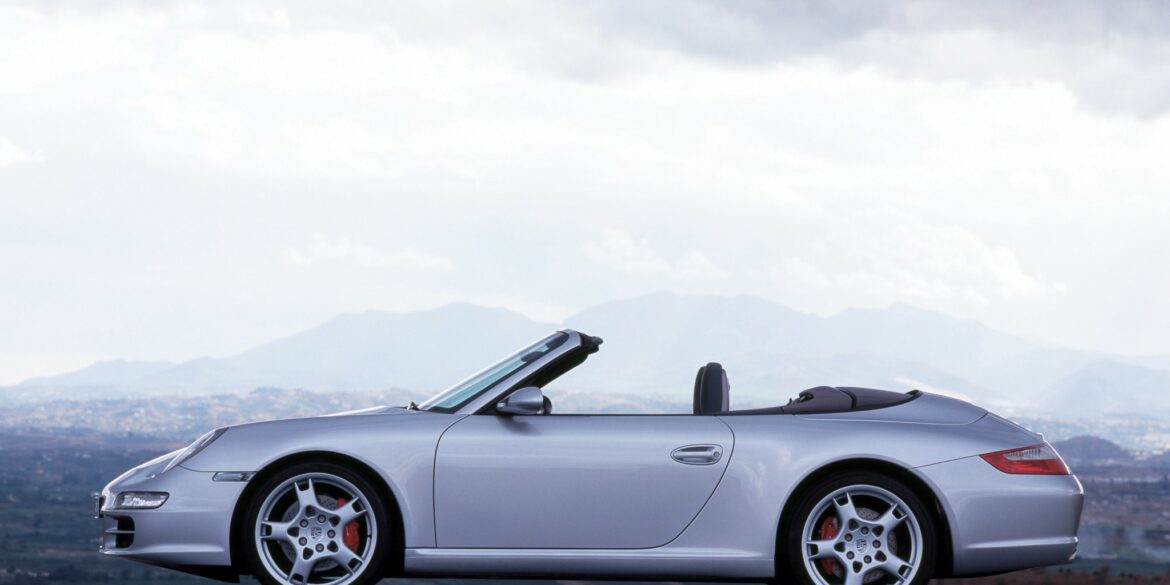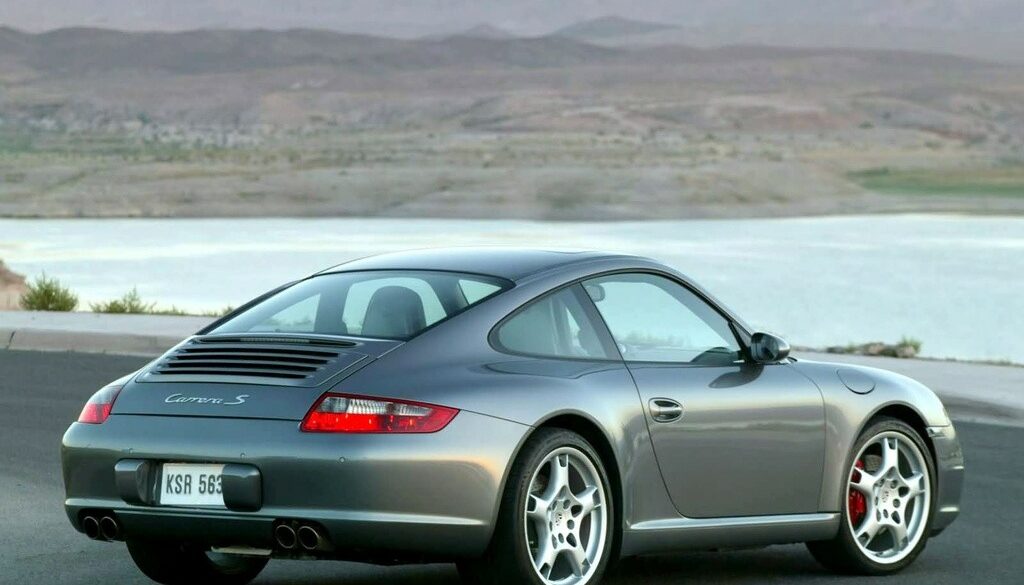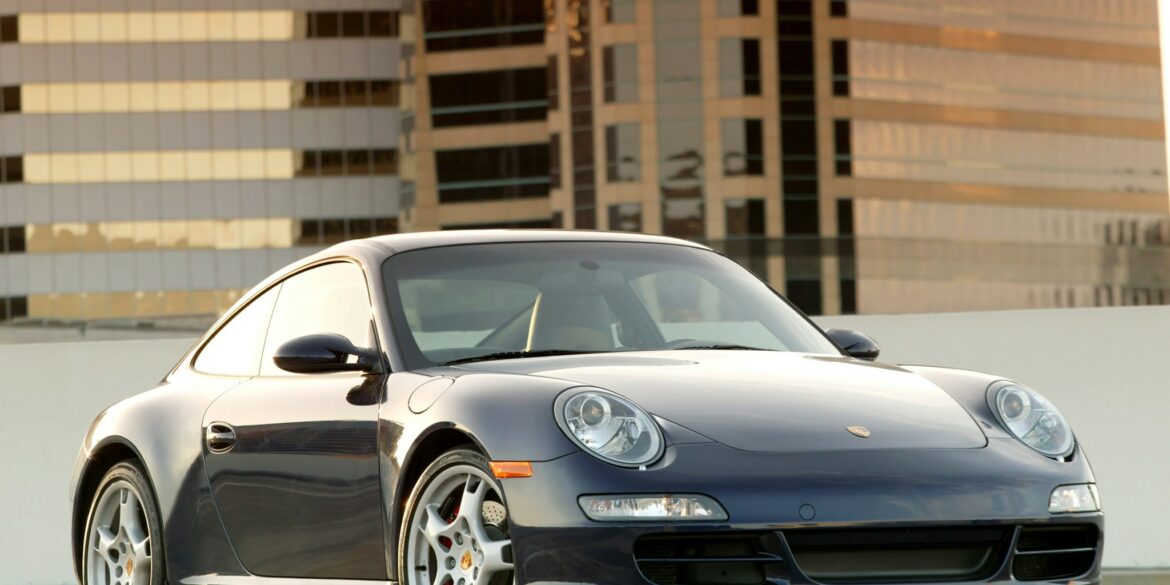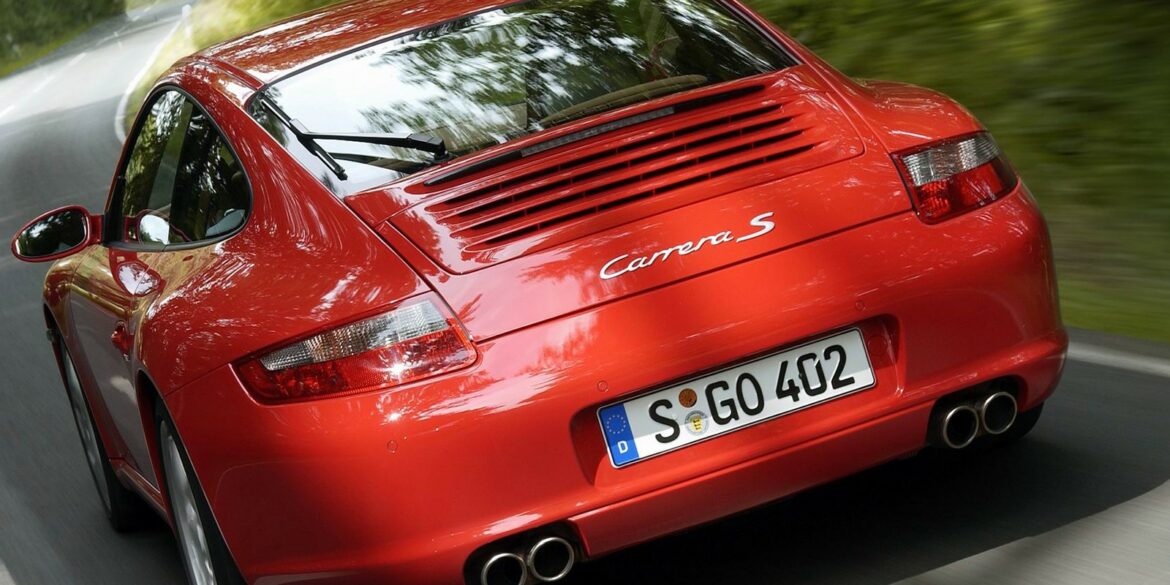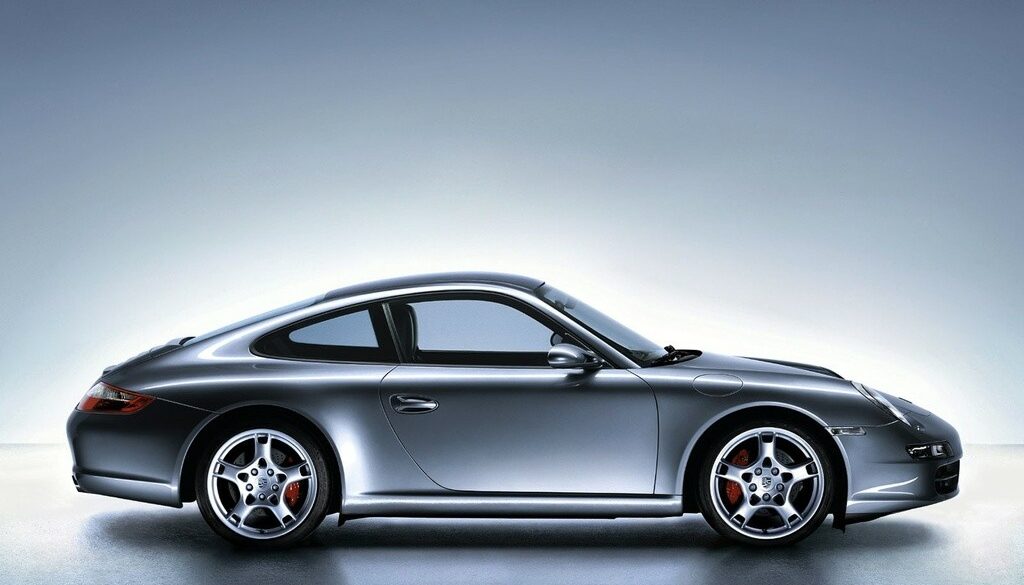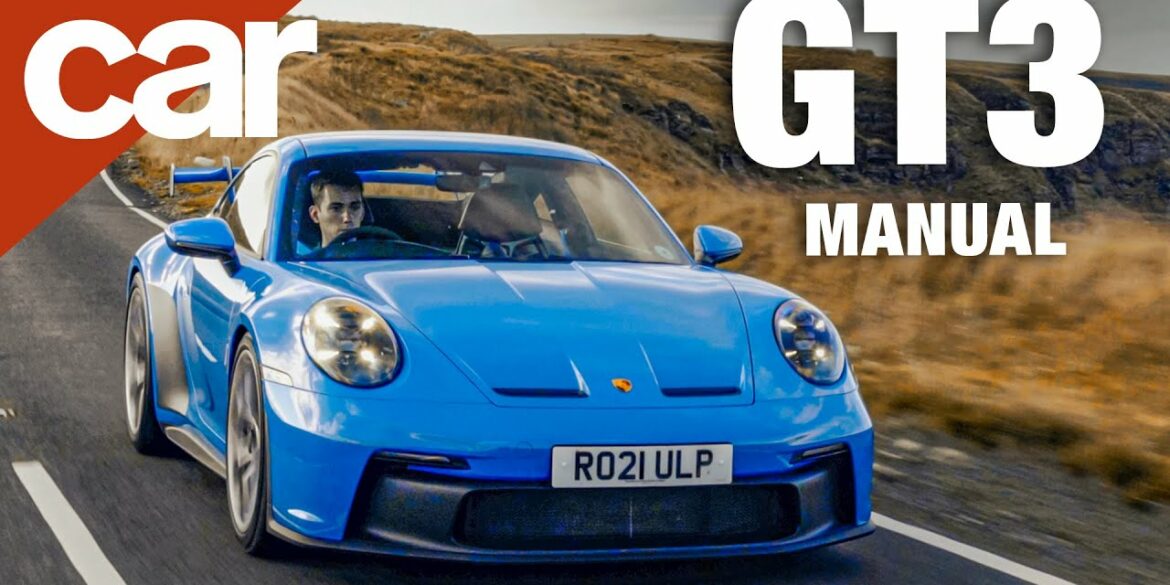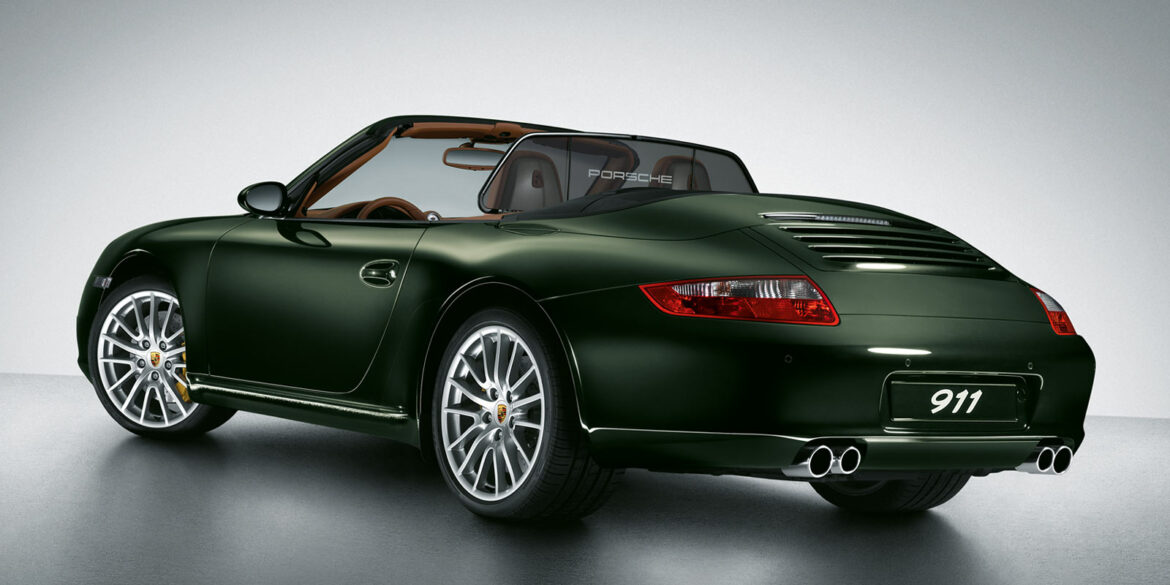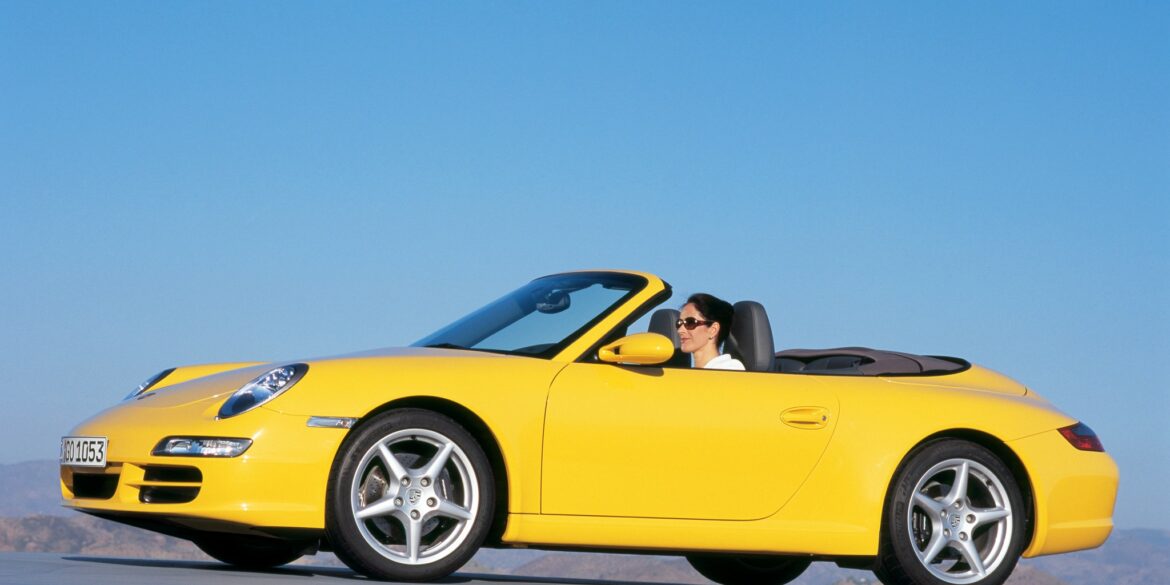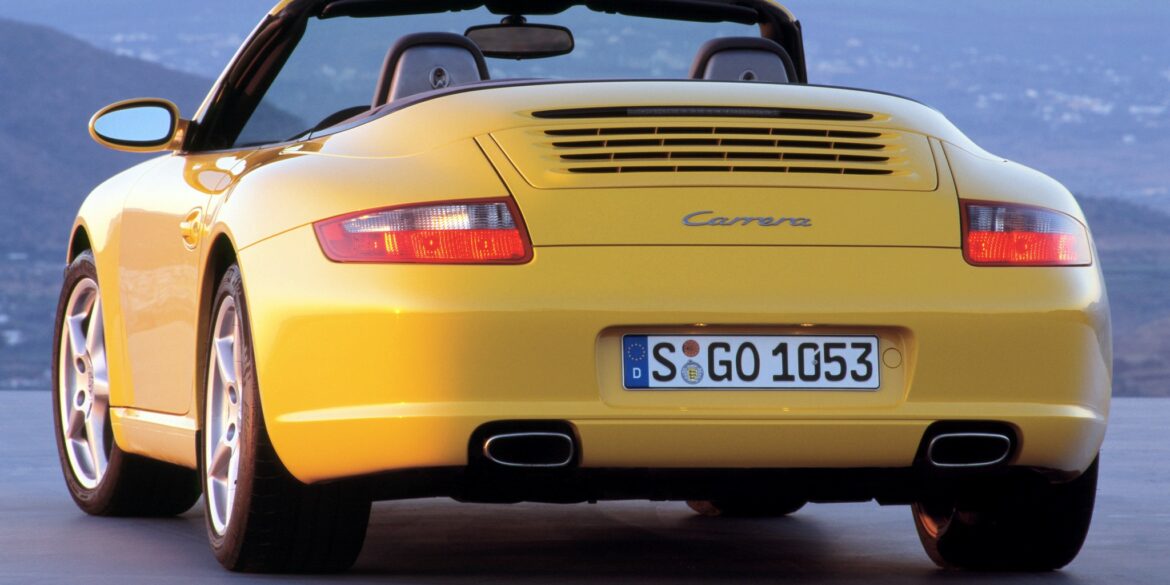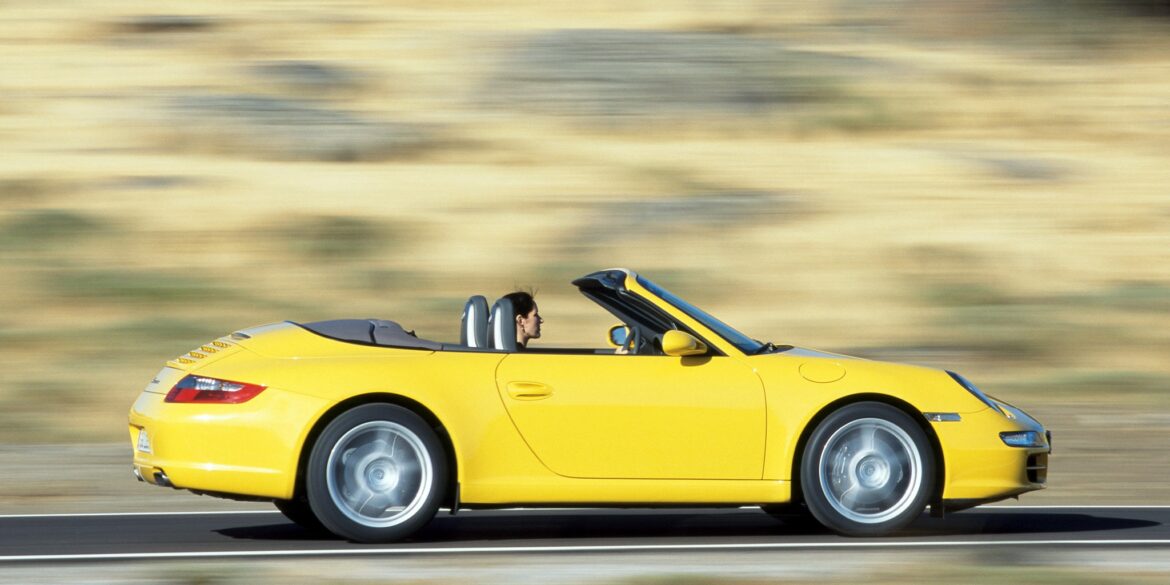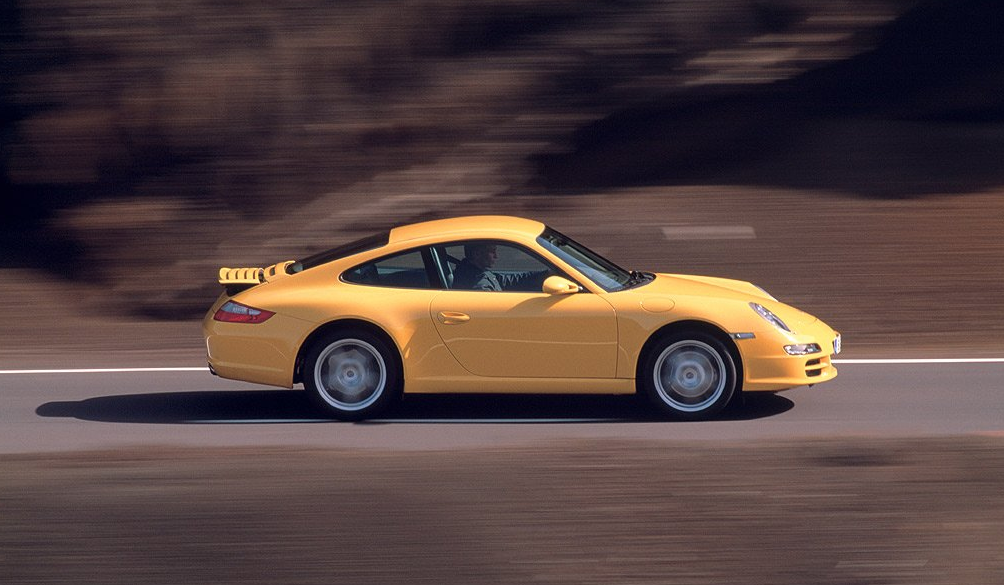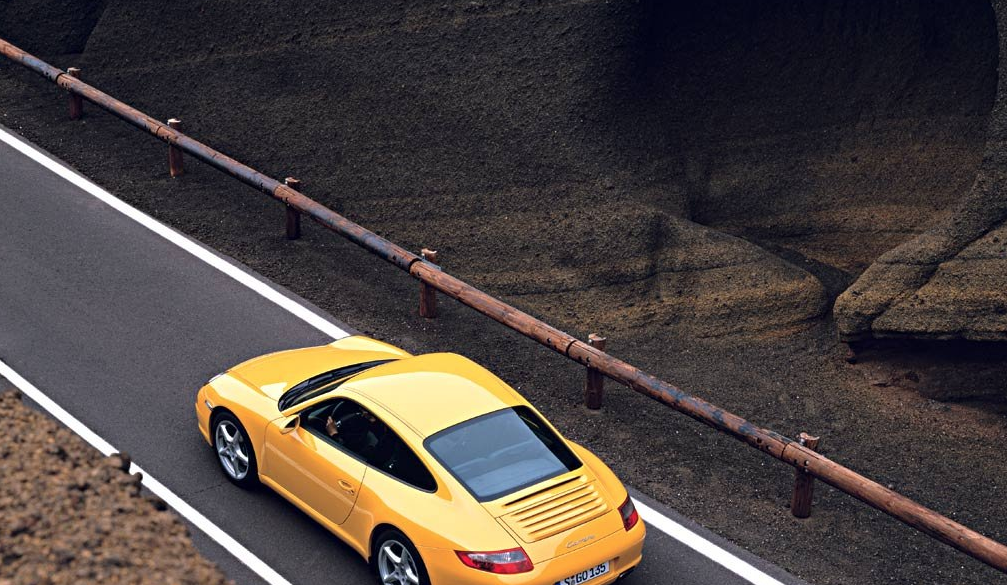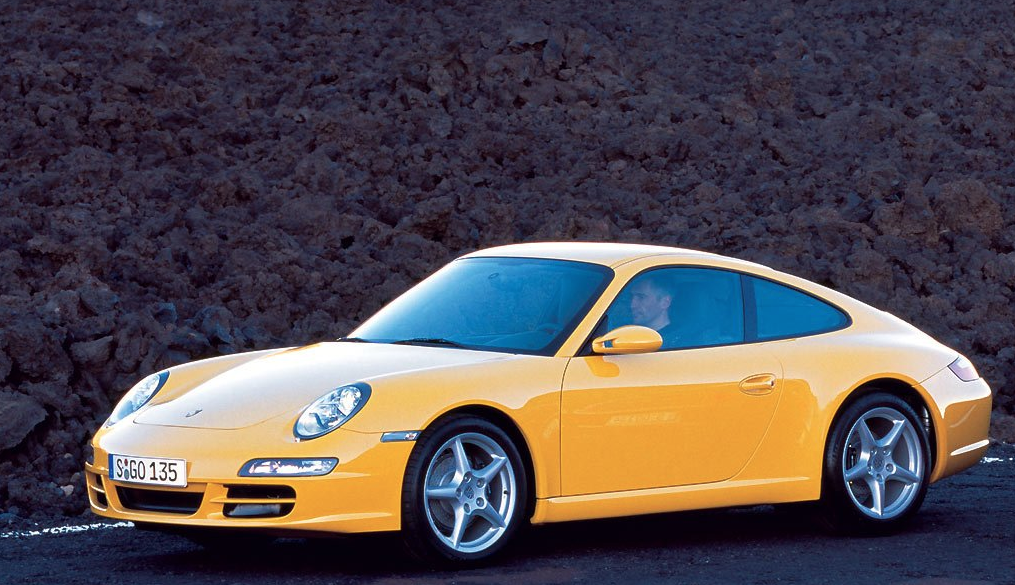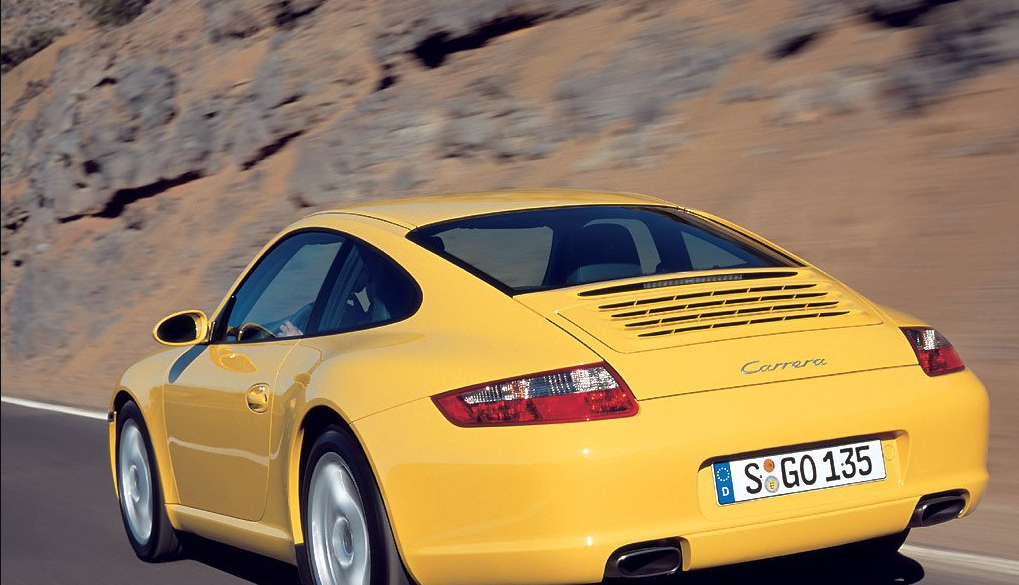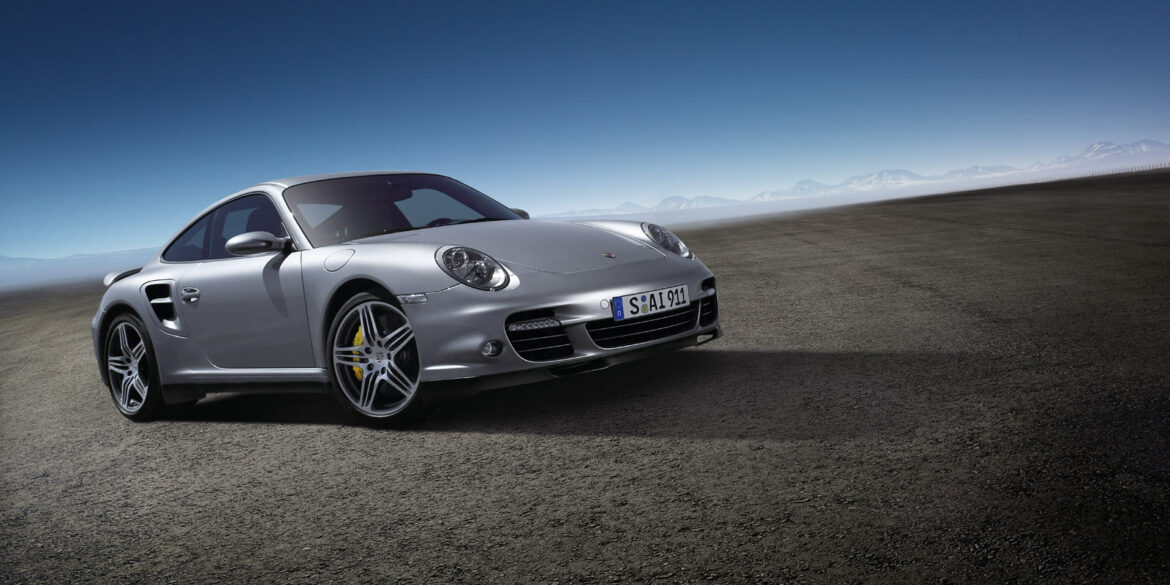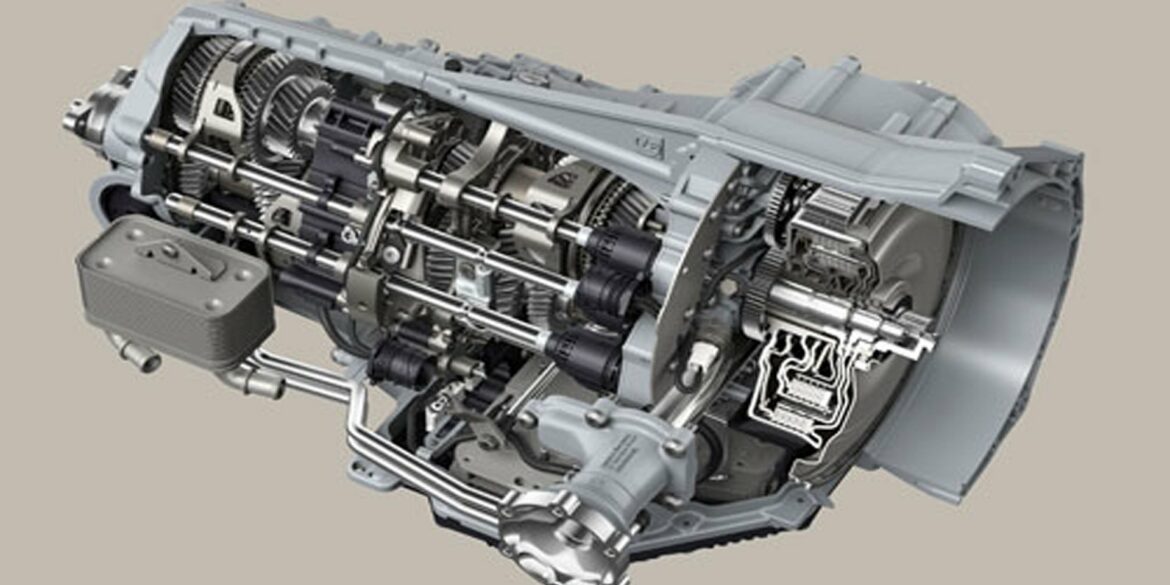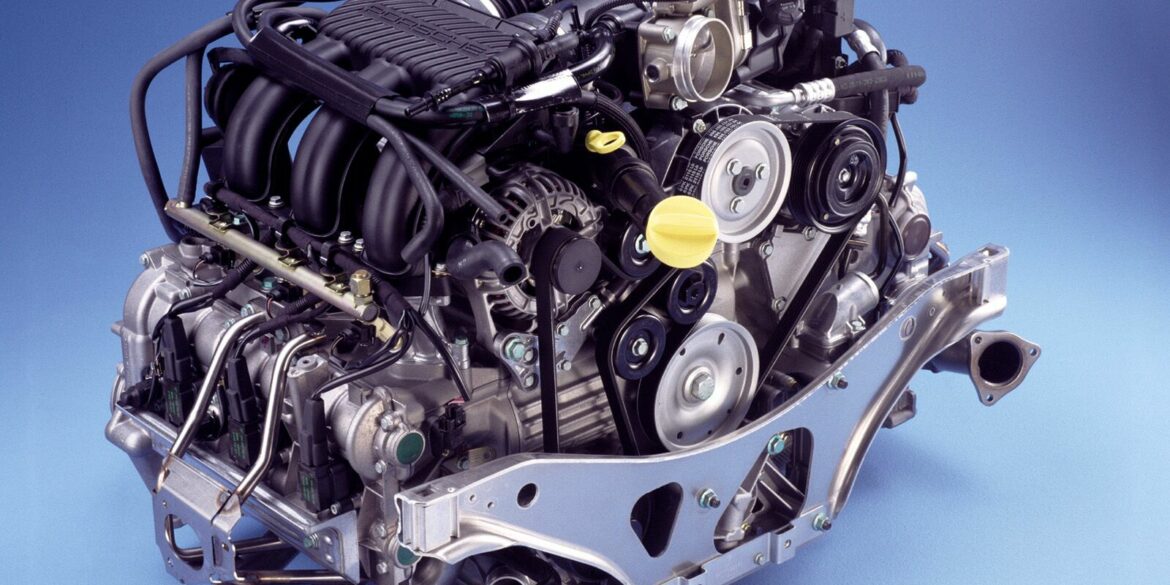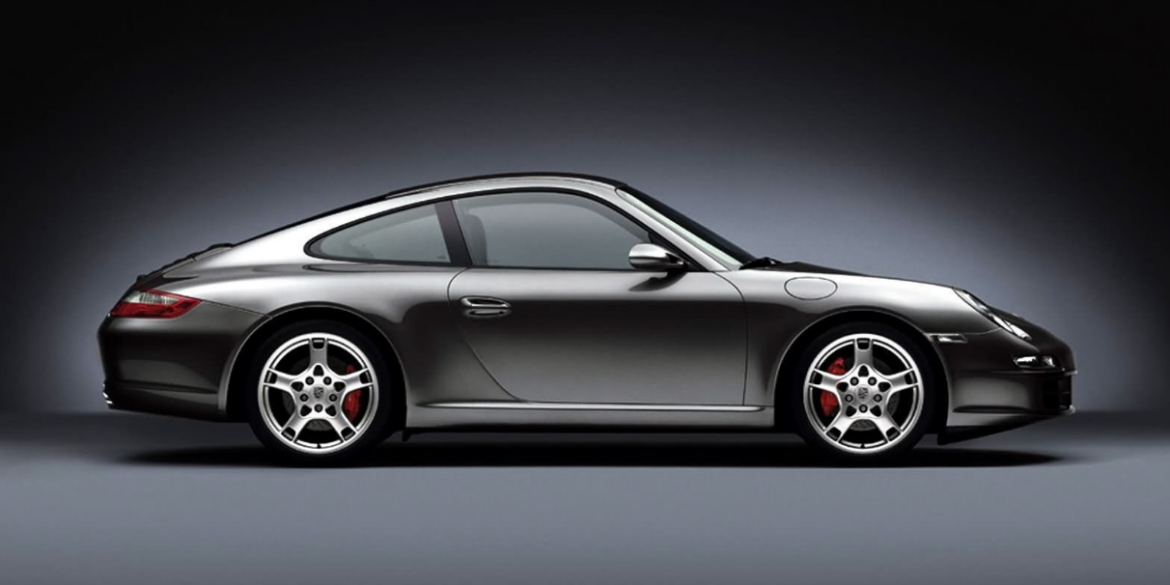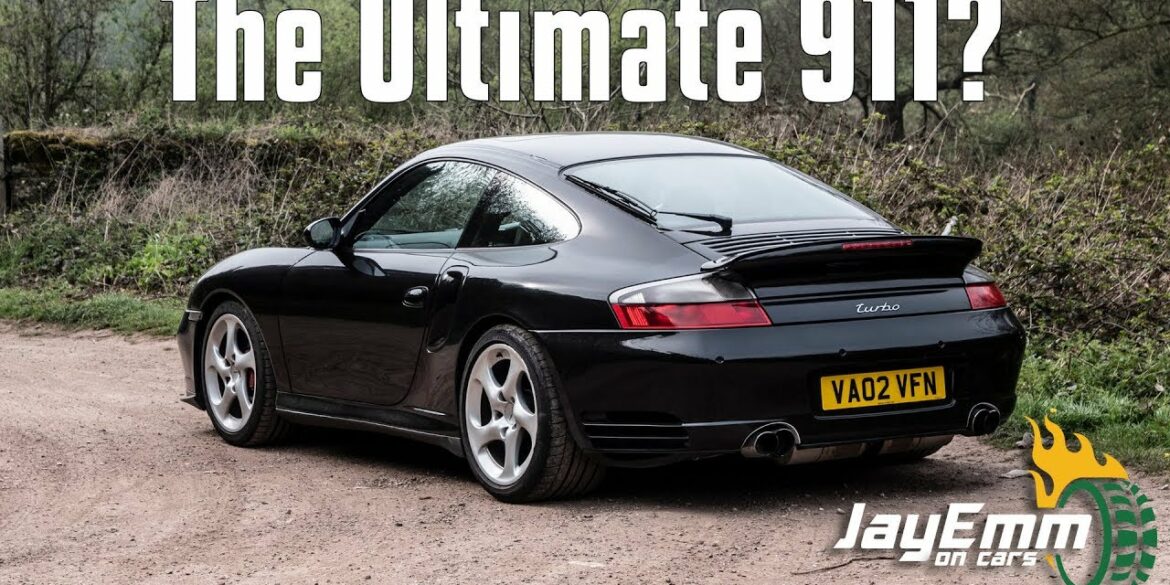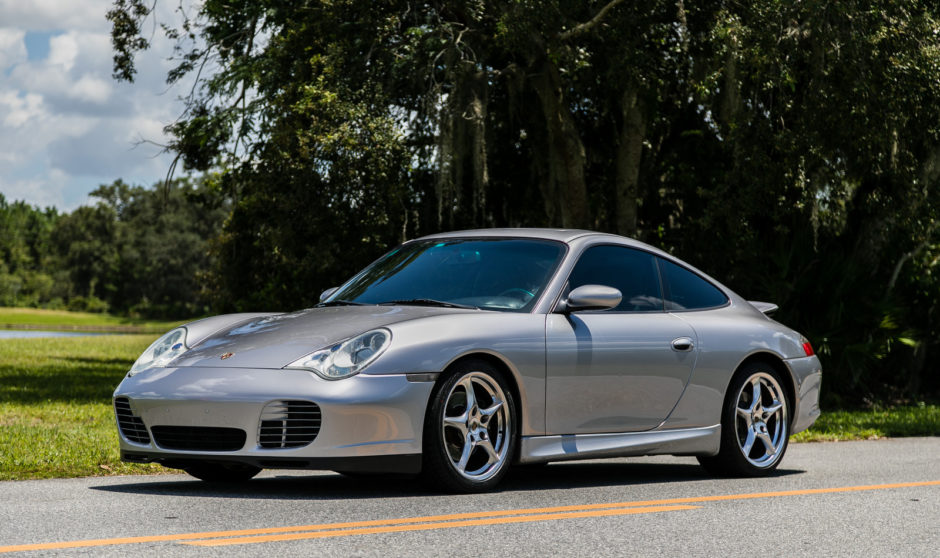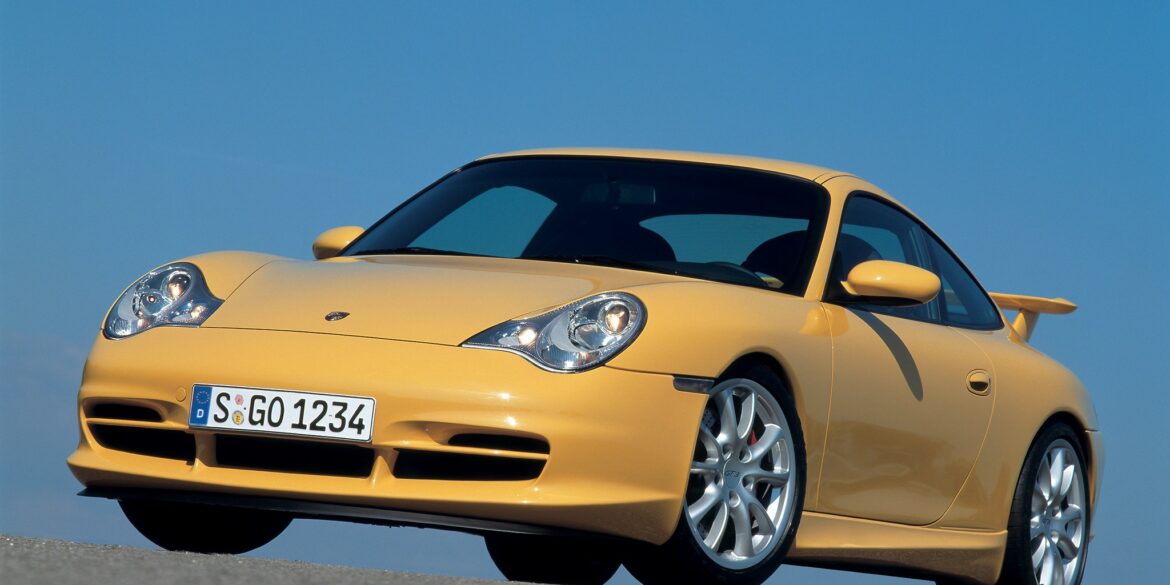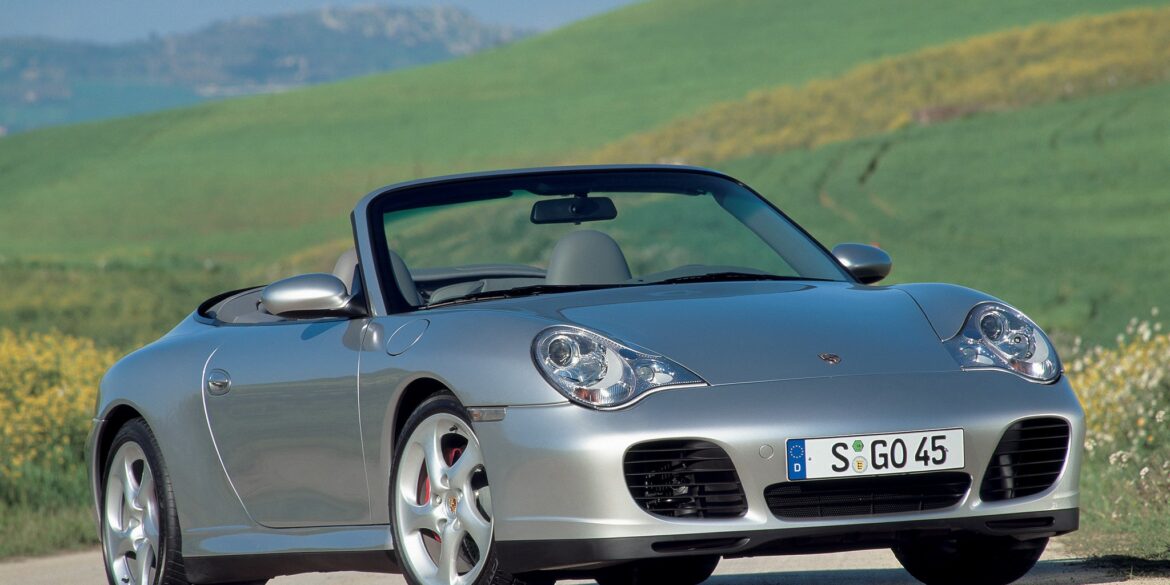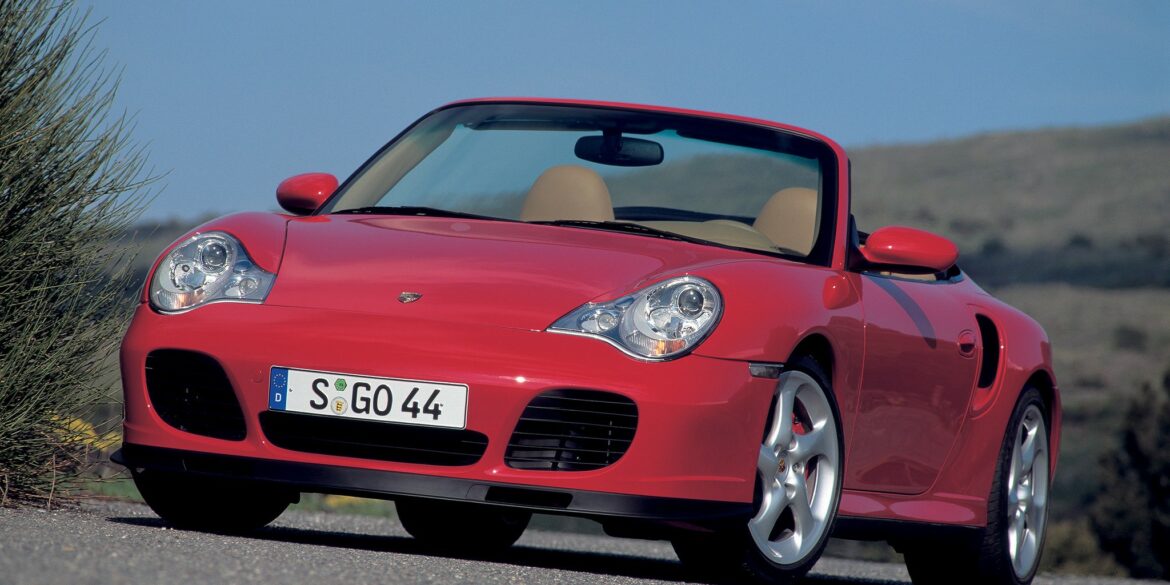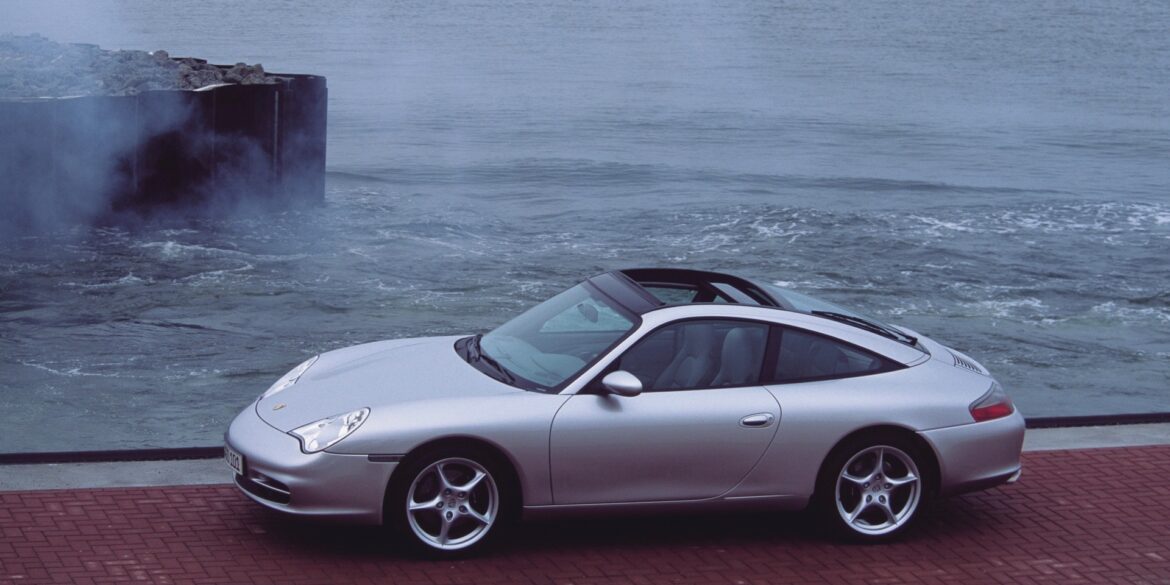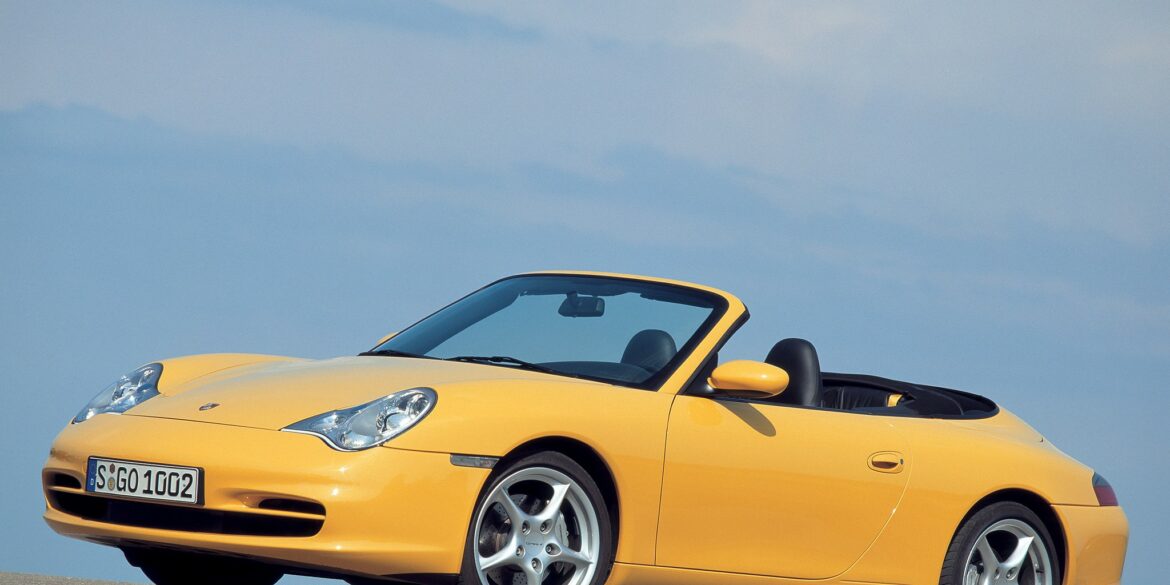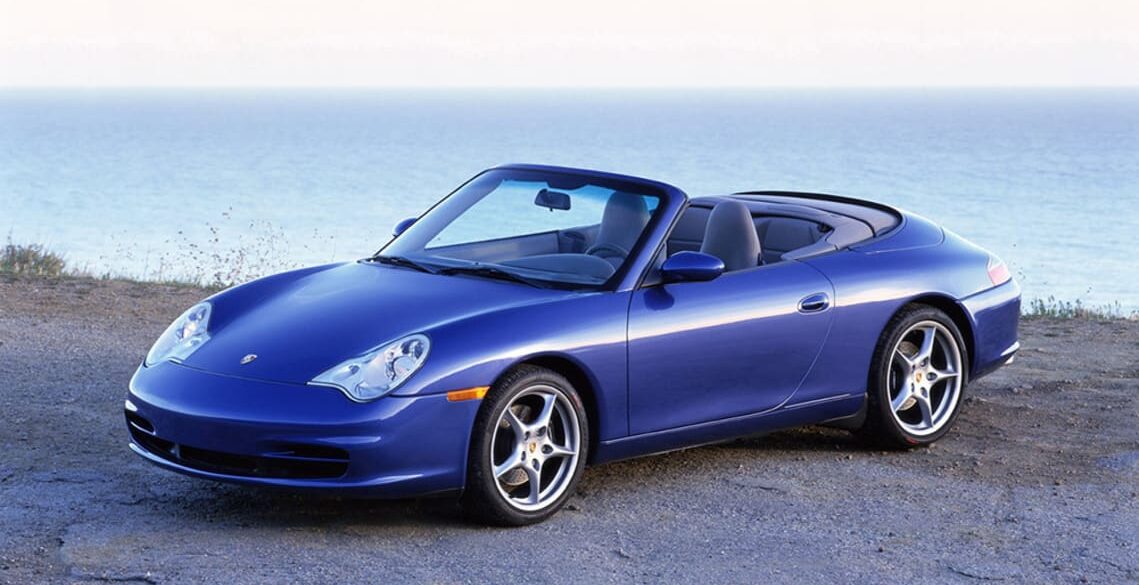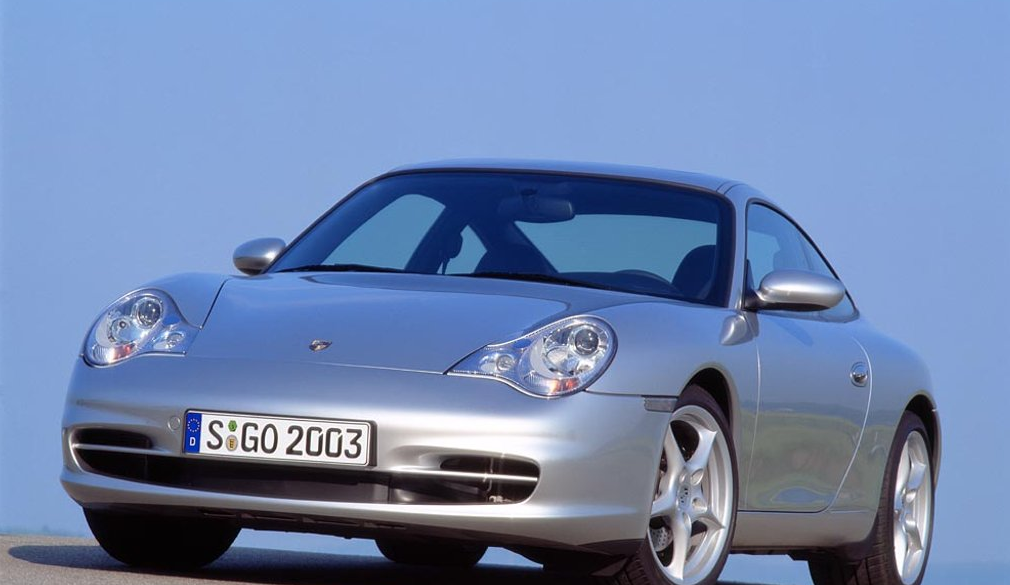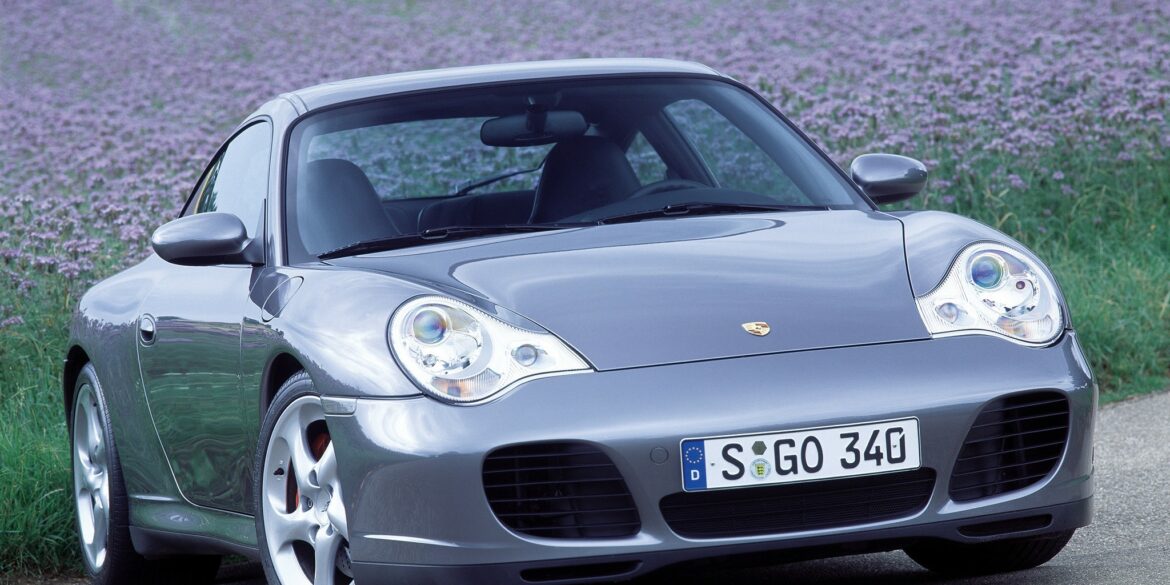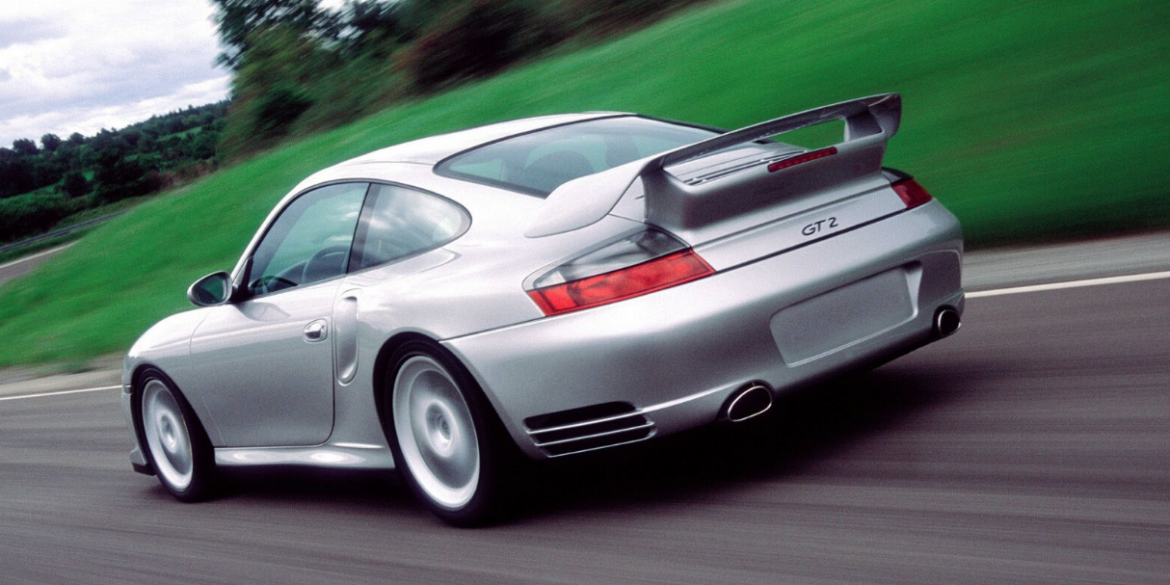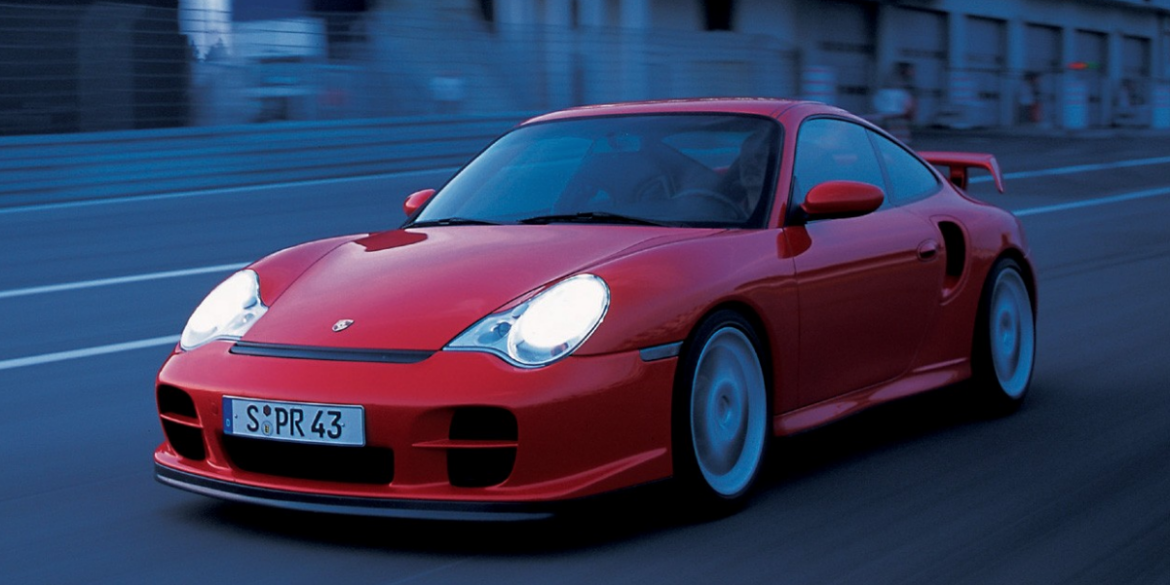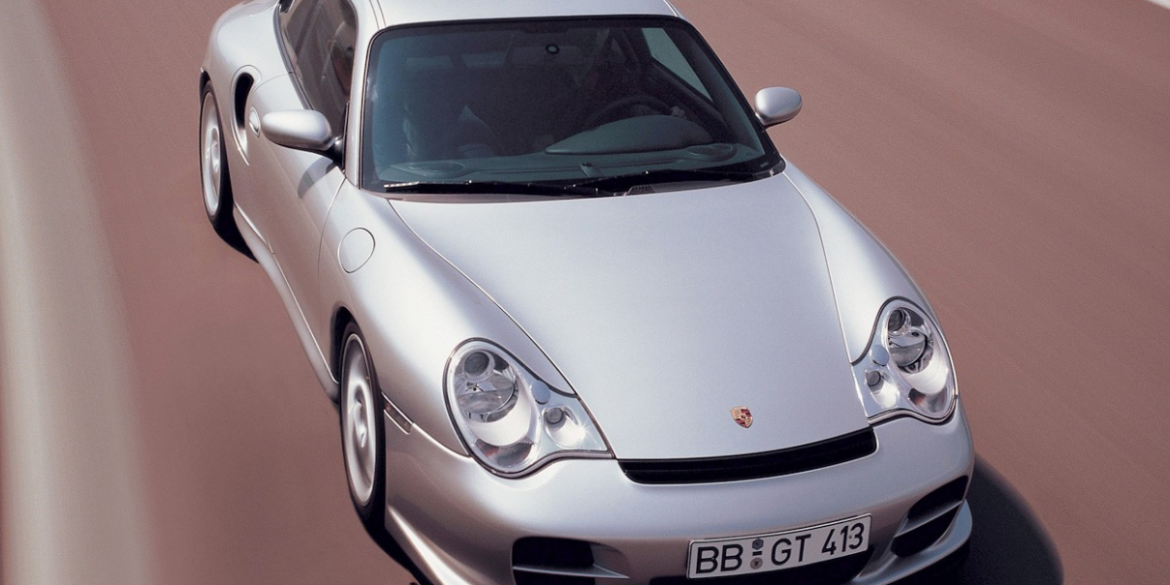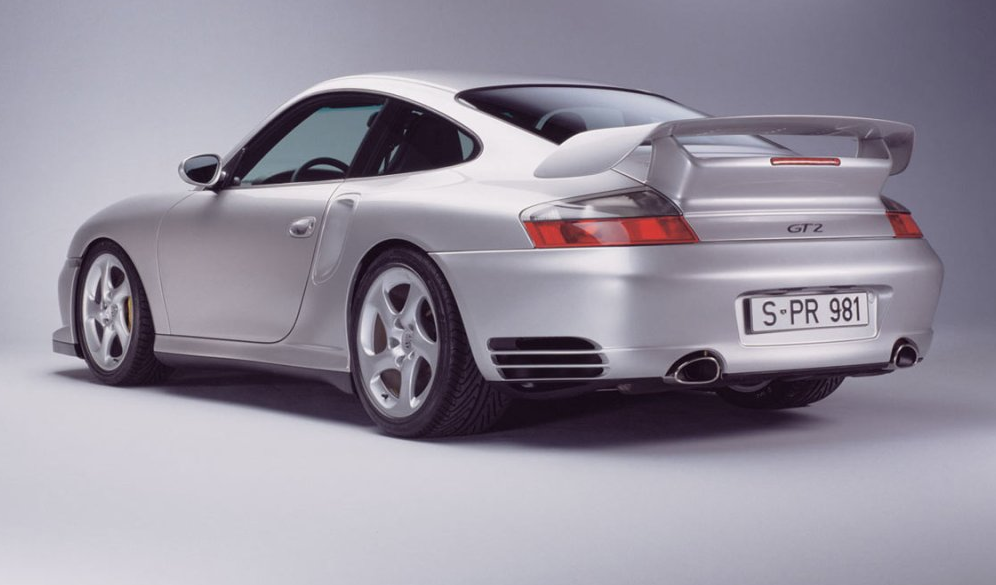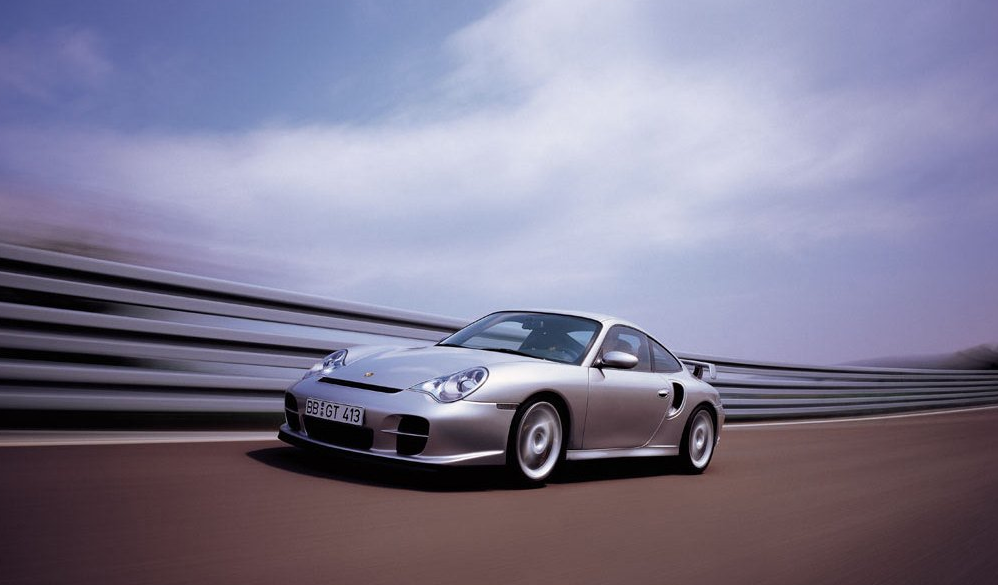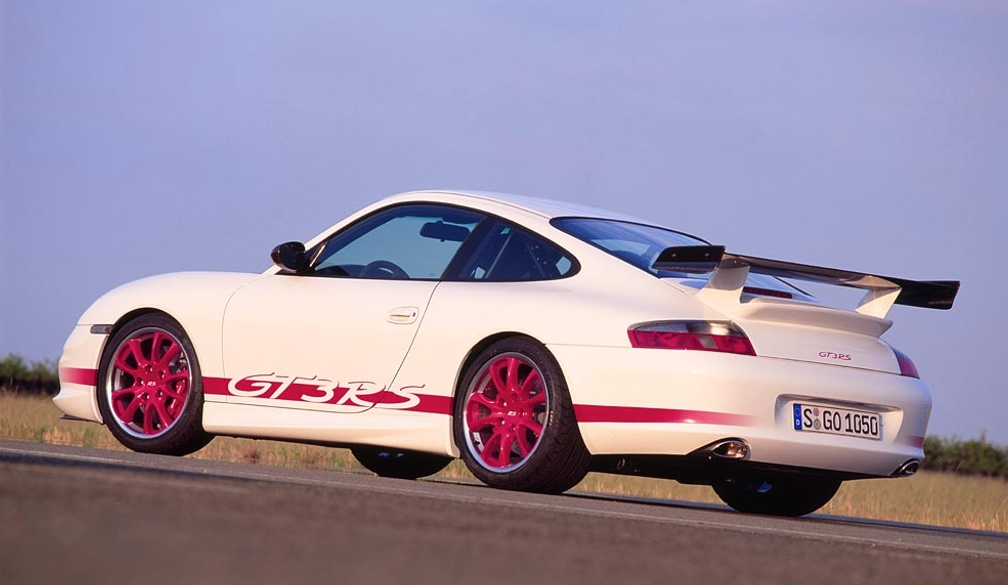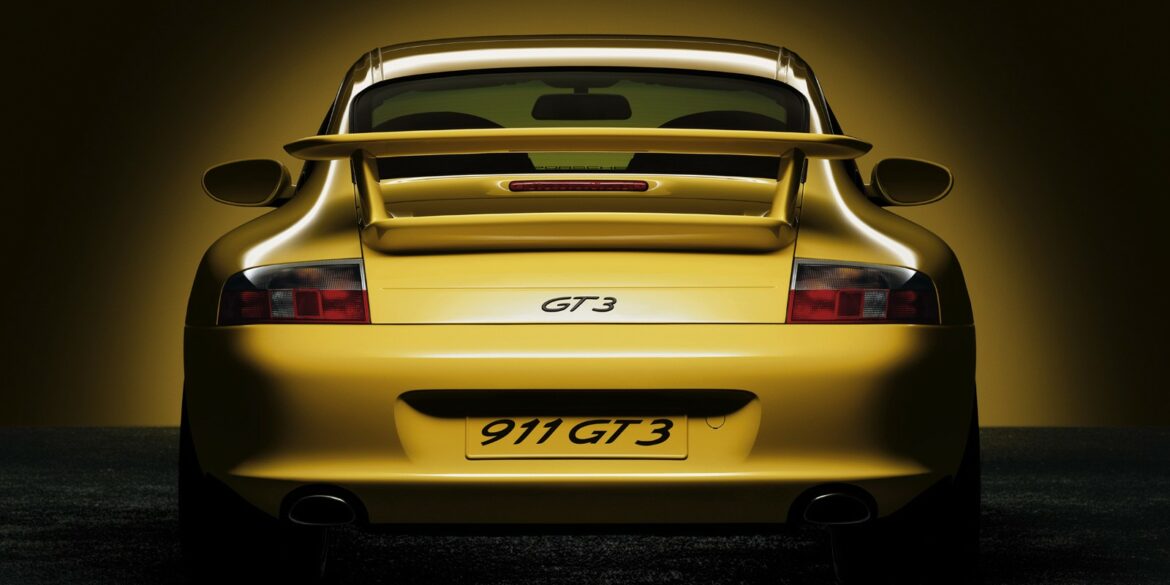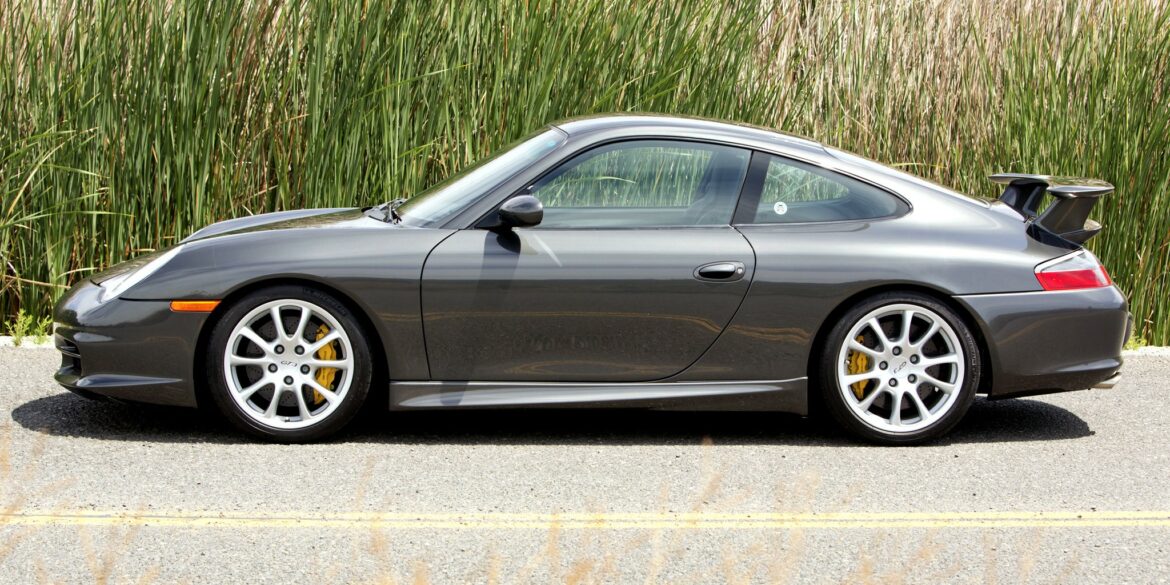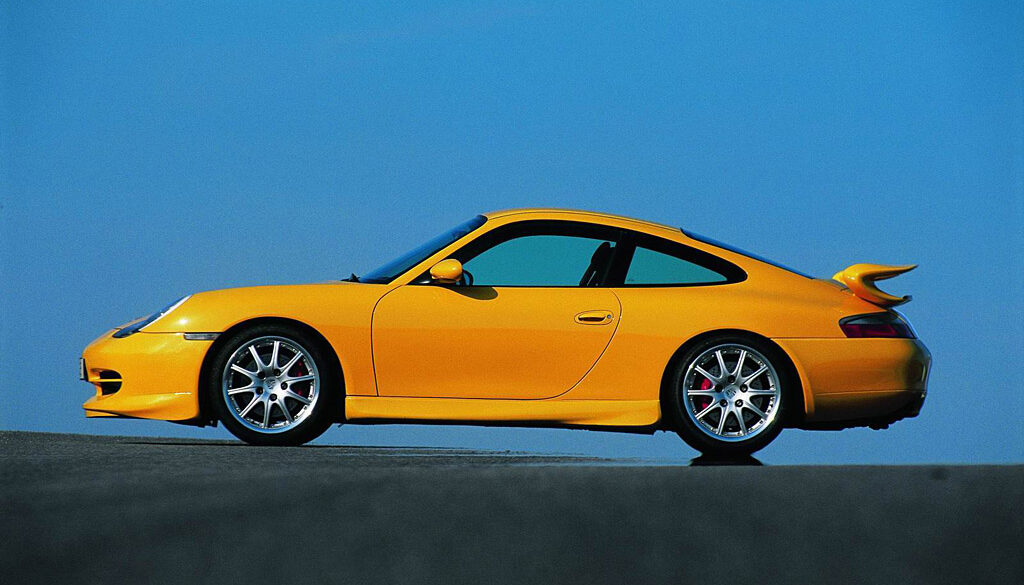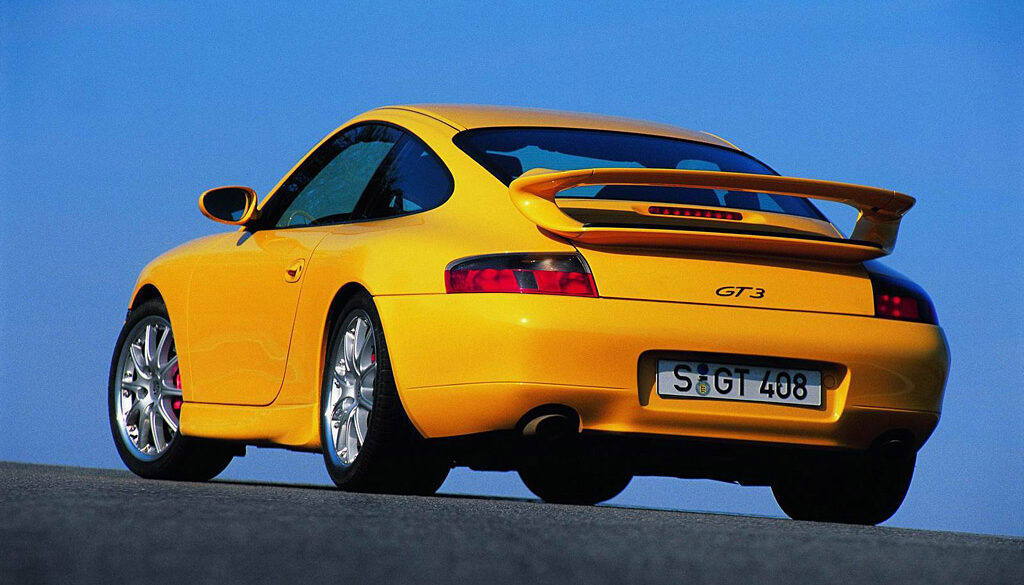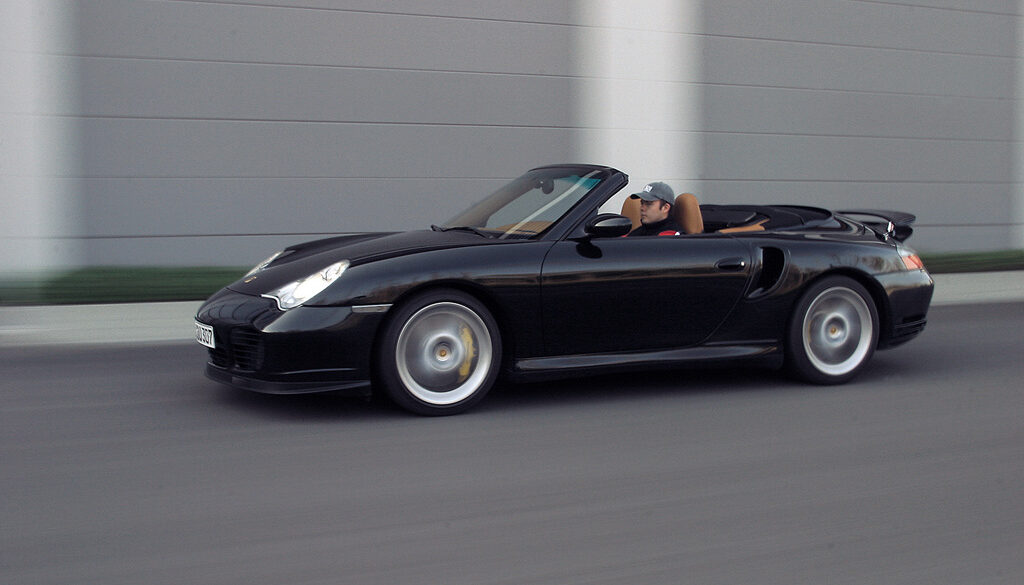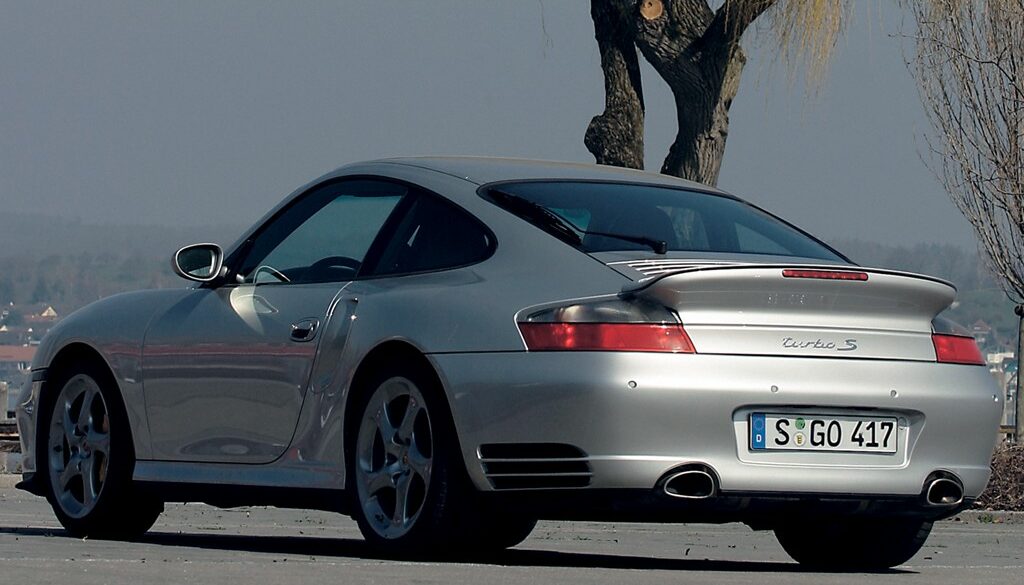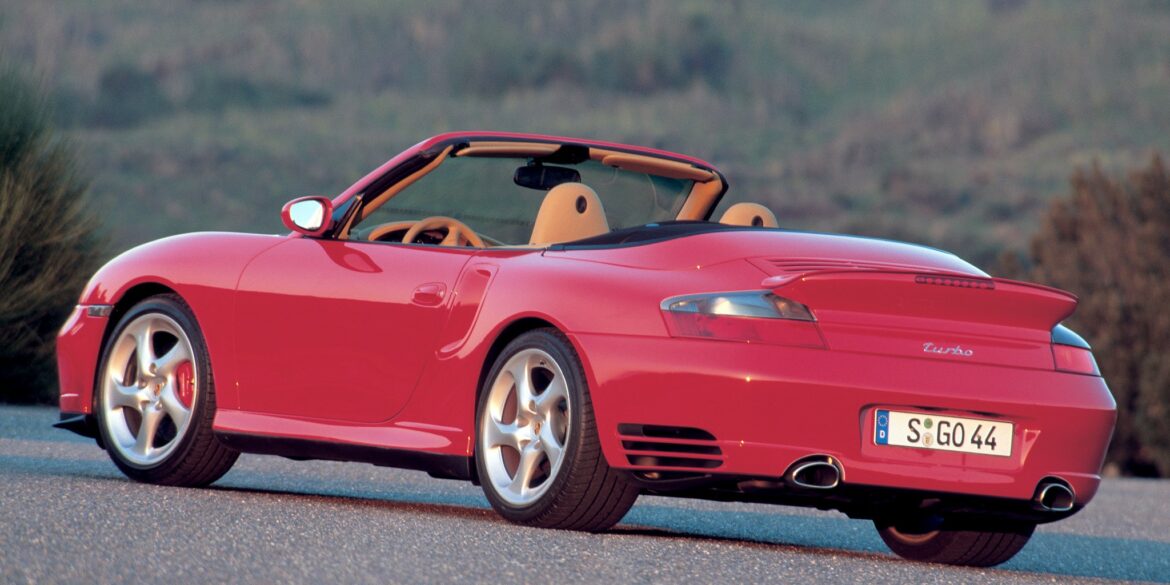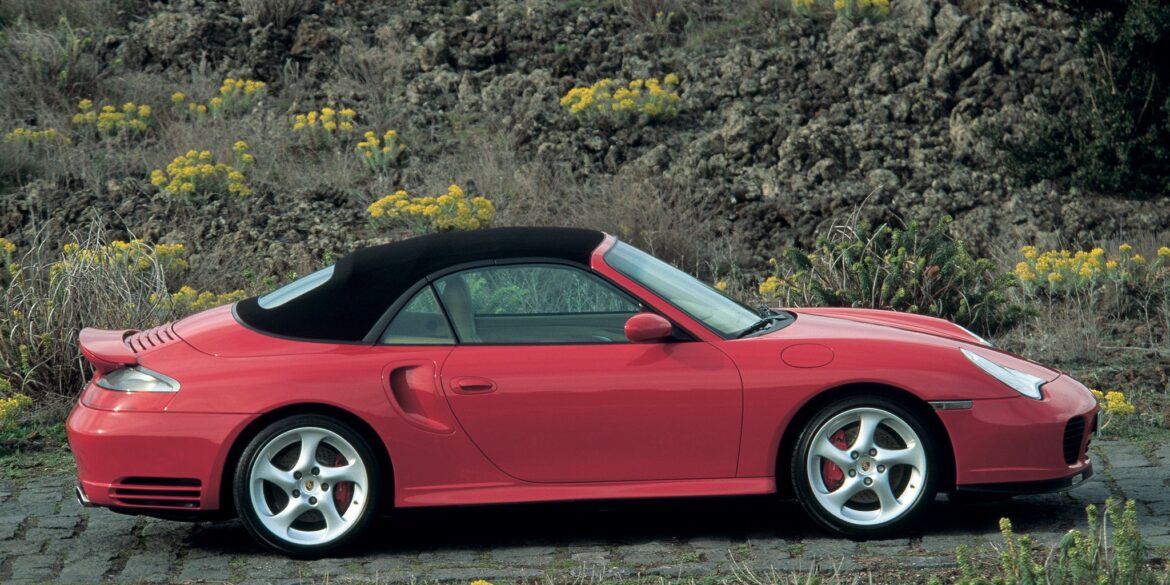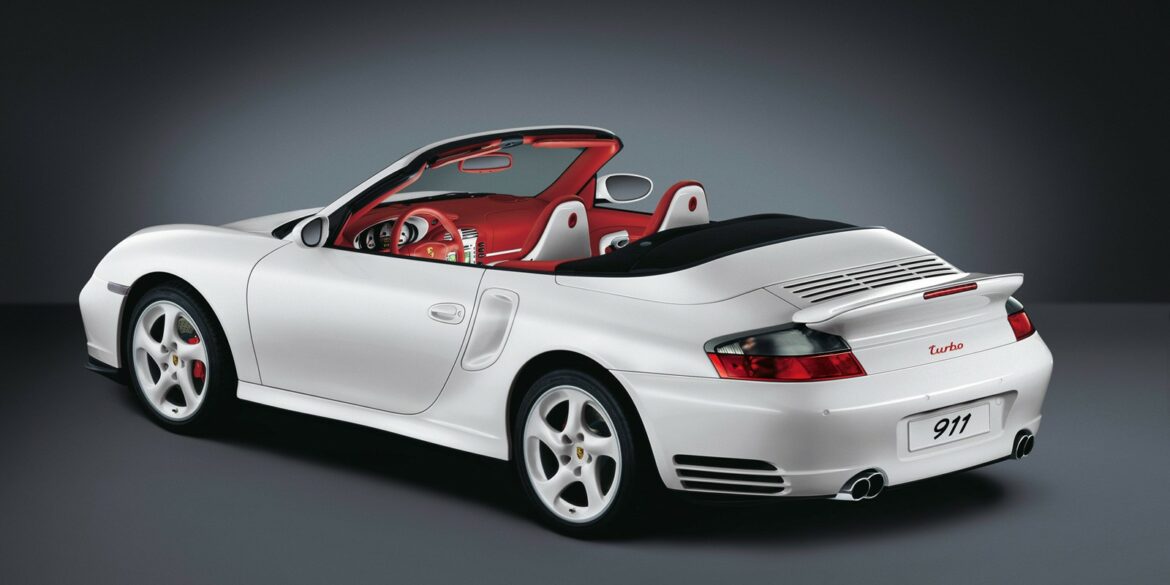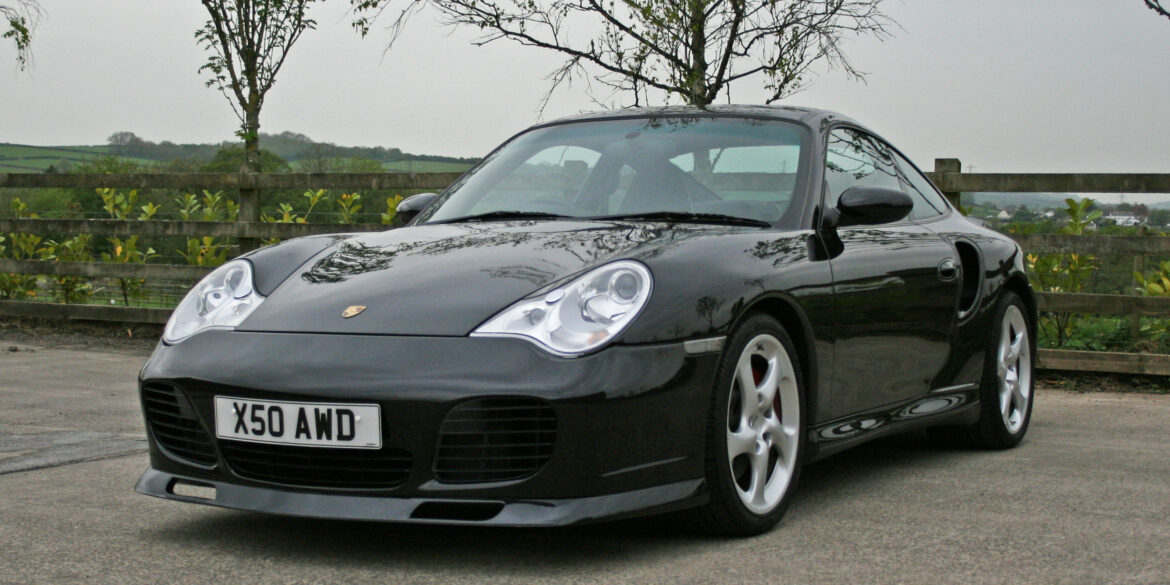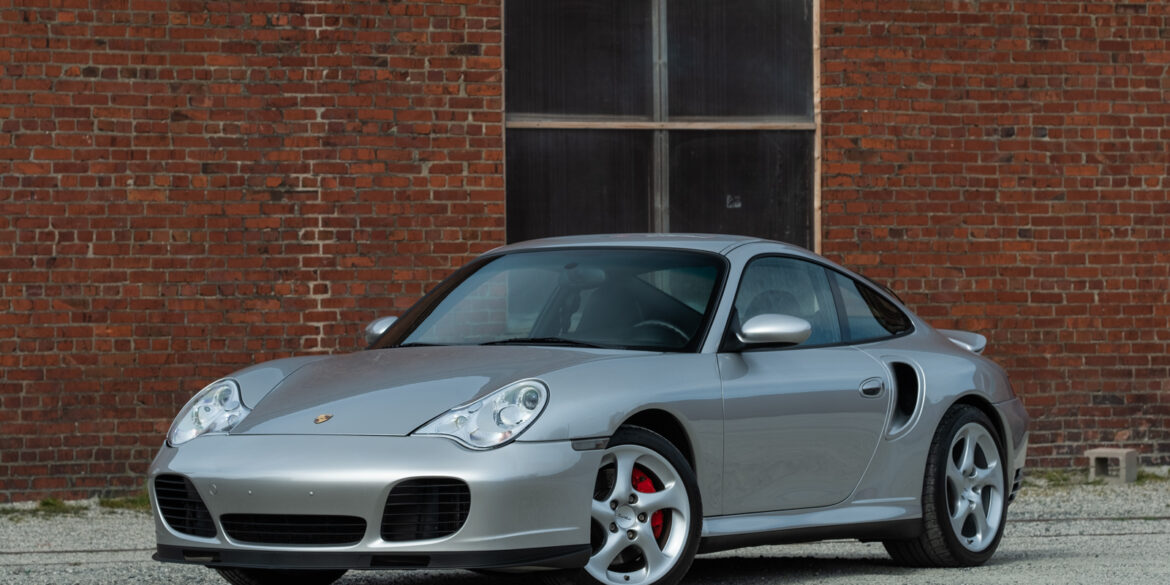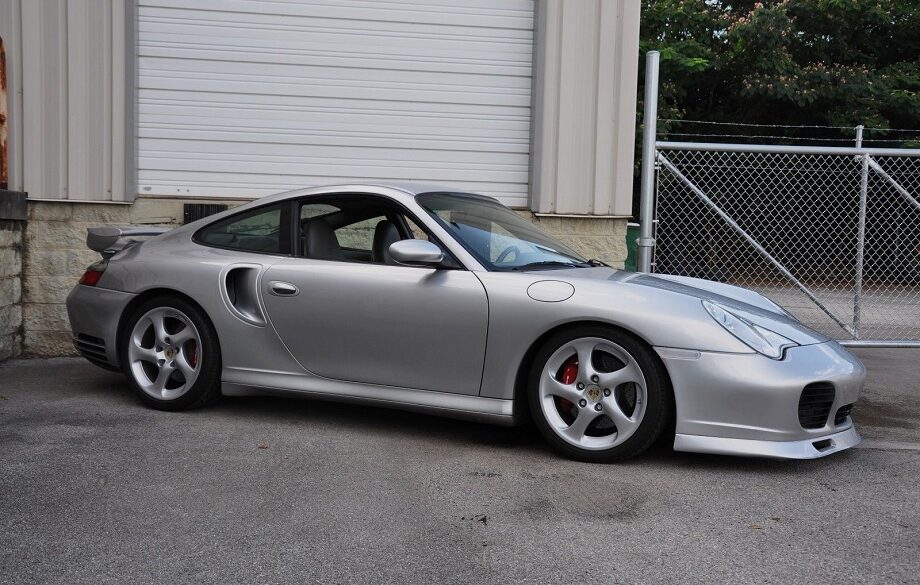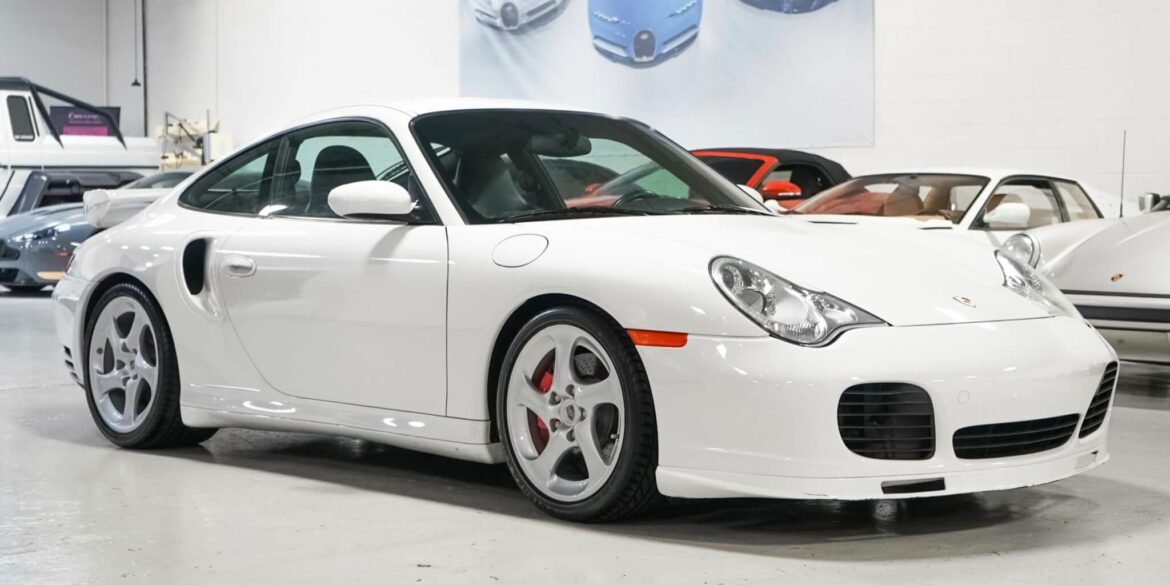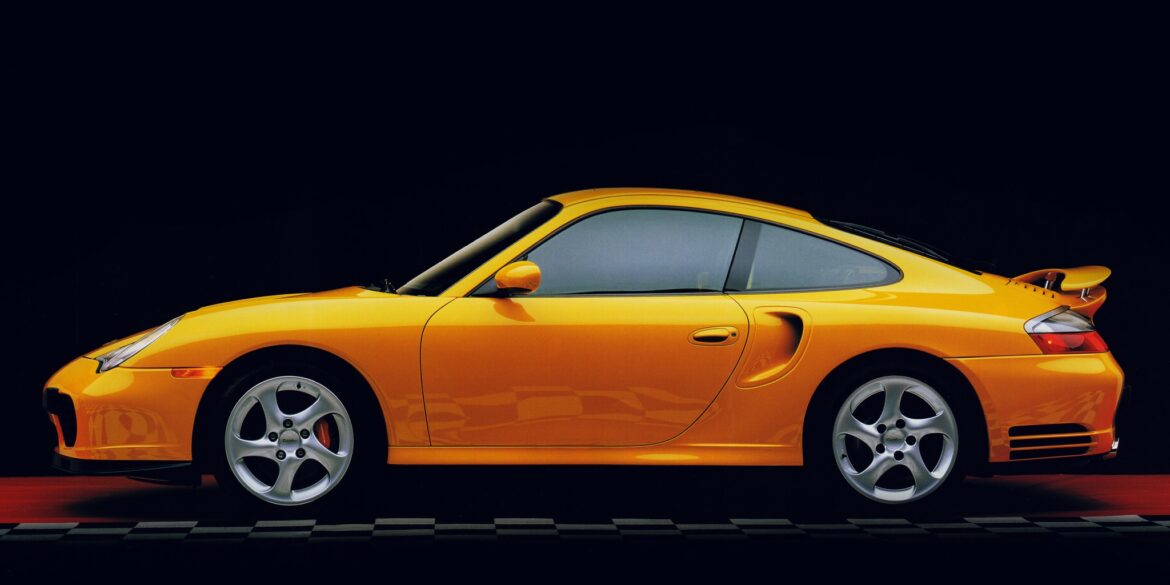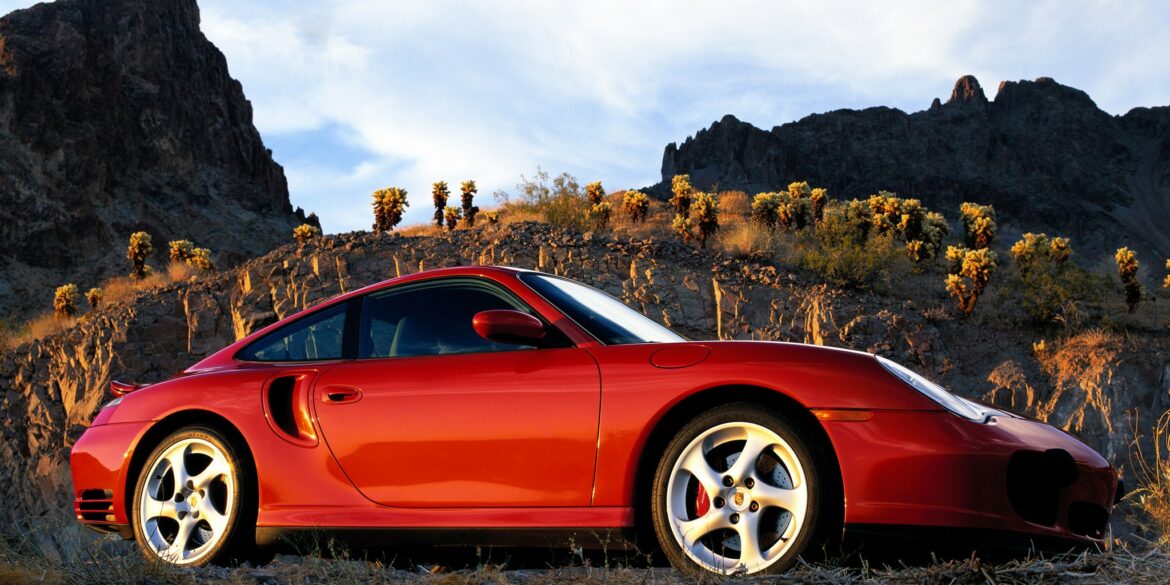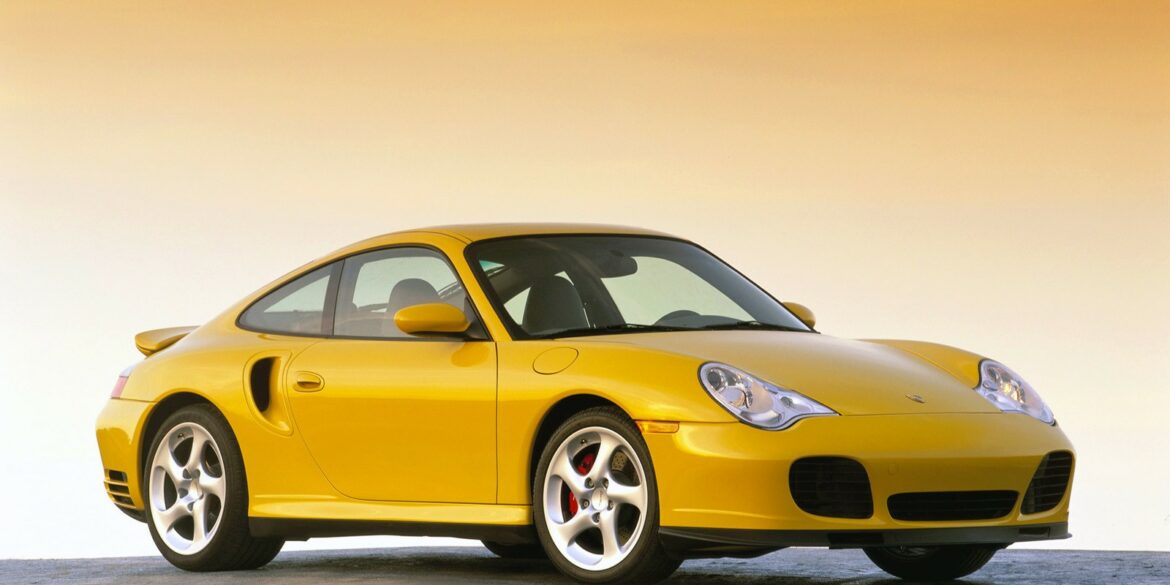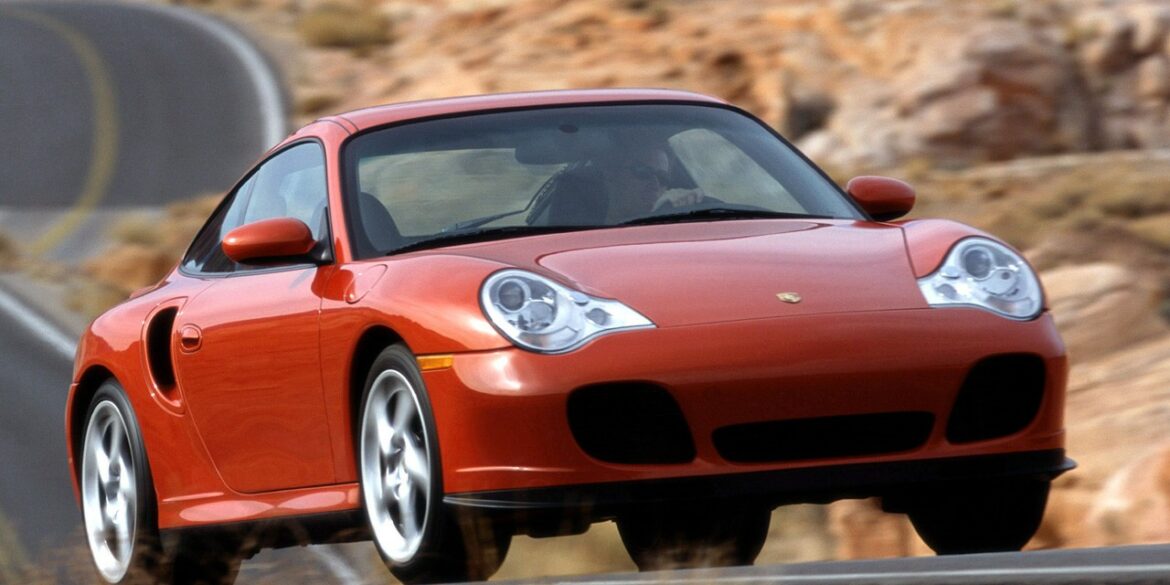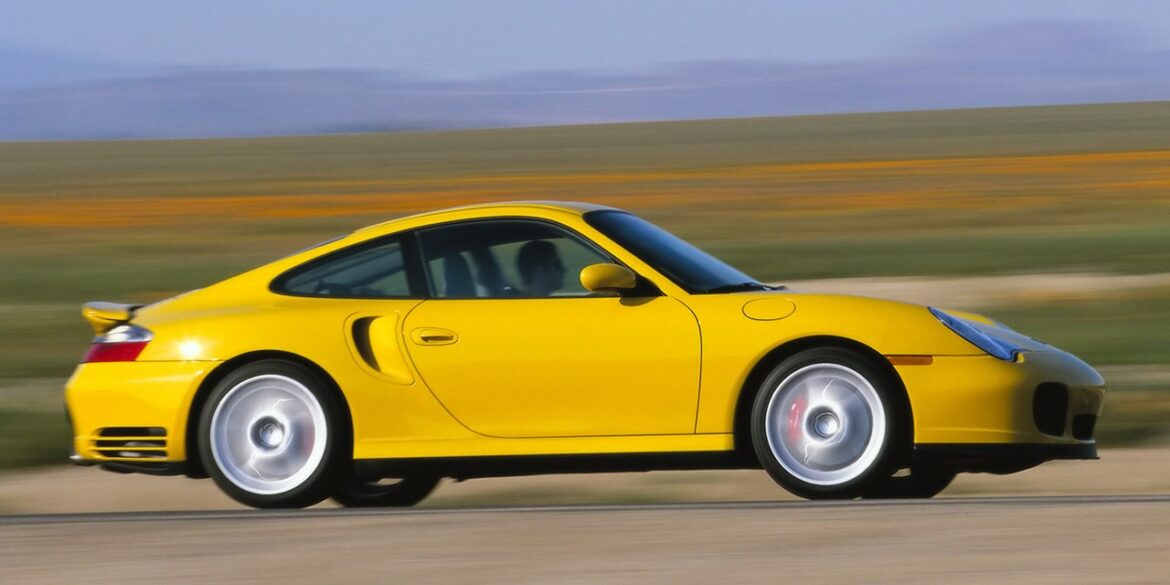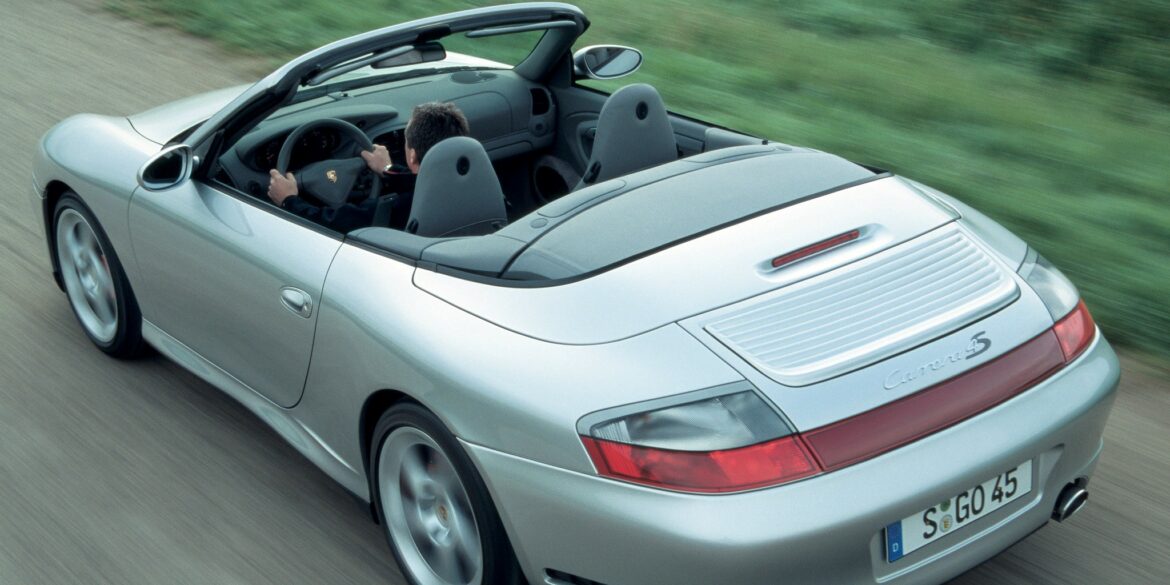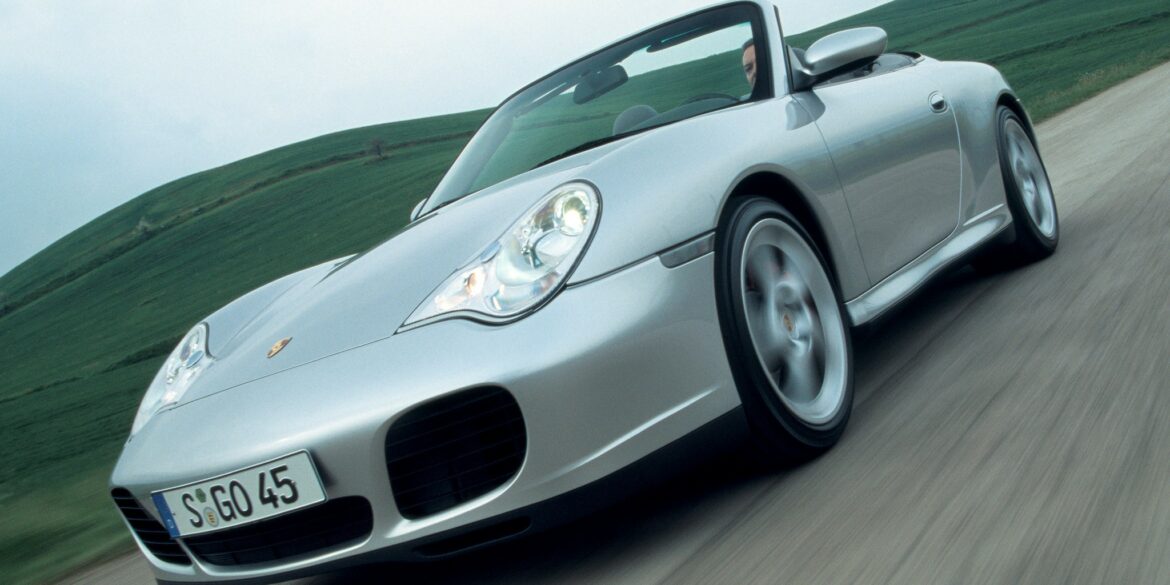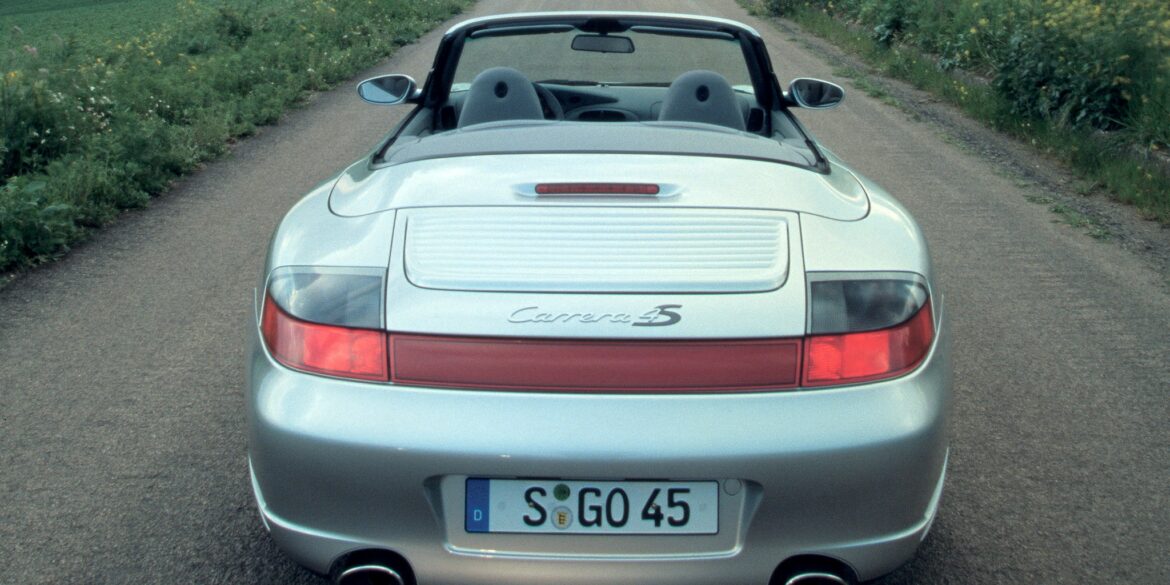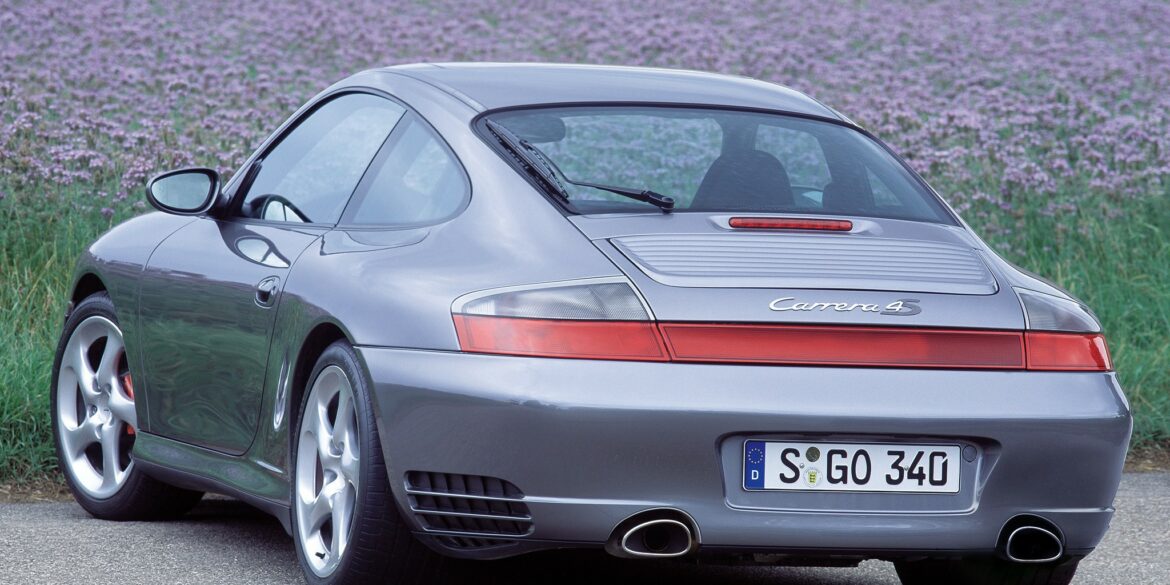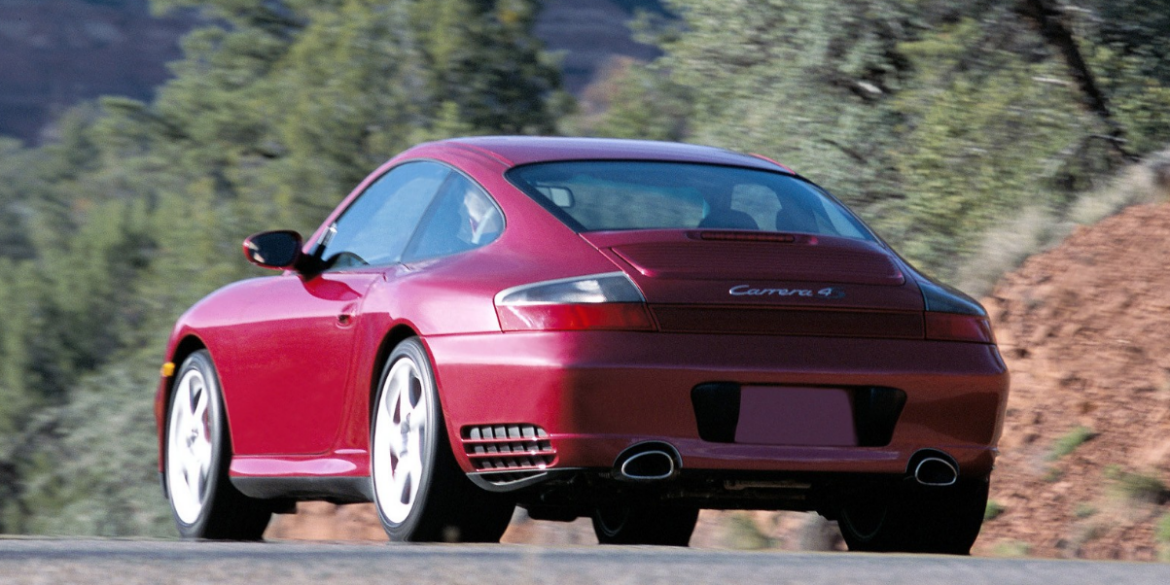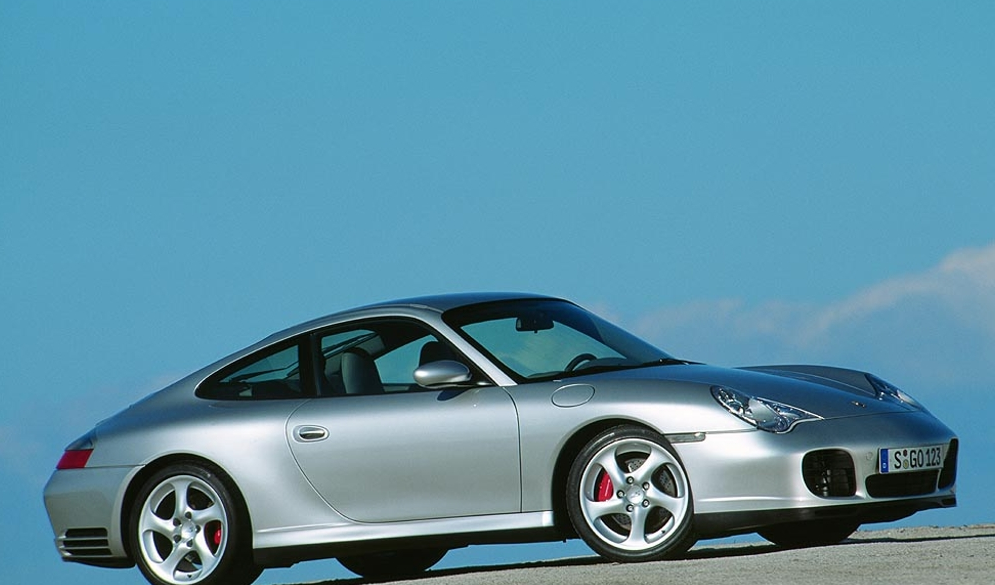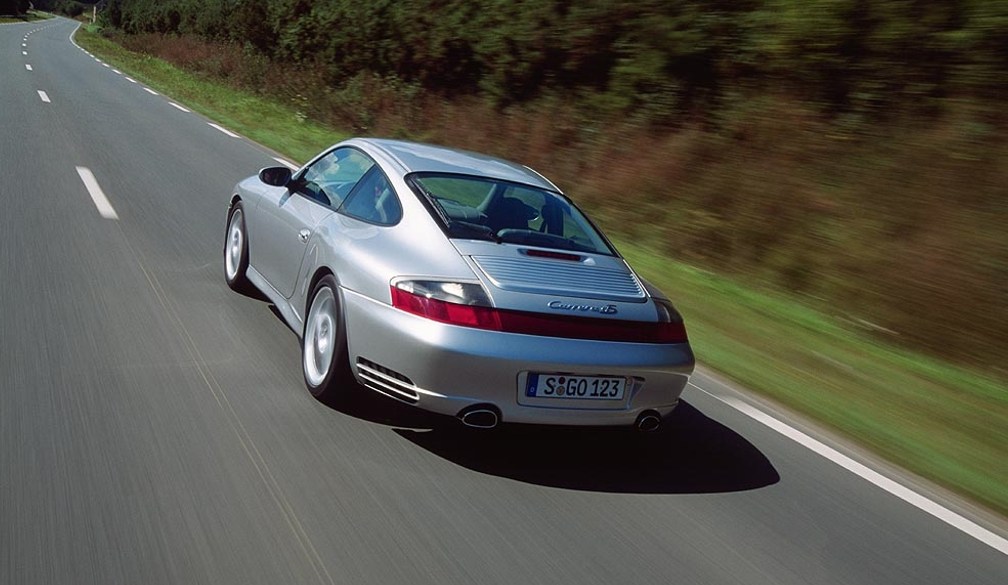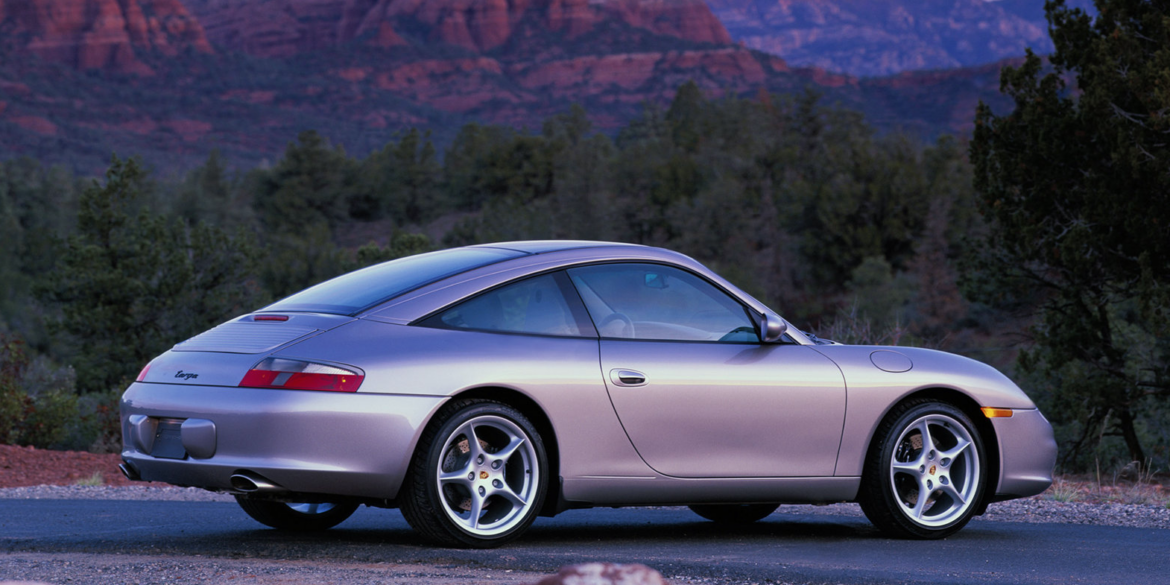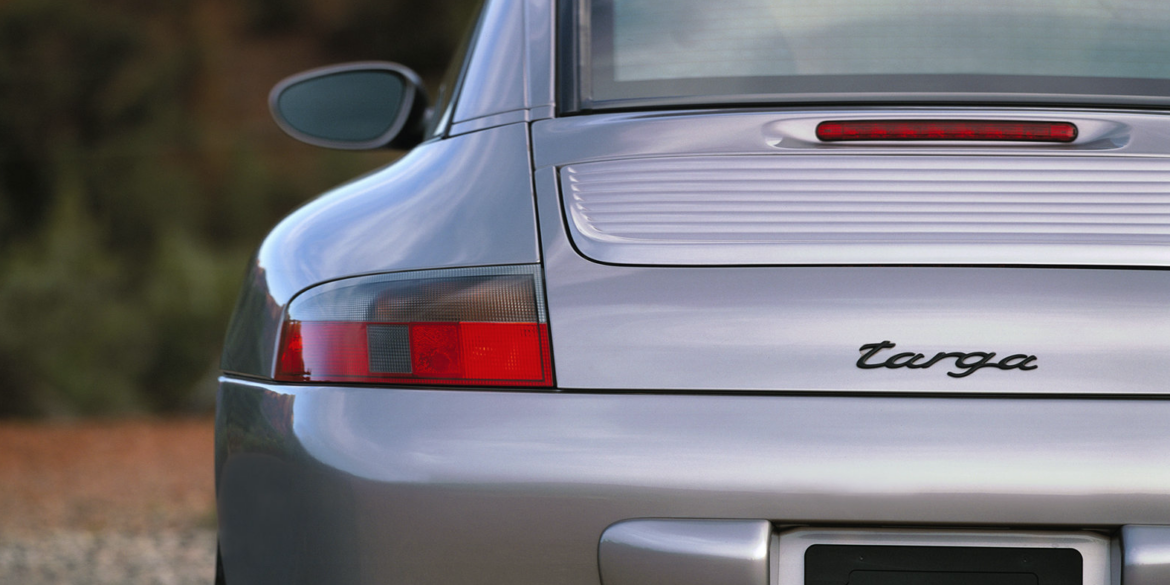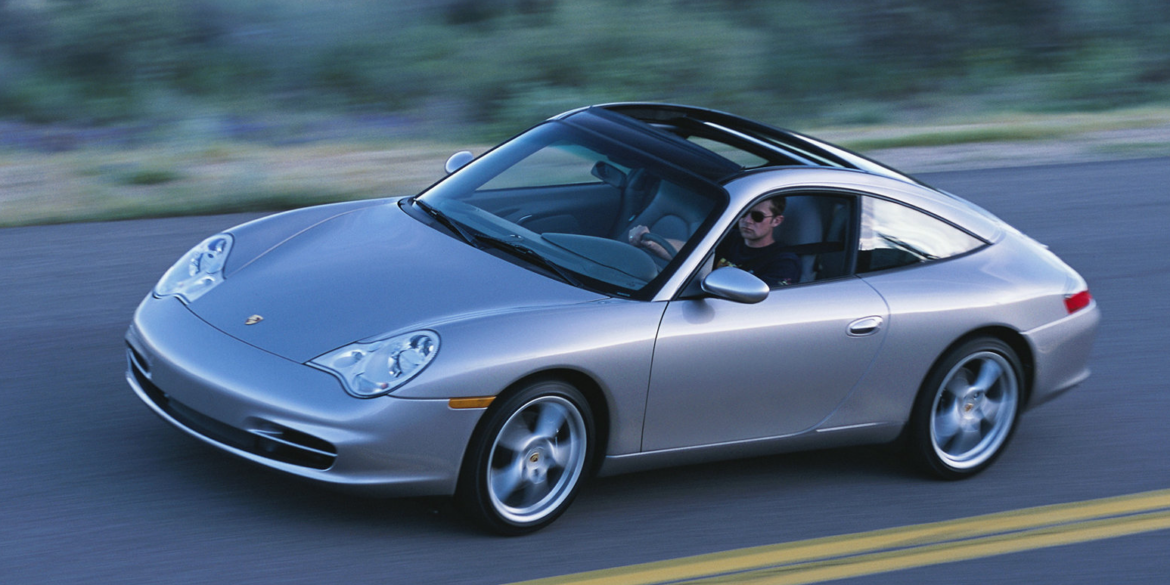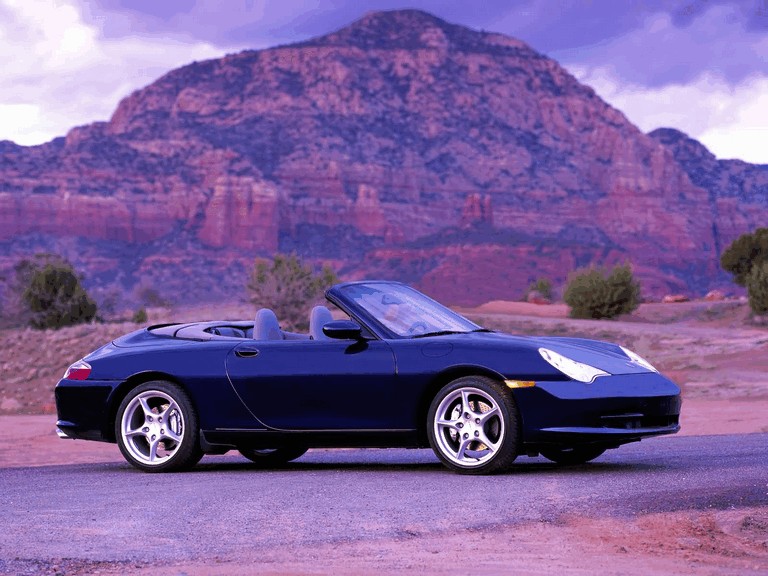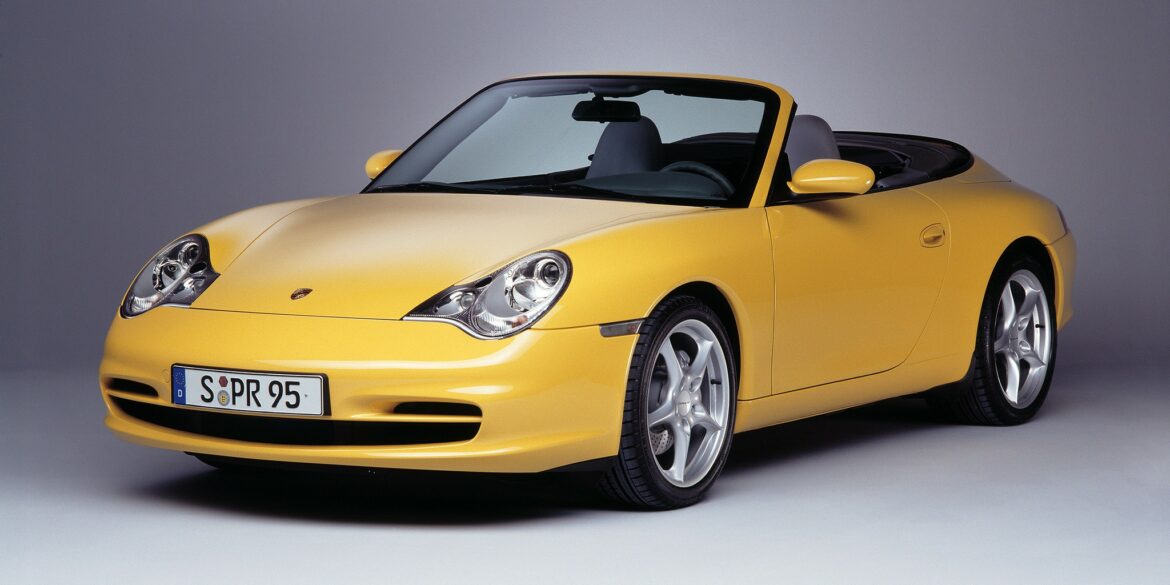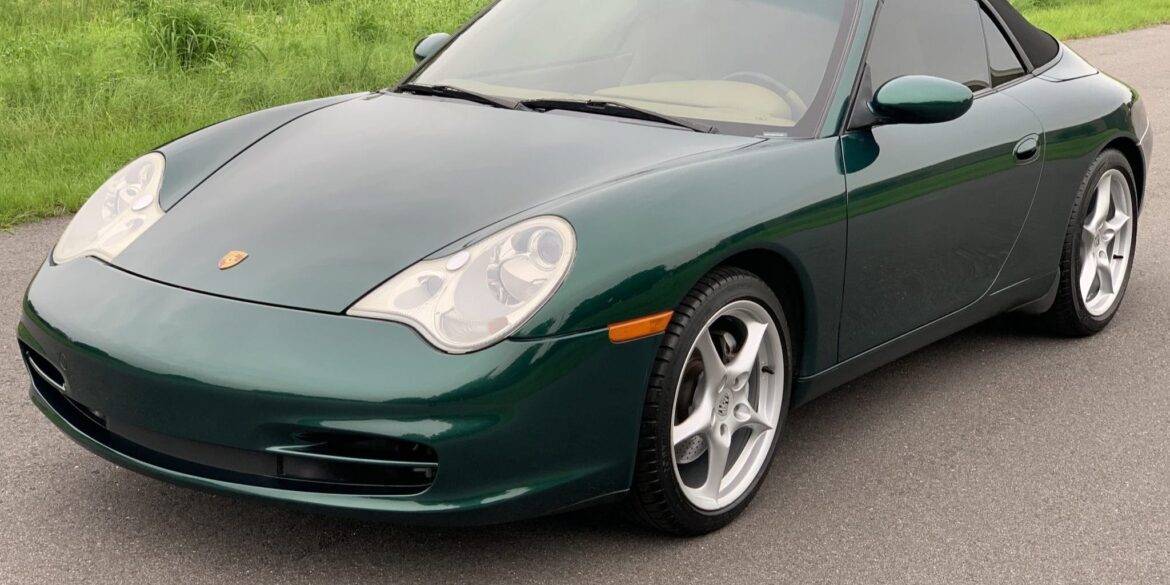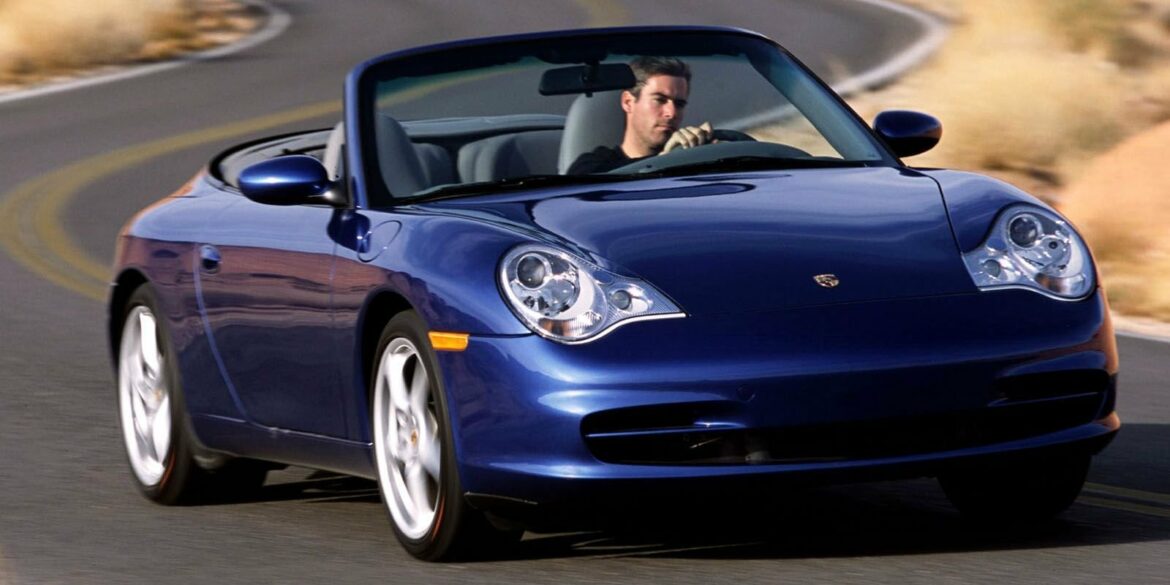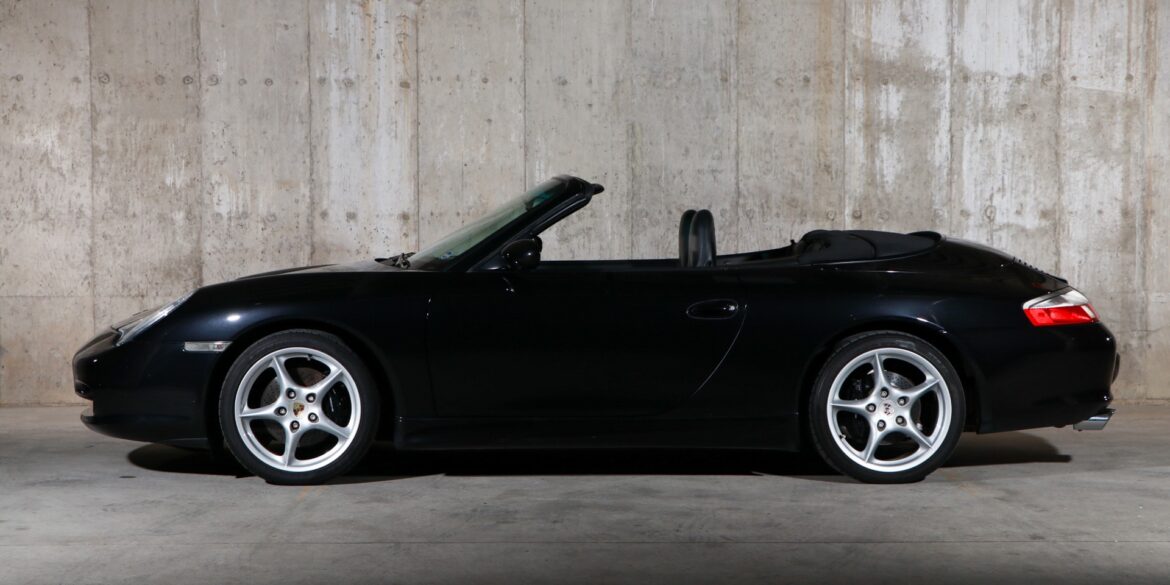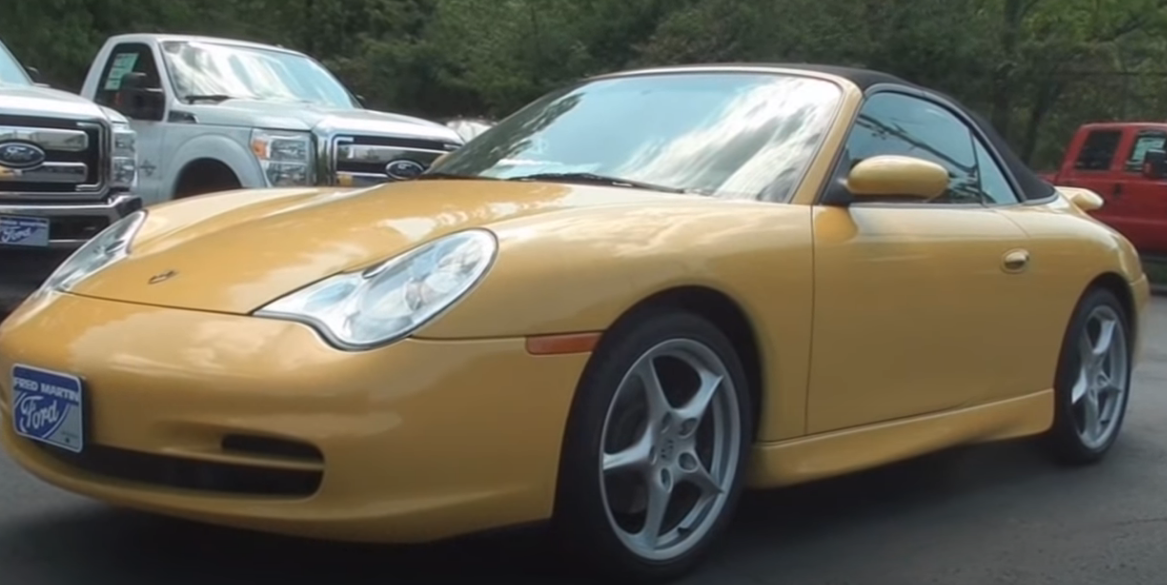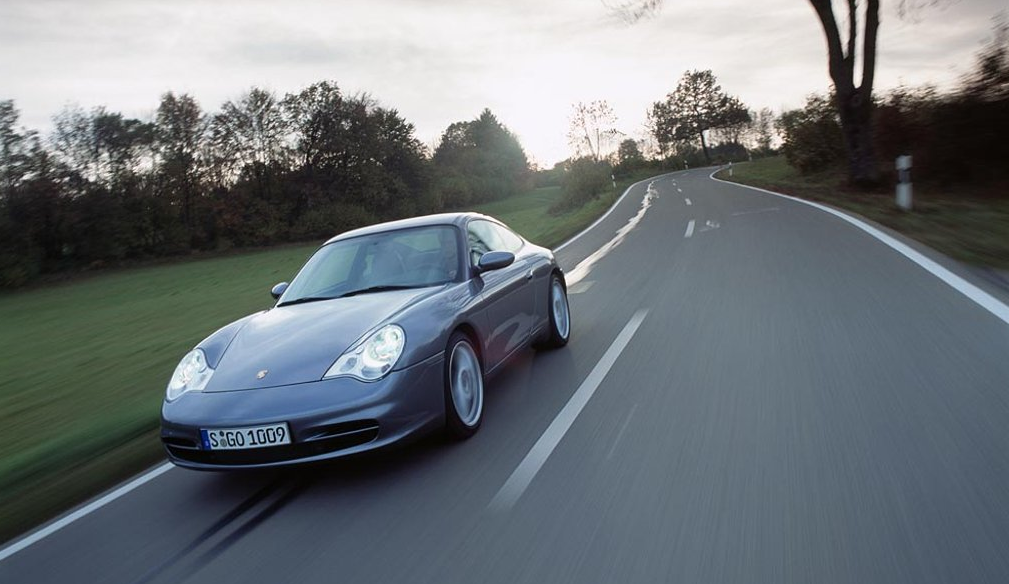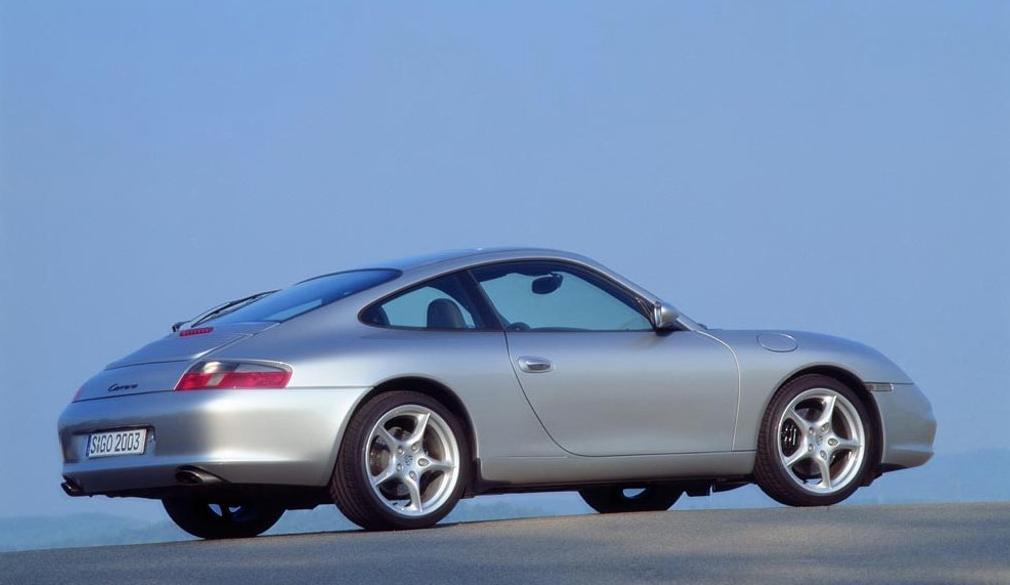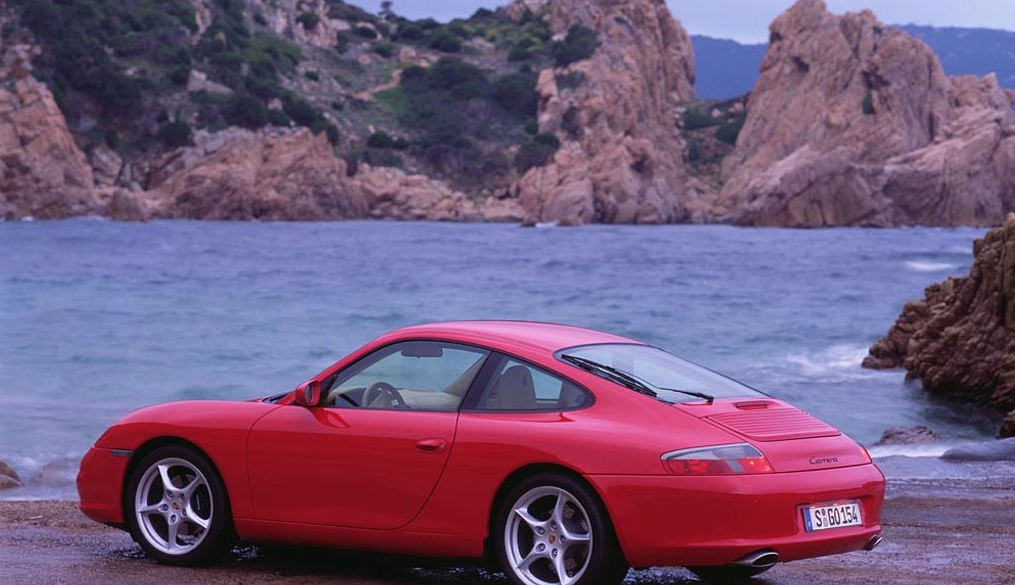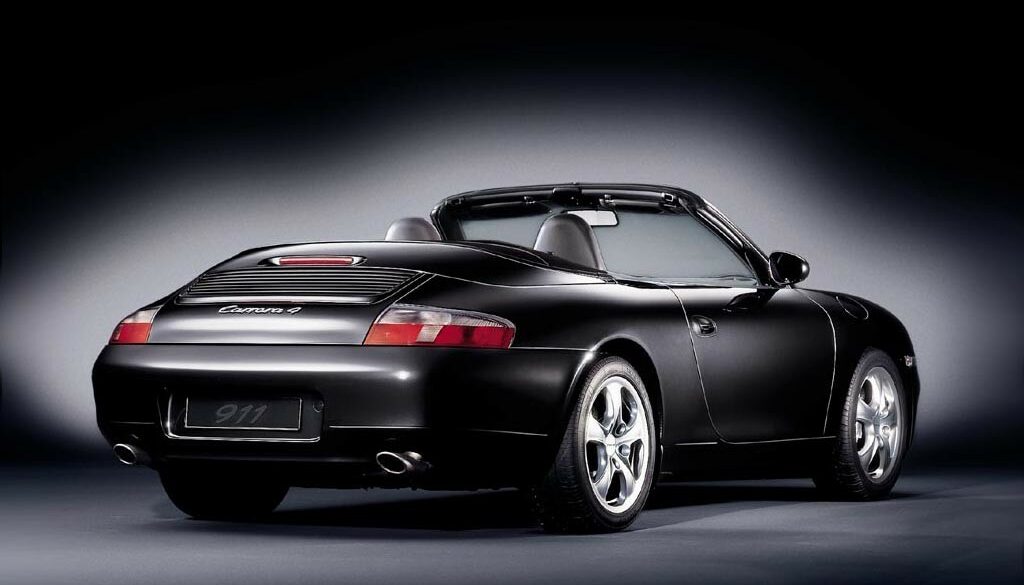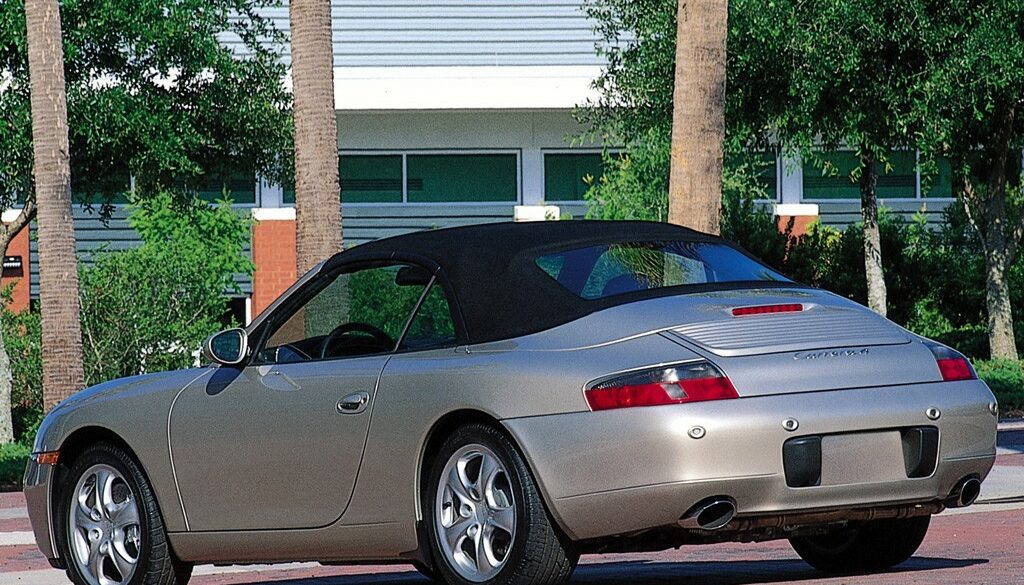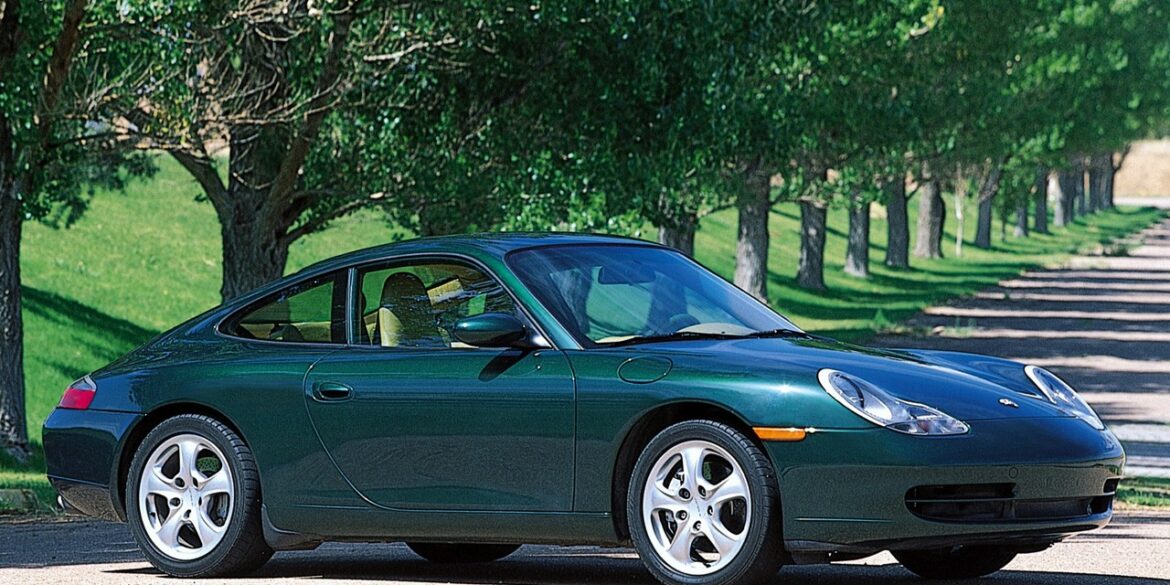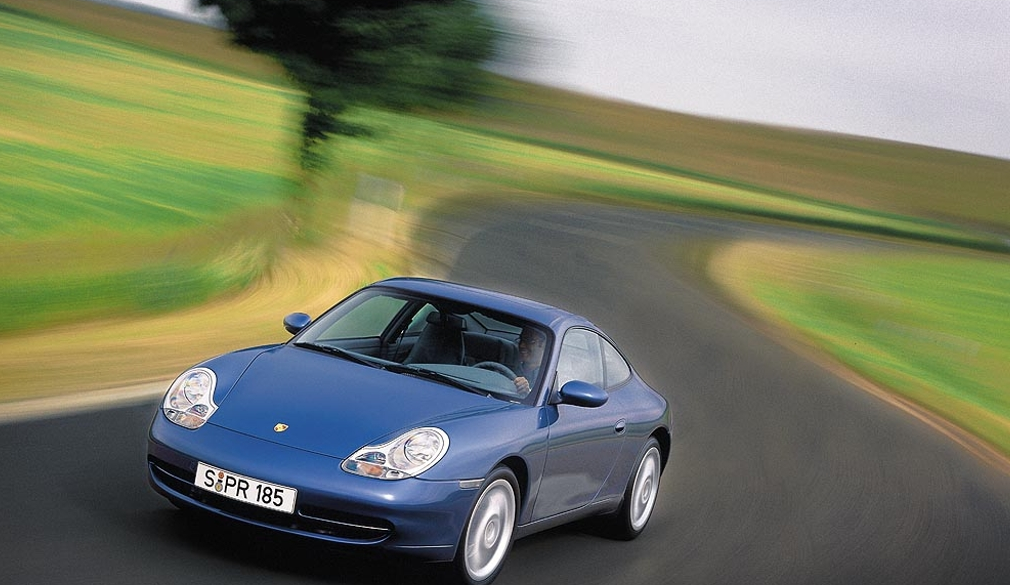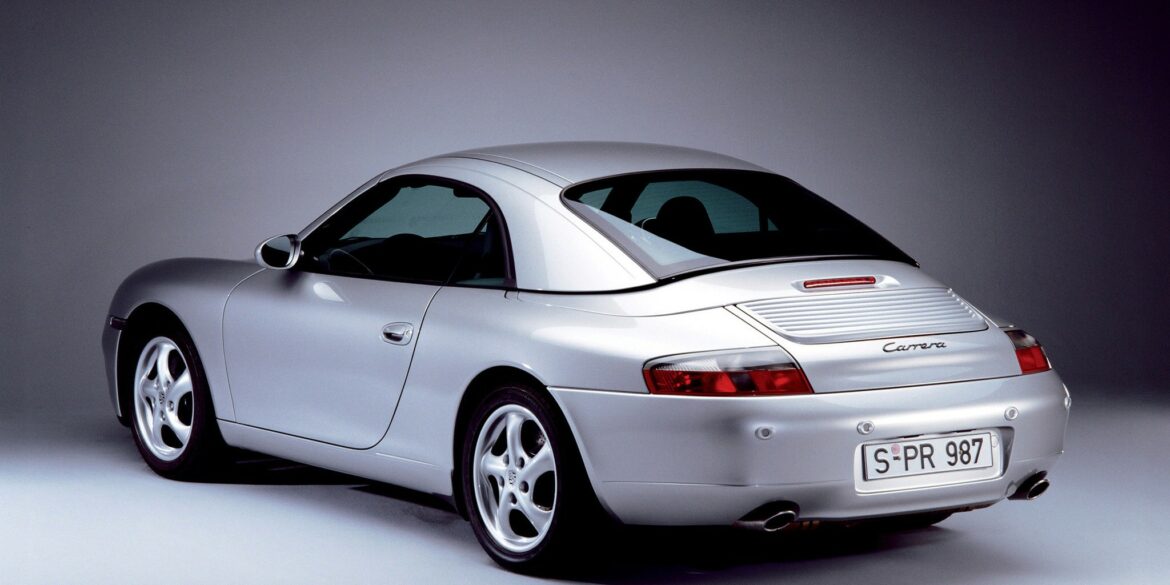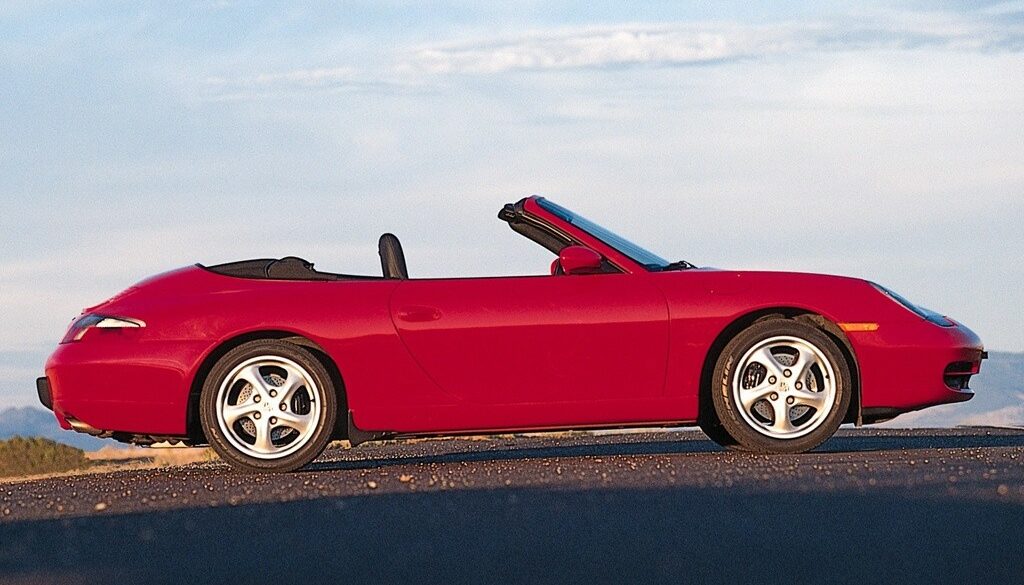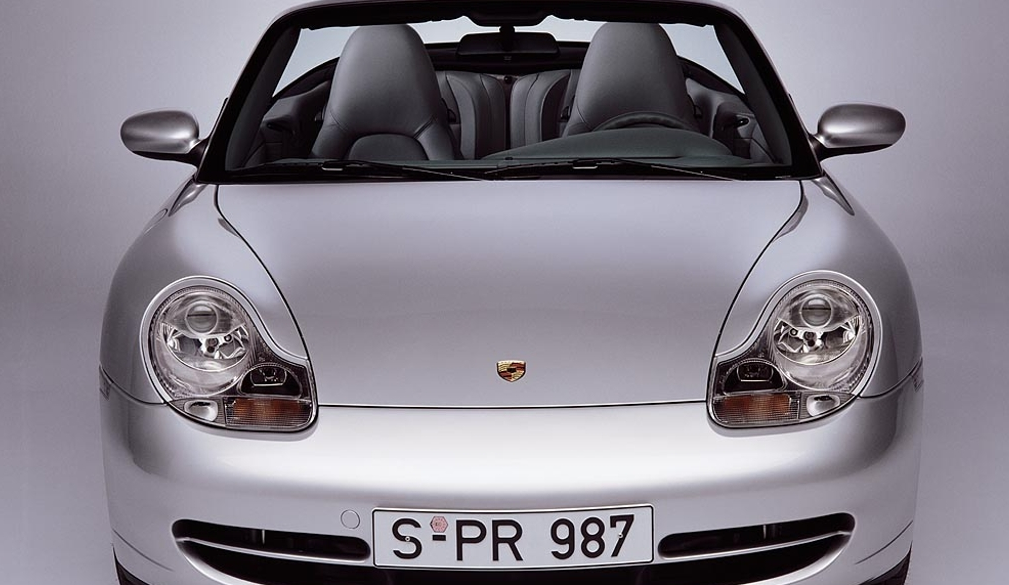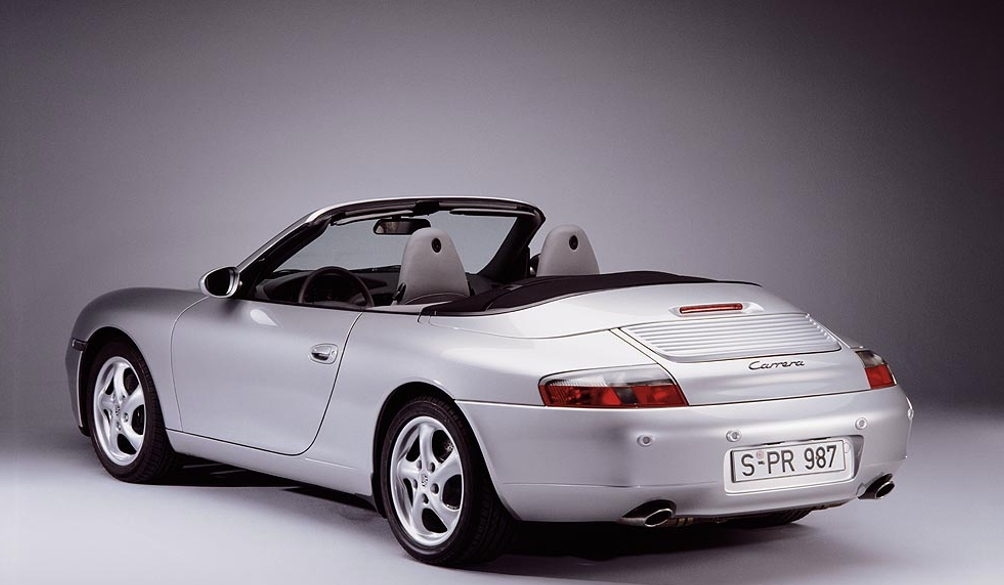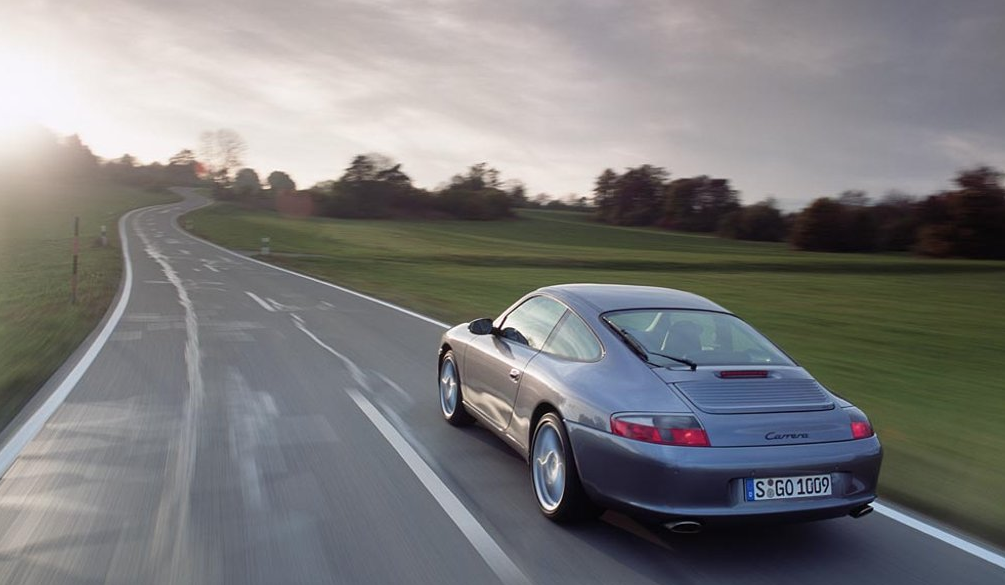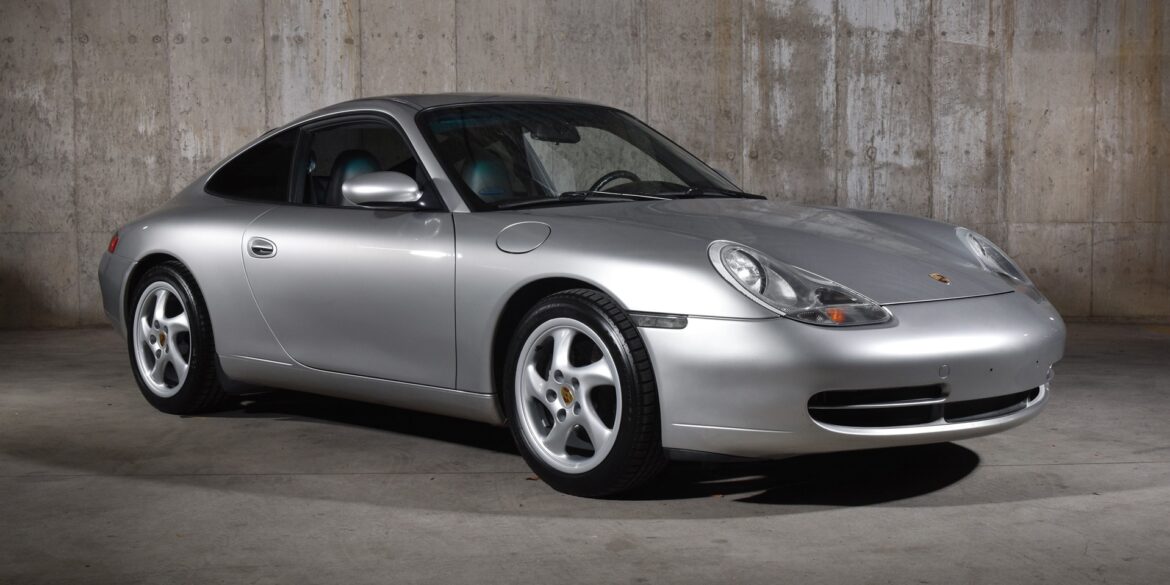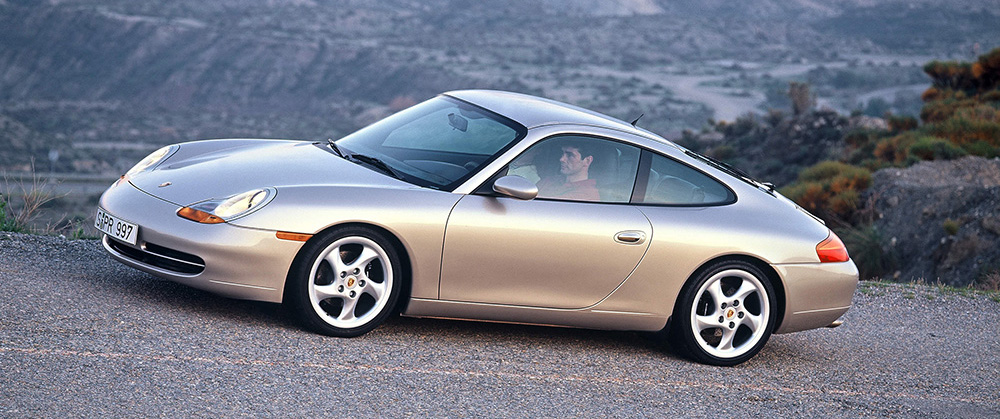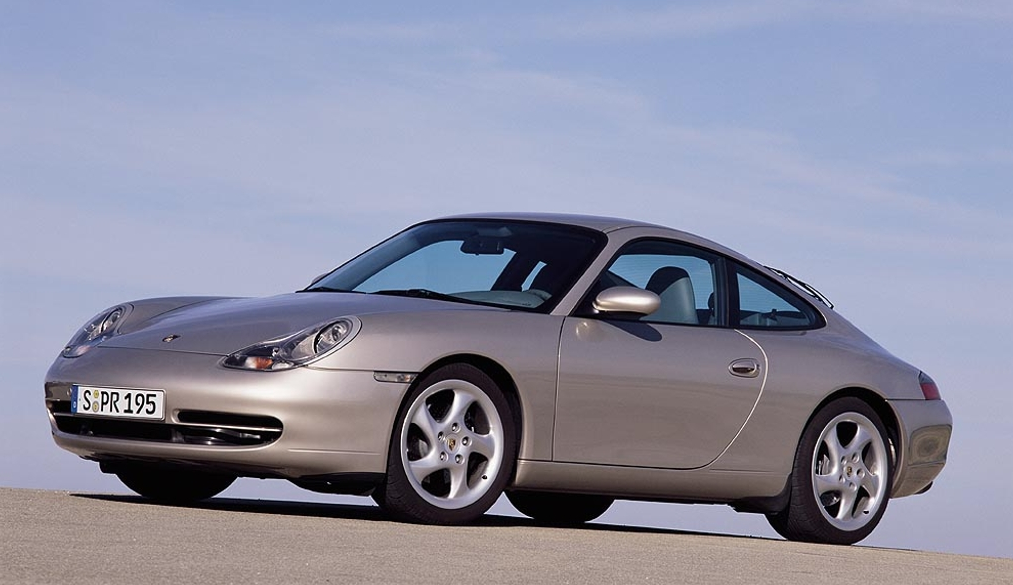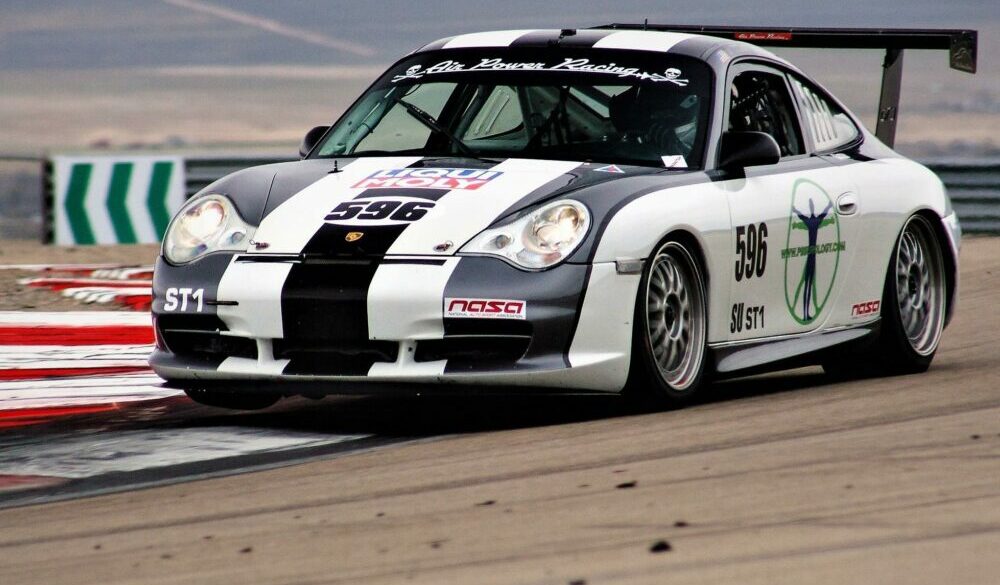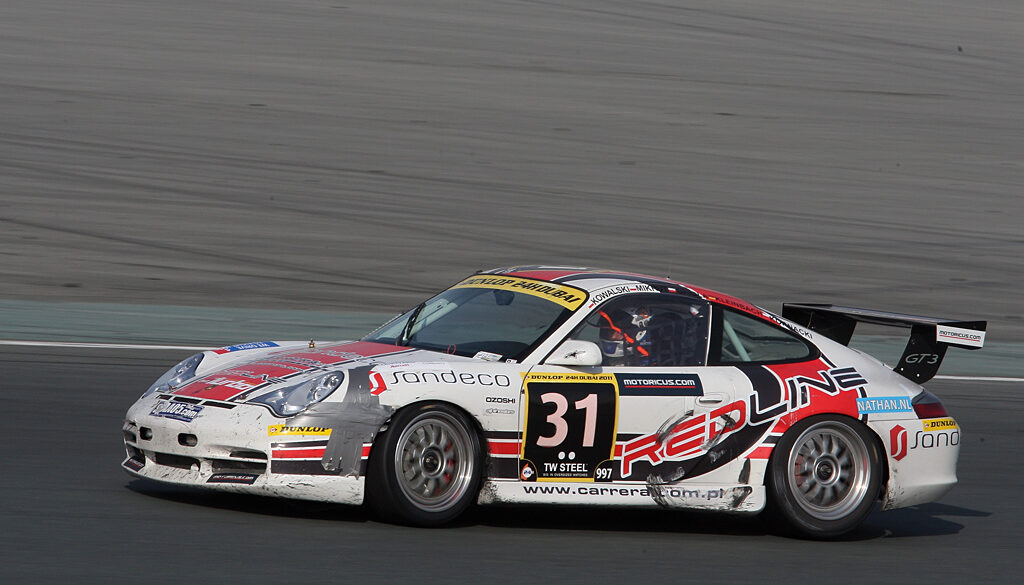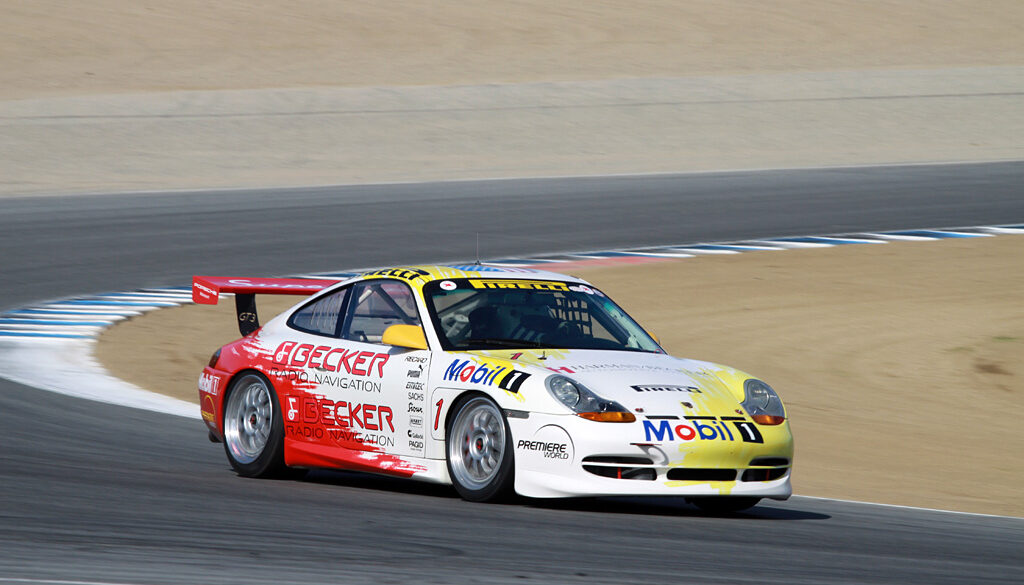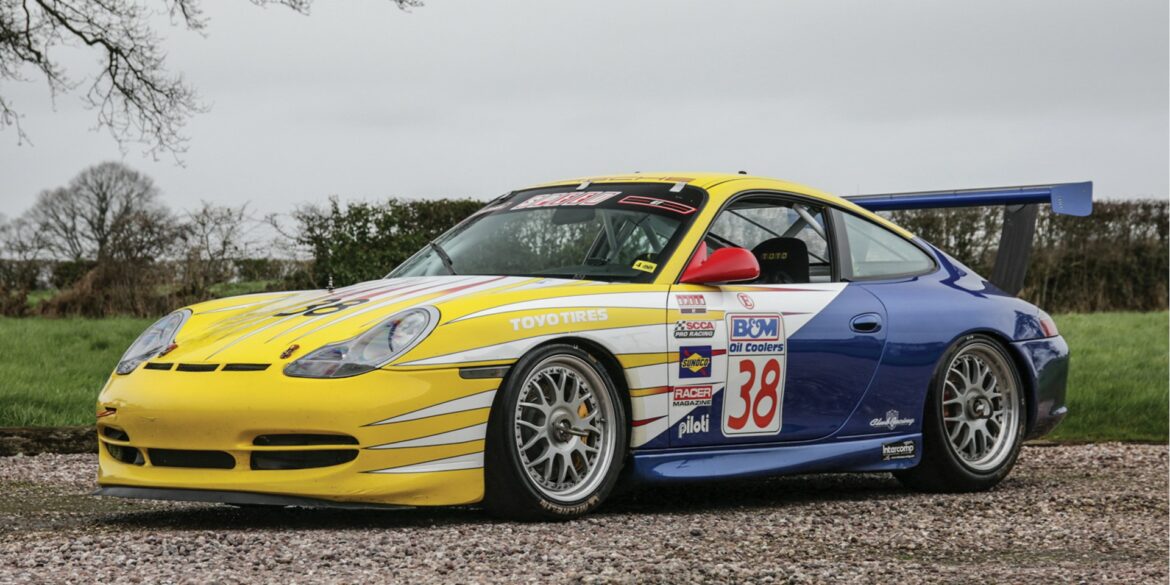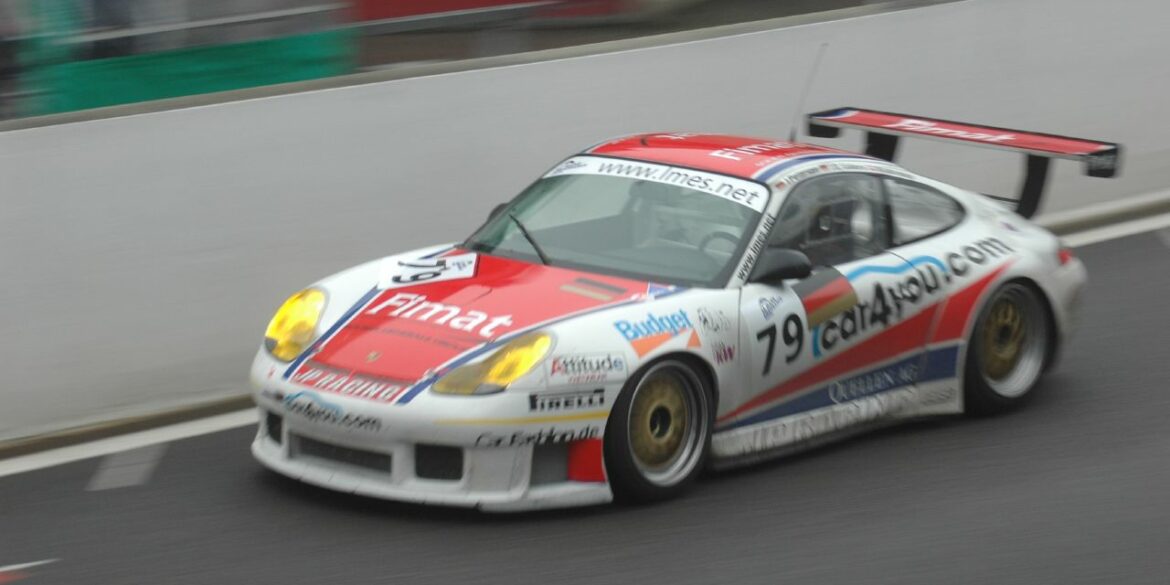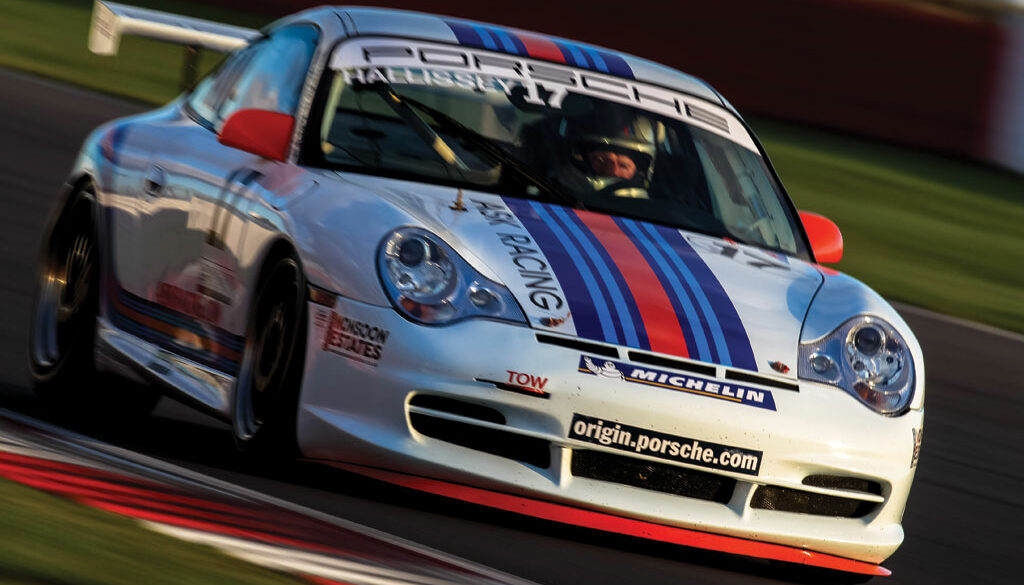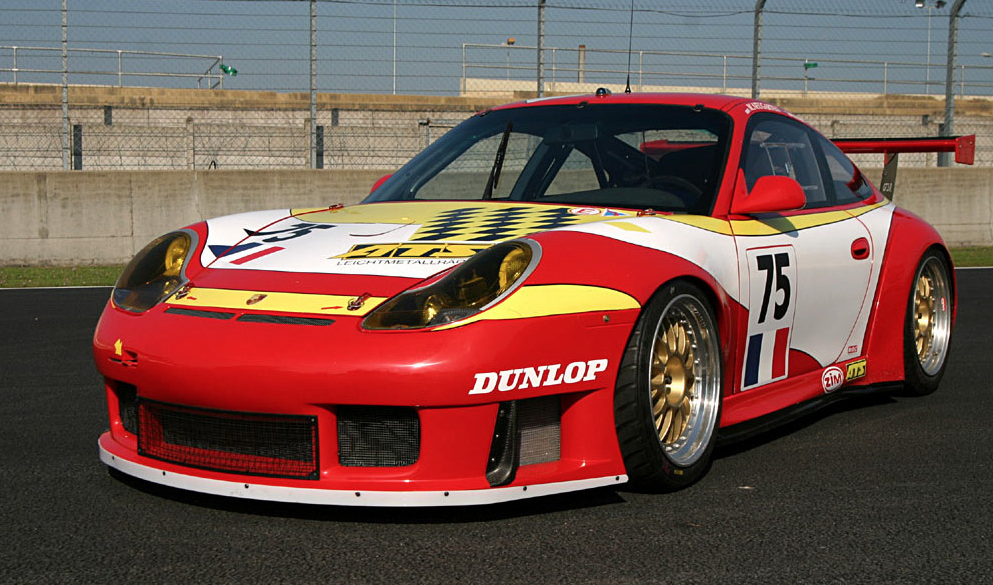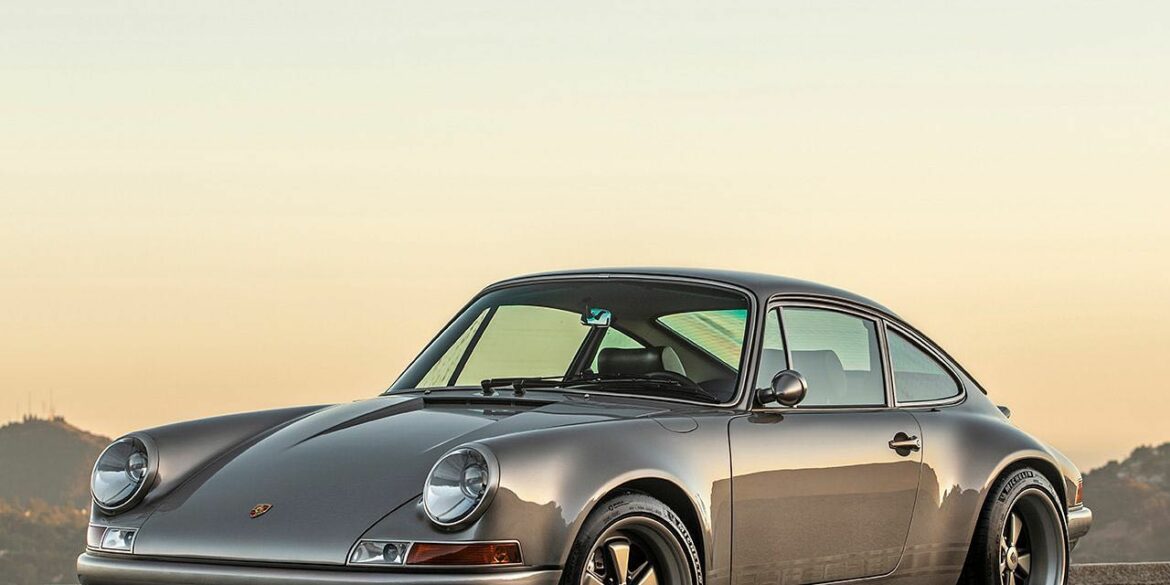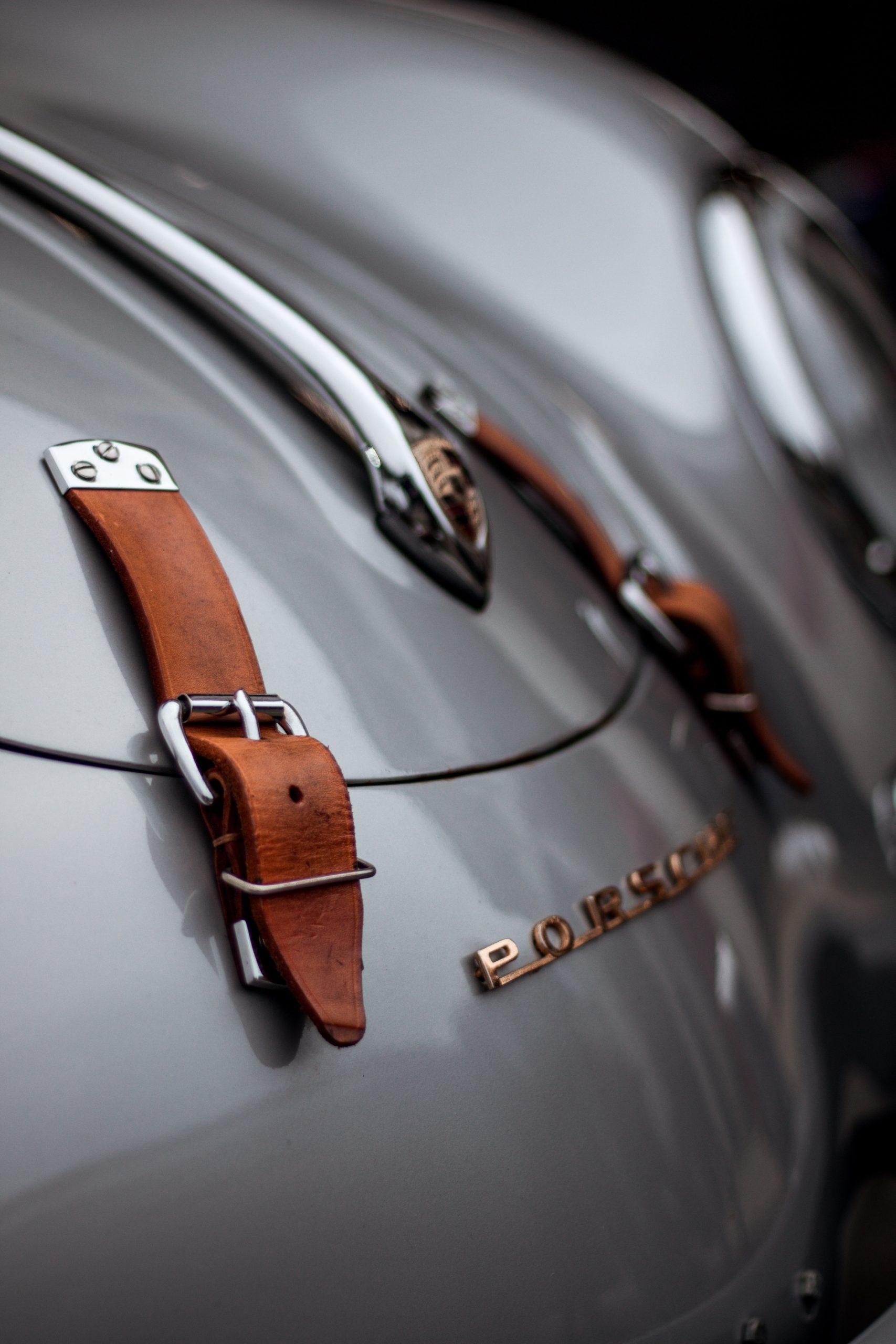2008 Porsche 911 Carrera 4 (997) Technical Specifications Engine Type Flat 6 Induction Normally-aspirated Cooling Water-cooled Valvetrain Double overhead camshafts Injection Port injection Bore X Stroke 3.78 in/96 mm x 3.26 in/82.8 mm Displacement 219.36 cu-in/3,596 cc Horsepower 321 bhp @ 6800 rpm Torque 273 ft lbs @ 4250 rpm...
JoinedMay 4, 2021
Articles3,519
Comments2
I am an Aussie boy, born and raised in Sydney who has now been living in my adopted hometown of New York since 2004. I never say NO to beer or pizza and love my wife and our three little boys. I'm an obsessed car nutcase. I talk about cars all day long. I have been into Porsches, Ferraris and every other cool carmaker since as far back as I remember. Back in 2013 I partnered up with some friends to acquire and operate some of my favorite automotive sites on the planet and Stuttcars was one of those sites. I hope to be a great steward of the brand.
2007 Porsche 911 Carrera 4 (997) Technical Specifications Engine Type Flat 6 Induction Normally-aspirated Cooling Water-cooled Valvetrain Double overhead camshafts Injection Port injection Bore X Stroke 3.78 in/96 mm x 3.26 in/82.8 mm Displacement 219.36 cu-in/3,596 cc Horsepower 321 bhp @ 6800 rpm Torque 273 ft lbs @ 4250 rpm...
2006 Porsche 911 Carrera 4 (997) Technical Specifications Engine Type Flat 6 Induction Normally-aspirated Cooling Water-cooled Valvetrain Double overhead camshafts Injection Port injection Bore X Stroke 3.78 in/96 mm x 3.26 in/82.8 mm Displacement 219.36 cu-in/3,596 cc Horsepower 321 bhp @ 6800 rpm Torque 273 ft lbs @ 4250 rpm...
2008 Porsche 911 Carrera S Cabriolet (997) Technical Specifications Engine Type Flat 6 Induction Normally-aspirated Cooling Water-cooled Valvetrain Double overhead camshafts Injection Port injection Bore X Stroke 3.90 in/99 mm x 3.26 in/82.8 mm Displacement 233.26 cu-in/3,824 cc Horsepower 350 bhp @ 6600 rpm Torque 295 ft lbs @ 4600...
2007 Porsche 911 Carrera S Cabriolet (997) Technical Specifications Engine Type Flat 6 Induction Normally-aspirated Cooling Water-cooled Valvetrain Double overhead camshafts Injection Port injection Bore X Stroke 3.90 in/99 mm x 3.26 in/82.8 mm Displacement 233.26 cu-in/3,824 cc Horsepower 350 bhp @ 6600 rpm Torque 295 ft lbs @ 4600...
2006 Porsche 911 Carrera S Cabriolet (997) Technical Specifications Engine Type Flat 6 Induction Normally-aspirated Cooling Water-cooled Valvetrain Double overhead camshafts Injection Port injection Bore X Stroke 3.90 in/99 mm x 3.26 in/82.8 mm Displacement 233.26 cu-in/3,824 cc Horsepower 350 bhp @ 6600 rpm Torque 295 ft lbs @ 4600...
2005 Porsche 911 Carrera S Cabriolet (997) Technical Specifications Engine Type Flat 6 Induction Normally-aspirated Cooling Water-cooled Valvetrain Double overhead camshafts Injection Port injection Bore X Stroke 3.90 in/99 mm x 3.26 in/82.8 mm Displacement 233.26 cu-in/3,824 cc Horsepower 350 bhp @ 6600 rpm Torque 295 ft lbs @ 4600...
2008 Porsche 911 Carrera S Coupe (997) Technical Specifications Engine Type Flat 6 Induction Normally-aspirated Cooling Water-cooled Valvetrain Double overhead camshafts Injection Port injection Bore X Stroke 3.90 in/99 mm x 3.26 in/82.8 mm Displacement 233.26 cu-in/3,824 cc Horsepower 350 bhp @ 6600 rpm Torque 295 ft lbs @ 4600...
2007 Porsche 911 Carrera S Coupe (997) Technical Specifications Engine Type Flat 6 Induction Normally-aspirated Cooling Water-cooled Valvetrain Double overhead camshafts Injection Port injection Bore X Stroke 3.90 in/99 mm x 3.26 in/82.8 mm Displacement 233.26 cu-in/3,824 cc Horsepower 350 bhp @ 6600 rpm Torque 295 ft lbs @ 4600...
2006 Porsche 911 Carrera S Coupe (997) Technical Specifications Engine Type Flat 6 Induction Normally-aspirated Cooling Water-cooled Valvetrain Double overhead camshafts Injection Port injection Bore X Stroke 3.90 in/99 mm x 3.26 in/82.8 mm Displacement 233.26 cu-in/3,824 cc Horsepower 350 bhp @ 6600 rpm Torque 295 ft lbs @ 4600...
2005 Porsche 911 Carrera S Coupe (997) Technical Specifications Engine Type Flat 6 Induction Normally-aspirated Cooling Water-cooled Valvetrain Double overhead camshafts Injection Port injection Bore X Stroke 3.90 in/99 mm x 3.26 in/82.8 mm Displacement 233.26 cu-in/3,824 cc Horsepower 350 bhp @ 6600 rpm Torque 295 ft lbs @ 4600...
Evolution at its best The Porsche 911 GT3 has broken the mould in recent years. Not by developing cutting edge new technology or integrating complicated hybrid systems, but by staying true to what made the original so brilliant. For petrol heads, it’s a last of the breed and one that...
2008 Porsche 911 Carrera Cabriolet (997) Technical Specifications Engine Type Flat 6 Induction Normally-aspirated Cooling Water-cooled Valvetrain Double overhead camshafts Injection Port injection Bore X Stroke 3.78 in/96 mm x 3.26 in/82.8 mm Displacement 219.36 cu-in/3,596 cc Horsepower 321 bhp @ 6800 rpm Torque 273 ft lbs @ 4250 rpm...
2007 Porsche 911 Carrera Cabriolet (997) Technical Specifications Engine Type Flat 6 Induction Normally-aspirated Cooling Water-cooled Valvetrain Double overhead camshafts Injection Port injection Bore X Stroke 3.78 in/96 mm x 3.26 in/82.8 mm Displacement 219.36 cu-in/3,596 cc Horsepower 321 bhp @ 6800 rpm Torque 273 ft lbs @ 4250 rpm...
2006 Porsche 911 Carrera Cabriolet (997) Technical Specifications Engine Type Flat 6 Induction Normally-aspirated Cooling Water-cooled Valvetrain Double overhead camshafts Injection Port injection Bore X Stroke 3.78 in/96 mm x 3.26 in/82.8 mm Displacement 219.36 cu-in/3,596 cc Horsepower 321 bhp @ 6800 rpm Torque 273 ft lbs @ 4250 rpm...
2005 Porsche 911 Carrera Cabriolet (997) Technical Specifications Engine Type Flat 6 Induction Normally-aspirated Cooling Water-cooled Valvetrain Double overhead camshafts Injection Port injection Bore X Stroke 3.78 in/96 mm x 3.26 in/82.8 mm Displacement 219.36 cu-in/3,596 cc Horsepower 321 bhp @ 6800 rpm Torque 273 ft lbs @ 4250 rpm...
2008 Porsche 911 Carrera (997) Technical Specifications Engine Type Flat 6 Induction Normally-aspirated Cooling Water-cooled Valvetrain Double overhead camshafts Injection Port injection Bore X Stroke 3.78 in/96 mm x 3.26 in/82.8 mm Displacement 219.36 cu-in/3,596 cc Horsepower 321 bhp @ 6800 rpm Torque 273 ft lbs @ 4250 rpm Max...
2007 Porsche 911 Carrera (997) Technical Specifications Engine Type Flat 6 Induction Normally-aspirated Cooling Water-cooled Valvetrain Double overhead camshafts Injection Port injection Bore X Stroke 3.78 in/96 mm x 3.26 in/82.8 mm Displacement 219.36 cu-in/3,596 cc Horsepower 321 bhp @ 6800 rpm Torque 273 ft lbs @ 4250 rpm Max...
2006 Porsche 911 Carrera (997) Technical Specifications Engine Type Flat 6 Induction Normally-aspirated Cooling Water-cooled Valvetrain Double overhead camshafts Injection Port injection Bore X Stroke 3.78 in/96 mm x 3.26 in/82.8 mm Displacement 219.36 cu-in/3,596 cc Horsepower 321 bhp @ 6800 rpm Torque 273 ft lbs @ 4250 rpm Max...
2005 Porsche 911 Carrera (997) Technical Specifications Engine Type Flat 6 Induction Normally-aspirated Cooling Water-cooled Valvetrain Double overhead camshafts Injection Port injection Bore X Stroke 3.78 in/96 mm x 3.26 in/82.8 mm Displacement 219.36 cu-in/3,596 cc Horsepower 321 bhp @ 6800 rpm Torque 273 ft lbs @ 4250 rpm Max...
Porsche 911 (997) Sales & Production Numbers In total, the Porsche 997 sold 212,964 units over its production life. It was hugely successful commercially and continued to transform the company into the powerhouse it is today. Please note that for the 997 model years we couldn’t get official numbers so...
997 Carrera Cup Champions & Results The 997 GT3 Cup was introduced in January 2005 for the upcoming racing season. The 3.6-litre durable old-school unit got 294 kW and maximum 8200 rpm (last 996 Cup: 287 kW and rev limitter at 8000). The transmission was a 6-speed sequential dog-type gearbox...
Porsche 911 (997) Transmission Codes The transmission number code is found on the transmission data plate. Code Transmission Model years A97.01 5-speed Tiptronic Carrera/S 2005, 2006, 2007, 2008 A97.31 5-speed Tiptronic Carrera 4/4S 2006, 2007, 2008 A97.50 5-speed Tiptronic Turbo 3.6 2007, 2008, 2009 CG1.00 7-speed PDK Carrera/S mk2 2009,...
Porsche 911 (997) Engine Codes In 2005, Porsche went from the 996 generation of the 911 to the 997 generation. Now while they did carry over the M96 power plant for the base Carrera, they actually offered a newer, redesigned version of the M96 engine in the Carrera S called...
Porsche 911 (997) (2004 – 2012) Story & History Type 997 – The 6th Generation Porsche 911 Official photos: 2004 May 7 / Premiere: 2004 July 16 at 9:11 pm at all the 85 Porsche centres in Germany / Market launch: 2004 July 17 On May 7, 2004, Porsche announced...
Porsche 911 996 Turbo Review – Worth The Premium Over A C4S? Today I get to drive a car I’ve long lusted after – a 911 Turbo. My only experience of a Turbo so far was in a very heavily modified 993. The 996 has always been my favourite generation...
To commemorate the 40th year of 911 production, Porsche built 1963 of the 40th Anniversary Porsche 911 Carrera for model year 2004. Painted only in a GT Silver Metallic finish, with a dark gray leather interior, the 40th Anniversary (or 40 Jahre in German) took the Base Model 996 Carrera and added the front fascia of the 996 Turbo, side skirts and luxury features for the cabin – including a luggage set that matched the special grey leather interior. Mechanically, the X51 Powerkit increases power to 341hp, combined with rear wheels power wheels, a standard 6-speed manual and sport suspension and limited-slip differential included.
The second generation GT3 takes all that was good about it's predecessor and then improves it! Power from the GT1 derived flat-6 is up by 21 bhp to 381 bhp (with an 8200 rpm redline), ride height is lowered for increased stability and also has an upgraded braking setup, as it features a 6-piston calipers on the front. Two versions are offered, the more extreme 'Clubsport' showing it's track day colors with a full roll cage, racing seat and a 6-point harness. The 996.2 GT3 was the first GT3 marketed in the North America. The new Porsche 911 GT3 comes with all the features of half a century Porsche motorsport. It is a sports car for the purist through and through.
The 996 Carrera 4S Cabriolet is the convertible version of the slightly-uprated 996 Carrera 4. Introduced a year after the 996 C4S Coupe. The Carrera 4S Cabriolet was introduced in the lineup with the new engine and the Turbo bodywork. The cabriolet version of the Carrera 4S paired the aggressive bodywork and suspension of the Turbo with the base Carrera 4 drivetrain, though it didn't get the Turbo's huge rear wing. The three-layer canvas-top was powered and it needed 20 seconds to completely retract or cover the car, at speeds up to 50 kph (31 mph). For winter, the car featured an aluminum hard-top.
Introducing this new top-of-the-range model, Porsche is once again placing a 911 Turbo Cabriolet right at the top of the family after a break of 14 years: From 1987 - 1989 the Porsche 930, as the first Turbo was code-named within the Company, set the first milestone in the history of these outstanding open-air sports cars. With cylinders still featuring two valves each at the time, the 3.3-litre power unit driving the first Turbo Cabriolet offered maximum output quite unique at the time of 300 bhp or 221 kW. Acceleration from 0 to 100 km/h was in 5.2 seconds and the car had a top speed of 260 km/h or 161 mph.
In 2002, the standard Carrera models underwent a facelift. In addition, engine capacity was also increased to 3.6-litres across the range, with power up slightly on the naturally aspirated models. 2002 also marked the start of the production of the 996 based Targa model, with a sliding glass "green house" roof system as introduced on its predecessor. It also features a rear glass hatch which gave the driver access to the storage compartment. The 996 Targa is the rarest bodystyle in the series – only 5,152 were produced (all Mk.2 generation) between 2002 and 2005.
Designed as a grand tourer, the Porsche Carrera 4 Cabriolet was the base all-wheel-drive version for the open-top 911 range in 2001. It offered enough comfort to be used as a daily driver, on all weather. The 996 Porsche was facelifted in 2002. Along with the coupe versions, the convertibles were reshaped also. There was not a big difference on the outside. It was the same sports-car and open-top grand tourer. The Carrera 4 Cabriolet, continued on through 2004, receiving the same updates as the Carrera, including the 3.6-liter engine.
The 996 was initially available in a coupé or a cabriolet (Convertible) bodystyle with rear-wheel drive, and later with four-wheel drive, utilising a 3.4 litre flat-6 engine generating a maximum power output of 221 kW (300 PS; 296 hp).[7] The 996 had the same front end as the entry-level Boxster. After requests from the Carrera owners about their premium cars looking like a "lower priced car that looked just like theirs did", Porsche redesigned the headlamps of the Carrera in 2002. With the cabriolet, buyers have a choice between this version and the hotter Carrera 4S cabriolet.
In 2002, all of the standard models received a minor makeover in 2002 which included Turbo-style headlights, a freshly designed front clip and an increase in engine capacity to 3.6L along with a subsequent 20HP boost. The bodies were more rigid which further improved handling and safety and the lower, stiffer X74 suspension became available as a factory modification. From the outside, it was hard to notice the difference between the 1998 version and the facelifted model. The main difference was on the headlights. Including the Mk 1 cars, the 996 Carrera Coupe sold 46,317 units.
In 2002, the entire generation of the 996 was facelifted. The Carrera 4S Cabriolet was introduced in the lineup with the new engine and the Turbo bodywork. Many publications called the Carrera 4S the sweet spot in the 911 lineup when it was introduced, providing more performance than the base car without the exorbitant pricing of a Turbo or GT2. The Carrera 4S paired the aggressive bodywork and suspension of the Turbo with the base Carrera 4 drivetrain, though it didn't get the Turbo's huge rear wing. It’s easily identified by “Carrera 4S” badging and a large reflective strip on the rear end, spanning the gap between the taillights.
2005 Porsche 911 GT2 (996) Technical Specifications Engine Type Flat 6 Induction Twin-turbocharged Cooling Water-cooled Valvetrain Double overhead camshafts Injection Port injection Bore X Stroke 3.94 in/100 mm x 3.01 in/76.4 mm Displacement 219.60 cu-in/3,600cc Horsepower 462 bhp @ 5700 rpm Torque 457 ft lbs @ 3500 rpm Max Rpm...
2004 Porsche 911 GT2 (996) Technical Specifications Engine Type Flat 6 Induction Twin-turbocharged Cooling Water-cooled Valvetrain Double overhead camshafts Injection Port injection Bore X Stroke 3.94 in/100 mm x 3.01 in/76.4 mm Displacement 219.60 cu-in/3,600cc Horsepower 462 bhp @ 5700 rpm Torque 457 ft lbs @ 3500 rpm Max Rpm...
2003 Porsche 911 GT2 (996) Technical Specifications Engine Type Flat 6 Induction Twin-turbocharged Cooling Water-cooled Valvetrain Double overhead camshafts Injection Port injection Bore X Stroke 3.94 in/100 mm x 3.01 in/76.4 mm Displacement 219.60 cu-in/3,600cc Horsepower 462 bhp @ 5700 rpm Torque 457 ft lbs @ 3500 rpm Max Rpm...
2002 Porsche 911 GT2 (996) Technical Specifications Engine Type Flat 6 Induction Twin-turbocharged Cooling Water-cooled Valvetrain Double overhead camshafts Injection Port injection Bore X Stroke 3.94 in/100 mm x 3.01 in/76.4 mm Displacement 219.60 cu-in/3,600cc Horsepower 462 bhp @ 5700 rpm Torque 457 ft lbs @ 3500 rpm Max Rpm...
2001 Porsche 911 GT2 (996) Technical Specifications Engine Type Flat 6 Induction Twin-turbocharged Cooling Water-cooled Valvetrain Double overhead camshafts Injection Port injection Bore X Stroke 3.94 in/100 mm x 3.01 in/76.4 mm Displacement 219.60 cu-in/3,600cc Horsepower 462 bhp @ 5700 rpm Torque 457 ft lbs @ 3500 rpm Max Rpm...
2004 Porsche 911 GT3 RS (996) Technical Specifications Engine Type Flat 6 Induction Naturally Aspirated Cooling Water-cooled Valvetrain Double overhead camshafts Injection Port injection Bore X Stroke 3.94 in/100 mm x 3.01 in/76.4 mm Displacement 219.60 cu-in/3,600cc Horsepower 381 bhp @ 7400 rpm Torque 284 ft lbs @ 5000 rpm...
2005 Porsche 911 GT3 (996.2) Technical Specifications Engine Type Flat 6 Induction Naturally Aspirated Cooling Water-cooled Valvetrain Double overhead camshafts Injection Port injection Bore X Stroke 3.94 in/100 mm x 3.01 in/76.4 mm Displacement 219.60 cu-in/3,600cc Horsepower 381 bhp @ 7400 rpm Torque 284 ft lbs @ 5000 rpm Max...
2004 Porsche 911 GT3 (996.2) Technical Specifications Engine Type Flat 6 Induction Naturally Aspirated Cooling Water-cooled Valvetrain Double overhead camshafts Injection Port injection Bore X Stroke 3.94 in/100 mm x 3.01 in/76.4 mm Displacement 219.60 cu-in/3,600cc Horsepower 381 bhp @ 7400 rpm Torque 284 ft lbs @ 5000 rpm Max...
2001 Porsche 911 GT3 (996) Technical Specifications Engine Type Flat 6 Induction Naturally Aspirated Cooling Water-cooled Valvetrain 4 Valves per Cyl w/VV& Variable Intake Injection Port injection Bore X Stroke 3.94 in/100 mm x 3.01 in/76.4 mm Displacement 219.60 cu-in/3,600cc Horsepower 360.1 bhp @ 7200 rpm Torque 272.9 ft lbs...
2000 Porsche 911 GT3 (996) Technical Specifications Engine Type Flat 6 Induction Naturally Aspirated Cooling Water-cooled Valvetrain 4 Valves per Cyl w/VV& Variable Intake Injection Port injection Bore X Stroke 3.94 in/100 mm x 3.01 in/76.4 mm Displacement 219.60 cu-in/3,600cc Horsepower 360.1 bhp @ 7200 rpm Torque 272.9 ft lbs...
2005 Porsche 911 Turbo S Cabriolet (996) Technical Specifications Engine Type Flat 6 Induction Twin-turbocharged Cooling Water-cooled Valvetrain Double overhead camshafts Injection Port injection Bore X Stroke 3.94 in/100 mm x 3.01 in/76.4 mm Displacement 219.60 cu-in/3,600cc Horsepower 450 bhp @ 6000 rpm Torque 457 ft lbs @ 4400 rpm...
2005 Porsche 911 Turbo S (996) Technical Specifications Engine Type Flat 6 Induction Twin-turbocharged Cooling Water-cooled Valvetrain Double overhead camshafts Injection Port injection Bore X Stroke 3.94 in/100 mm x 3.01 in/76.4 mm Displacement 219.60 cu-in/3,600cc Horsepower 450 bhp @ 6000 rpm Torque 457 ft lbs @ 4400 rpm Max...
2005 Porsche 911 Turbo Cabriolet (996) Technical Specifications Engine Type Flat 6 Induction Twin-turbocharged Cooling Water-cooled Valvetrain Double overhead camshafts Injection Port injection Bore X Stroke 3.94 in/100 mm x 3.01 in/76.4 mm Displacement 219.60 cu-in/3,600cc Horsepower 415 bhp @ 6000 rpm Torque 415 ft lbs @ 2700 rpm Max...
2004 Porsche 911 Turbo Cabriolet (996) Technical Specifications Engine Type Flat 6 Induction Twin-turbocharged Cooling Water-cooled Valvetrain Double overhead camshafts Injection Port injection Bore X Stroke 3.94 in/100 mm x 3.01 in/76.4 mm Displacement 219.60 cu-in/3,600cc Horsepower 415 bhp @ 6000 rpm Torque 415 ft lbs @ 2700 rpm Max...
2003 Porsche 911 Turbo Cabriolet (996) Technical Specifications Engine Type Flat 6 Induction Twin-turbocharged Cooling Water-cooled Valvetrain Double overhead camshafts Injection Port injection Bore X Stroke 3.94 in/100 mm x 3.01 in/76.4 mm Displacement 219.60 cu-in/3,600cc Horsepower 415 bhp @ 6000 rpm Torque 415 ft lbs @ 2700 rpm Max...
2005 Porsche 911 Turbo X50 (996) Technical Specifications Price $ $133,000 Engine Aluminum Alloy, Twin Turbo Flat-6 Position Rear Longitudinal Aspiration Twin Turbo Valvetrain DOHC 4 valves / cyl Fuel Feed Multipoint Fuel Injection Powertrain Layout Rear Engine / 4WD Displacement 3600 cc / 219.7 cu in Power 450 bhp...
2004 Porsche 911 Turbo X50 (996) Technical Specifications Price $ $133,000 Engine Aluminum Alloy, Twin Turbo Flat-6 Position Rear Longitudinal Aspiration Twin Turbo Valvetrain DOHC 4 valves / cyl Fuel Feed Multipoint Fuel Injection Powertrain Layout Rear Engine / 4WD Displacement 3600 cc / 219.7 cu in Power 450 bhp...
2003 Porsche 911 Turbo X50 (996) Technical Specifications Price $ $133,000 Engine Aluminum Alloy, Twin Turbo Flat-6 Position Rear Longitudinal Aspiration Twin Turbo Valvetrain DOHC 4 valves / cyl Fuel Feed Multipoint Fuel Injection Powertrain Layout Rear Engine / 4WD Displacement 3600 cc / 219.7 cu in Power 450 bhp...
2002 Porsche 911 Turbo X50 (996) Technical Specifications Price $ $133,000 Engine Aluminum Alloy, Twin Turbo Flat-6 Position Rear Longitudinal Aspiration Twin Turbo Valvetrain DOHC 4 valves / cyl Fuel Feed Multipoint Fuel Injection Powertrain Layout Rear Engine / 4WD Displacement 3600 cc / 219.7 cu in Power 450 bhp...
2005 Porsche 911 Turbo (996) Technical Specifications Engine Type Flat 6 Induction Twin-turbocharged Cooling Water-cooled Valvetrain Double overhead camshafts Injection Port injection Bore X Stroke 3.94 in/100 mm x 3.01 in/76.4 mm Displacement 219.60 cu-in/3,600cc Horsepower 415 bhp @ 6000 rpm Torque 415 ft lbs @ 2700 rpm Max Rpm...
2004 Porsche 911 Turbo (996) Technical Specifications Engine Type Flat 6 Induction Twin-turbocharged Cooling Water-cooled Valvetrain Double overhead camshafts Injection Port injection Bore X Stroke 3.94 in/100 mm x 3.01 in/76.4 mm Displacement 219.60 cu-in/3,600cc Horsepower 415 bhp @ 6000 rpm Torque 415 ft lbs @ 2700 rpm Max Rpm...
2003 Porsche 911 Turbo (996) Technical Specifications Engine Type Flat 6 Induction Twin-turbocharged Cooling Water-cooled Valvetrain Double overhead camshafts Injection Port injection Bore X Stroke 3.94 in/100 mm x 3.01 in/76.4 mm Displacement 219.60 cu-in/3,600cc Horsepower 415 bhp @ 6000 rpm Torque 415 ft lbs @ 2700 rpm Max Rpm...
2002 Porsche 911 Turbo (996) Technical Specifications Engine Type Flat 6 Induction Twin-turbocharged Cooling Water-cooled Valvetrain Double overhead camshafts Injection Port injection Bore X Stroke 3.94 in/100 mm x 3.01 in/76.4 mm Displacement 219.60 cu-in/3,600cc Horsepower 415 bhp @ 6000 rpm Torque 415 ft lbs @ 2700 rpm Max Rpm...
2001 Porsche 911 Turbo (996) Technical Specifications Engine Type Flat 6 Induction Twin-turbocharged Cooling Water-cooled Valvetrain Double overhead camshafts Injection Port injection Bore X Stroke 3.94 in/100 mm x 3.01 in/76.4 mm Displacement 219.60 cu-in/3,600cc Horsepower 415 bhp @ 6000 rpm Torque 415 ft lbs @ 2700 rpm Max Rpm...
2005 Porsche 911 Carrera 4S Cabriolet (996) Technical Specifications Engine Type Flat 6 Induction Normally-aspirated Cooling Water-cooled Valvetrain Double overhead camshafts Injection Port injection Bore X Stroke 3.78 in/96 mm x 3.26 in/82.8 mm Displacement 219.43 cu-in/3,596 cc Horsepower 320 bhp @ 6800 rpm Torque 273 ft lbs @ 4250...
2004 Porsche 911 Carrera 4S Cabriolet (996) Technical Specifications Engine Type Flat 6 Induction Normally-aspirated Cooling Water-cooled Valvetrain Double overhead camshafts Injection Port injection Bore X Stroke 3.78 in/96 mm x 3.26 in/82.8 mm Displacement 219.43 cu-in/3,596 cc Horsepower 320 bhp @ 6800 rpm Torque 273 ft lbs @ 4250...
2003 Porsche 911 Carrera 4S Cabriolet (996) Technical Specifications Engine Type Flat 6 Induction Normally-aspirated Cooling Water-cooled Valvetrain Double overhead camshafts Injection Port injection Bore X Stroke 3.78 in/96 mm x 3.26 in/82.8 mm Displacement 219.43 cu-in/3,596 cc Horsepower 320 bhp @ 6800 rpm Torque 273 ft lbs @ 4250...
2005 Porsche 911 Carrera 4S Coupe (996) Technical Specifications Engine Type Flat 6 Induction Normally-aspirated Cooling Water-cooled Valvetrain Double overhead camshafts Injection Port injection Bore X Stroke 3.78 in/96 mm x 3.26 in/82.8 mm Displacement 219.43 cu-in/3,596 cc Horsepower 320 bhp @ 6800 rpm Torque 273 ft lbs @ 4250...
2004 Porsche 911 Carrera 4S Coupe (996) Technical Specifications Engine Type Flat 6 Induction Normally-aspirated Cooling Water-cooled Valvetrain Double overhead camshafts Injection Port injection Bore X Stroke 3.78 in/96 mm x 3.26 in/82.8 mm Displacement 219.43 cu-in/3,596 cc Horsepower 320 bhp @ 6800 rpm Torque 273 ft lbs @ 4250...
2003 Porsche 911 Carrera 4S Coupe (996) Technical Specifications Engine Type Flat 6 Induction Normally-aspirated Cooling Water-cooled Valvetrain Double overhead camshafts Injection Port injection Bore X Stroke 3.78 in/96 mm x 3.26 in/82.8 mm Displacement 219.43 cu-in/3,596 cc Horsepower 320 bhp @ 6800 rpm Torque 273 ft lbs @ 4250...
2002 Porsche 911 Carrera 4S Coupe (996) Technical Specifications Engine Type Flat 6 Induction Normally-aspirated Cooling Water-cooled Valvetrain Double overhead camshafts Injection Port injection Bore X Stroke 3.78 in/96 mm x 3.26 in/82.8 mm Displacement 219.43 cu-in/3,596 cc Horsepower 320 bhp @ 6800 rpm Torque 273 ft lbs @ 4250...
2004 Porsche 911 Targa (996) Technical Specifications Engine Type Flat 6 Induction Normally-aspirated Cooling Water-cooled Valvetrain Double overhead camshafts Injection Port injection Bore X Stroke 3.78 in/96 mm x 3.26 in/82.8 mm Displacement 219.43 cu-in/3,596 cc Horsepower 320 bhp @ 6800 rpm Torque 273 ft lbs @ 4250 rpm Max...
2003 Porsche 911 Targa (996) Technical Specifications Engine Type Flat 6 Induction Normally-aspirated Cooling Water-cooled Valvetrain Double overhead camshafts Injection Port injection Bore X Stroke 3.78 in/96 mm x 3.26 in/82.8 mm Displacement 219.43 cu-in/3,596 cc Horsepower 320 bhp @ 6800 rpm Torque 273 ft lbs @ 4250 rpm Max...
2002 Porsche 911 Targa (996) Technical Specifications Engine Type Flat 6 Induction Normally-aspirated Cooling Water-cooled Valvetrain Double overhead camshafts Injection Port injection Bore X Stroke 3.78 in/96 mm x 3.26 in/82.8 mm Displacement 219.43 cu-in/3,596 cc Horsepower 320 bhp @ 6800 rpm Torque 273 ft lbs @ 4250 rpm Max...
2004 Porsche 911 Carrera 4 Cabriolet (996.2) Technical Specifications Engine Type Flat 6 Induction Normally-aspirated Cooling Water-cooled Valvetrain Double overhead camshafts Injection Port injection Bore X Stroke 3.78 in/96 mm x 3.26 in/82.8 mm Displacement 219.43 cu-in/3,596 cc Horsepower 320 bhp @ 6800 rpm Torque 273 ft lbs @ 4250...
2003 Porsche 911 Carrera 4 Cabriolet (996.2) Technical Specifications Engine Type Flat 6 Induction Normally-aspirated Cooling Water-cooled Valvetrain Double overhead camshafts Injection Port injection Bore X Stroke 3.78 in/96 mm x 3.26 in/82.8 mm Displacement 219.43 cu-in/3,596 cc Horsepower 320 bhp @ 6800 rpm Torque 273 ft lbs @ 4250...
2002 Porsche 911 Carrera 4 Cabriolet (996.2) Technical Specifications Engine Type Flat 6 Induction Normally-aspirated Cooling Water-cooled Valvetrain Double overhead camshafts Injection Port injection Bore X Stroke 3.78 in/96 mm x 3.26 in/82.8 mm Displacement 219.43 cu-in/3,596 cc Horsepower 320 bhp @ 6800 rpm Torque 273 ft lbs @ 4250...
2004 Porsche 911 Carrera Cabriolet (996.2) Technical Specifications Engine Type Flat 6 Induction Normally-aspirated Cooling Water-cooled Valvetrain Double overhead camshafts Injection Port injection Bore X Stroke 3.78 in/96 mm x 3.26 in/82.8 mm Displacement 219.43 cu-in/3,596 cc Horsepower 320 bhp @ 6800 rpm Torque 273 ft lbs @ 4250 rpm...
2003 Porsche 911 Carrera Cabriolet (996.2) Technical Specifications Engine Type Flat 6 Induction Normally-aspirated Cooling Water-cooled Valvetrain Double overhead camshafts Injection Port injection Bore X Stroke 3.78 in/96 mm x 3.26 in/82.8 mm Displacement 219.43 cu-in/3,596 cc Horsepower 320 bhp @ 6800 rpm Torque 273 ft lbs @ 4250 rpm...
2002 Porsche 911 Carrera Cabriolet (996.2) Technical Specifications Engine Type Flat 6 Induction Normally-aspirated Cooling Water-cooled Valvetrain Double overhead camshafts Injection Port injection Bore X Stroke 3.78 in/96 mm x 3.26 in/82.8 mm Displacement 219.43 cu-in/3,596 cc Horsepower 320 bhp @ 6800 rpm Torque 273 ft lbs @ 4250 rpm Max...
2004 Porsche 911 Carrera Coupe (996.2) Technical Specifications Engine Type Flat 6 Induction Normally-aspirated Cooling Water-cooled Valvetrain Double overhead camshafts Injection Port injection Bore X Stroke 3.78 in/96 mm x 3.26 in/82.8 mm Displacement 219.43 cu-in/3,596 cc Horsepower 320 bhp @ 6800 rpm Torque 273 ft lbs @ 4250 rpm...
2003 Porsche 911 Carrera Coupe (996.2) Technical Specifications Engine Type Flat 6 Induction Normally-aspirated Cooling Water-cooled Valvetrain Double overhead camshafts Injection Port injection Bore X Stroke 3.78 in/96 mm x 3.26 in/82.8 mm Displacement 219.43 cu-in/3,596 cc Horsepower 320 bhp @ 6800 rpm Torque 273 ft lbs @ 4250 rpm...
2002 Porsche 911 Carrera Coupe (996.2) Technical Specifications Engine Type Flat 6 Induction Normally-aspirated Cooling Water-cooled Valvetrain Double overhead camshafts Injection Port injection Bore X Stroke 3.78 in/96 mm x 3.26 in/82.8 mm Displacement 219.43 cu-in/3,596 cc Horsepower 320 bhp @ 6800 rpm Torque 273 ft lbs @ 4250 rpm...
2001 Porsche 911 Carrera 4 Cabriolet (996) Technical Specifications Engine Type Flat 6 Induction Normally-aspirated Cooling Water-cooled Valvetrain Double overhead camshafts Injection Port injection Bore X Stroke 3.78 in/96 mm x 3.07 in/78 mm Displacement 206.67 cu-in/3,387 cc Horsepower 296 bhp @ 6800 rpm Torque 258 ft lbs @ 4600 rpm...
2000 Porsche 911 Carrera 4 Cabriolet (996) Technical Specifications Engine Type Flat 6 Induction Normally-aspirated Cooling Water-cooled Valvetrain Double overhead camshafts Injection Port injection Bore X Stroke 3.78 in/96 mm x 3.07 in/78 mm Displacement 206.67 cu-in/3,387 cc Horsepower 296 bhp @ 6800 rpm Torque 258 ft lbs @ 4600 rpm...
1999 Porsche 911 Carrera 4 Cabriolet (996) Technical Specifications Engine Type Flat 6 Induction Normally-aspirated Cooling Water-cooled Valvetrain Double overhead camshafts Injection Port injection Bore X Stroke 3.78 in/96 mm x 3.07 in/78 mm Displacement 206.67 cu-in/3,387 cc Horsepower 296 bhp @ 6800 rpm Torque 258 ft lbs @ 4600 rpm...
2001 Porsche 911 Carrera 4 Coupe (996) Technical Specifications Engine Type Flat 6 Induction Normally-aspirated Cooling Water-cooled Valvetrain Double overhead camshafts Injection Port injection Bore X Stroke 3.78 in/96 mm x 3.07 in/78 mm Displacement 206.67 cu-in/3,387 cc Horsepower 296 bhp @ 6800 rpm Torque 258 ft lbs @ 4600...
2000 Porsche 911 Carrera 4 Coupe (996) Technical Specifications Engine Type Flat 6 Induction Normally-aspirated Cooling Water-cooled Valvetrain Double overhead camshafts Injection Port injection Bore X Stroke 3.78 in/96 mm x 3.07 in/78 mm Displacement 206.67 cu-in/3,387 cc Horsepower 296 bhp @ 6800 rpm Torque 258 ft lbs @ 4600...
1999 Porsche 911 Carrera 4 Coupe (996) Technical Specifications Engine Type Flat 6 Induction Normally-aspirated Cooling Water-cooled Valvetrain Double overhead camshafts Injection Port injection Bore X Stroke 3.78 in/96 mm x 3.07 in/78 mm Displacement 206.67 cu-in/3,387 cc Horsepower 296 bhp @ 6800 rpm Torque 258 ft lbs @ 4600...
2001 Porsche 911 Carrera Cabriolet (996) Technical Specifications Engine Type Flat 6 Induction Normally-aspirated Cooling Water-cooled Valvetrain Double overhead camshafts Injection Port injection Bore X Stroke 3.78 in/96 mm x 3.07 in/78 mm Displacement 206.67 cu-in/3,387 cc Horsepower 296 bhp @ 6800 rpm Torque 258 ft lbs @ 4600 rpm...
2000 Porsche 911 Carrera Cabriolet (996) Technical Specifications Engine Type Flat 6 Induction Normally-aspirated Cooling Water-cooled Valvetrain Double overhead camshafts Injection Port injection Bore X Stroke 3.78 in/96 mm x 3.07 in/78 mm Displacement 206.67 cu-in/3,387 cc Horsepower 296 bhp @ 6800 rpm Torque 258 ft lbs @ 4600 rpm...
1999 Porsche 911 Carrera Cabriolet (996) Technical Specifications Engine Type Flat 6 Induction Normally-aspirated Cooling Water-cooled Valvetrain Double overhead camshafts Injection Port injection Bore X Stroke 3.78 in/96 mm x 3.07 in/78 mm Displacement 206.67 cu-in/3,387 cc Horsepower 296 bhp @ 6800 rpm Torque 258 ft lbs @ 4600 rpm...
1998 Porsche 911 Carrera Cabriolet (996) Technical Specifications Engine Type Flat 6 Induction Normally-aspirated Cooling Water-cooled Valvetrain Double overhead camshafts Injection Port injection Bore X Stroke 3.78 in/96 mm x 3.07 in/78 mm Displacement 206.67 cu-in/3,387 cc Horsepower 296 bhp @ 6800 rpm Torque 258 ft lbs @ 4600 rpm...
2001 Porsche 911 Carrera (996) Technical Specifications Engine Type Flat 6 Induction Normally-aspirated Cooling Water-cooled Valvetrain Double overhead camshafts Injection Port injection Bore X Stroke 3.78 in/96 mm x 3.07 in/78 mm Displacement 206.67 cu-in/3,387 cc Horsepower 296 bhp @ 6800 rpm Torque 258 ft lbs @ 4600 rpm Max...
2000 Porsche 911 Carrera (996) Technical Specifications Engine Type Flat 6 Induction Normally-aspirated Cooling Water-cooled Valvetrain Double overhead camshafts Injection Port injection Bore X Stroke 3.78 in/96 mm x 3.07 in/78 mm Displacement 206.67 cu-in/3,387 cc Horsepower 296 bhp @ 6800 rpm Torque 258 ft lbs @ 4600 rpm Max...
1999 Porsche 911 Carrera (996) Technical Specifications Engine Type Flat 6 Induction Normally-aspirated Cooling Water-cooled Valvetrain Double overhead camshafts Injection Port injection Bore X Stroke 3.78 in/96 mm x 3.07 in/78 mm Displacement 206.67 cu-in/3,387 cc Horsepower 296 bhp @ 6800 rpm Torque 258 ft lbs @ 4600 rpm Max...
1998 Porsche 911 Carrera (996) Technical Specifications Engine Type Flat 6 Induction Normally-aspirated Cooling Water-cooled Valvetrain Double overhead camshafts Injection Port injection Bore X Stroke 3.78 in/96 mm x 3.07 in/78 mm Displacement 206.67 cu-in/3,387 cc Horsepower 296 bhp @ 6800 rpm Torque 258 ft lbs @ 4600 rpm Max...
2003-2005 Porsche 911 GT3 Cup (996) Technical Specifications Type Racing Car Built at Germany Engine Flat-6 w/Dry Sump Lubrication Position Rear Longitudinal Valvetrain 4 Valves per Cyl Fuel feed sequential multi-point fuel injection Displacement 3598 cc / 219.6 in³ Bore 76.4 mm / 3.01 in Stroke 100 mm / 3.94...
2002 Porsche 911 GT3 Cup (996) Technical Specifications Type Racing Car Built at Germany Engine Flat-6 w/Dry Sump Lubrication Position Rear Longitudinal Valvetrain 4 Valves per Cyl Fuel feed sequential multi-point fuel injection Displacement 3598 cc / 219.6 in³ Bore 76.4 mm / 3.01 in Stroke 100 mm / 3.94...
1999 – 2001 Porsche 911 GT3 Cup (996) Technical Specifications Type Racing Car Built at Germany Engine Flat-6 Displacement 3598 cc / 219.6 in³ Bore 76.4 mm / 3.01 in Stroke 100 mm / 3.94 in Power 275.9 kw / 370.0 bhp @ 7000 rpm Specific output 102.83 bhp per...
1998 Porsche 911 GT3 Cup (996) Technical Specifications Type Racing Car Built at Germany Engine Flat-6 Displacement 3598 cc / 219.6 in³ Bore 76.4 mm / 3.01 in Stroke 100 mm / 3.94 in Power 275.9 kw / 370.0 bhp @ 7000 rpm Specific output 102.83 bhp per litre Torque...
2003 – 2004 Porsche 911 GT3 RS Race (996) Technical Specifications Concept Porsche 911 GT3 RS Single-seated, near-standard race vehicle 2003 Vehicle Description accordance with ACO-Regulations or the 2001 FIA-Regulations Basis: 911 GT3 Engine Flat six-cylinder boxer engine Water-cooled 3.598 cc, stroke 76.4 mm, bore 99.99 mm dia. Max. Torque:...
2002 Porsche 911 GT3 RS Race (996) Technical Specifications Concept Porsche 911 GT3 RS Single-seated, near-standard race vehicle 2002 Vehicle Description (according to 2002 ACO/FIA Regulations) Basis: 911 GT3 Engine Six-Cylinder Boxer: 3598 cc – 76.4mm stroke, 99.99mm bore Horsepower: 435 @ 8250 rpm (with two 30.8mm restrictors) Torque: 395...
2001 Porsche 911 GT3 RS Race (996) Technical Specifications Type Racing Car Built At Germany Engine Watercooled Flat-6 w/Dry Sump Valvetrain 4 Valves per Cyl Fuel Feed Fuel injection sequential (Bosch) Displacement 3598 cc / 219.6 in³ Bore 76.4 mm / 3.01 in Stroke 100 mm / 3.94 in Power...
Singer Vehicle Design – Canyon Drive Commission Today, we take a closer look at the Singer Vehicle Designs Canyon Drive Commission. Like other Classic Study cars, the Hollywood was built in Singer’s California location. This car was shared with the public in early-November 2021. The Canyon Drive commission is a...


